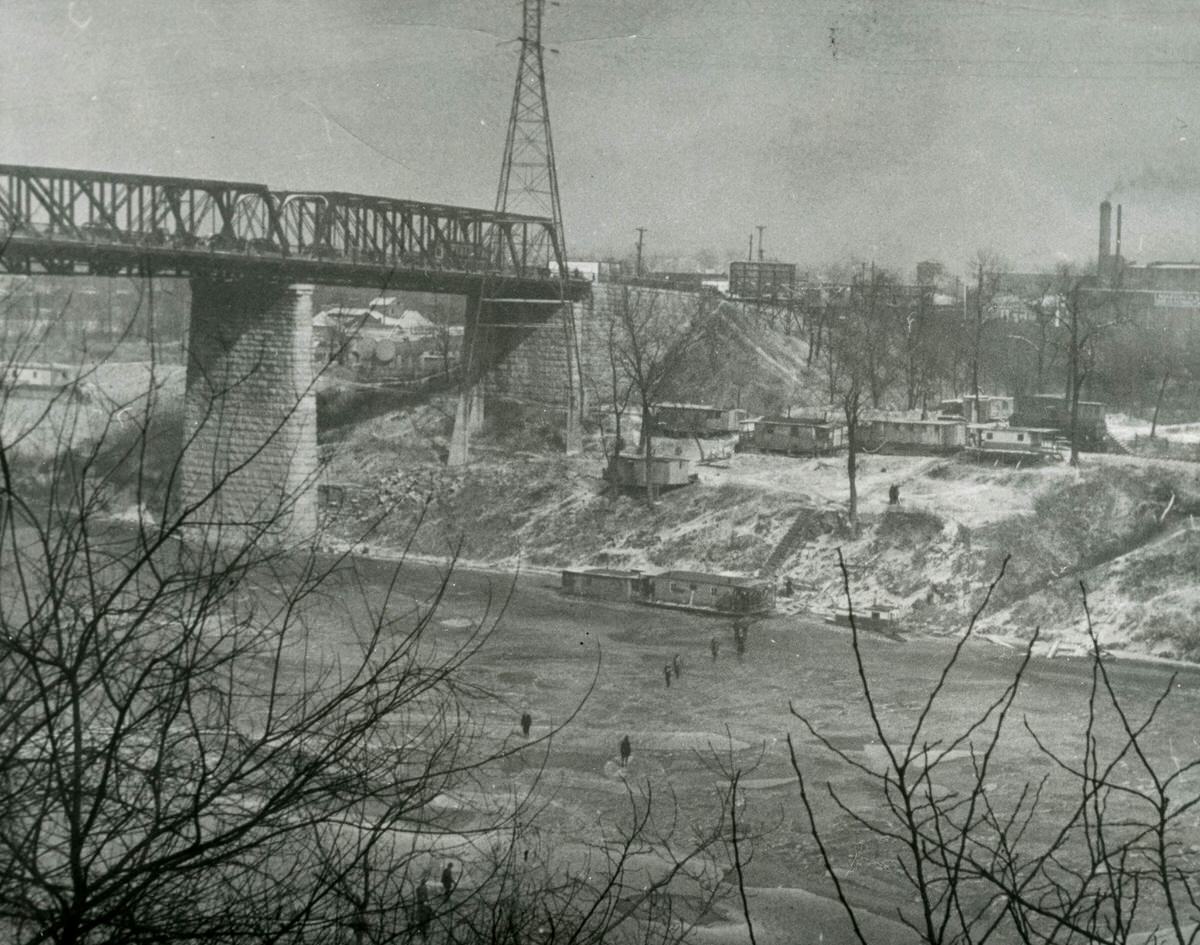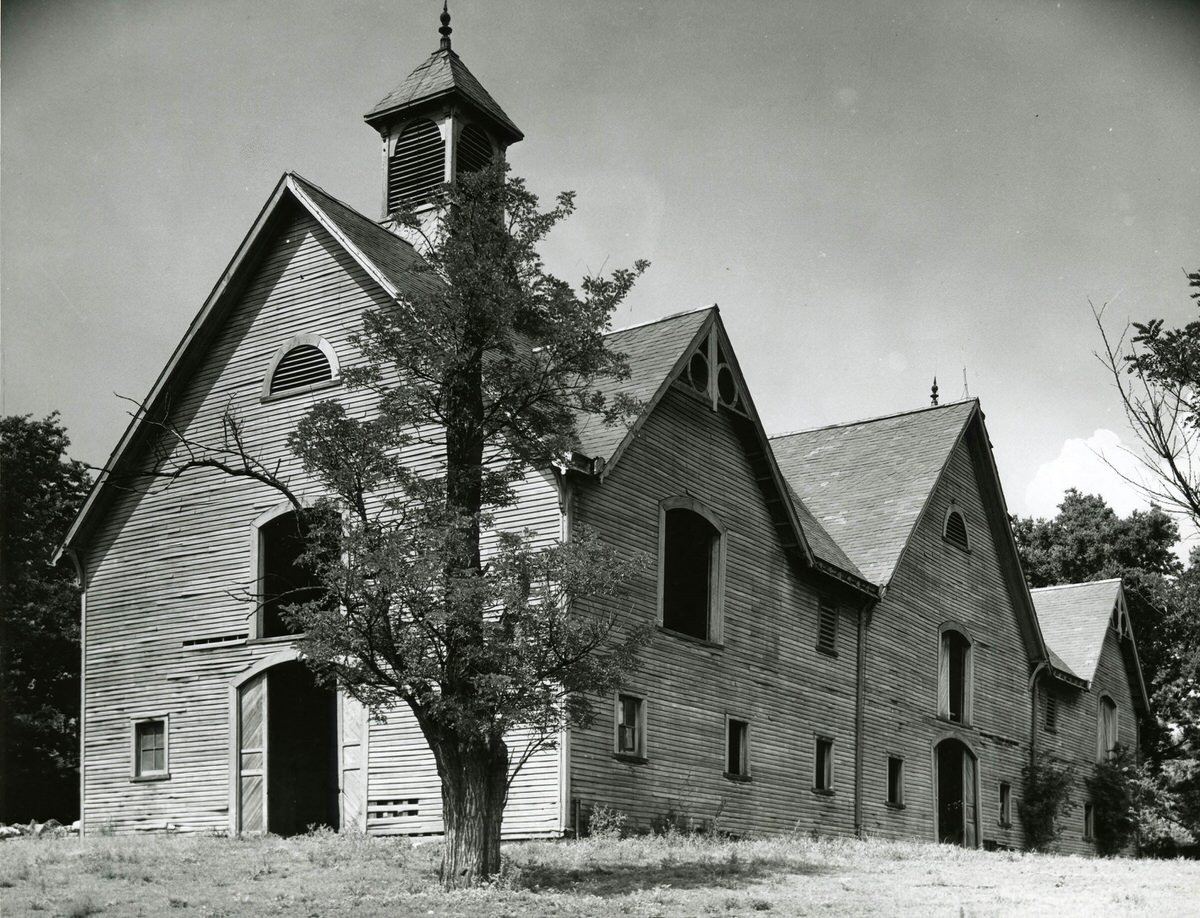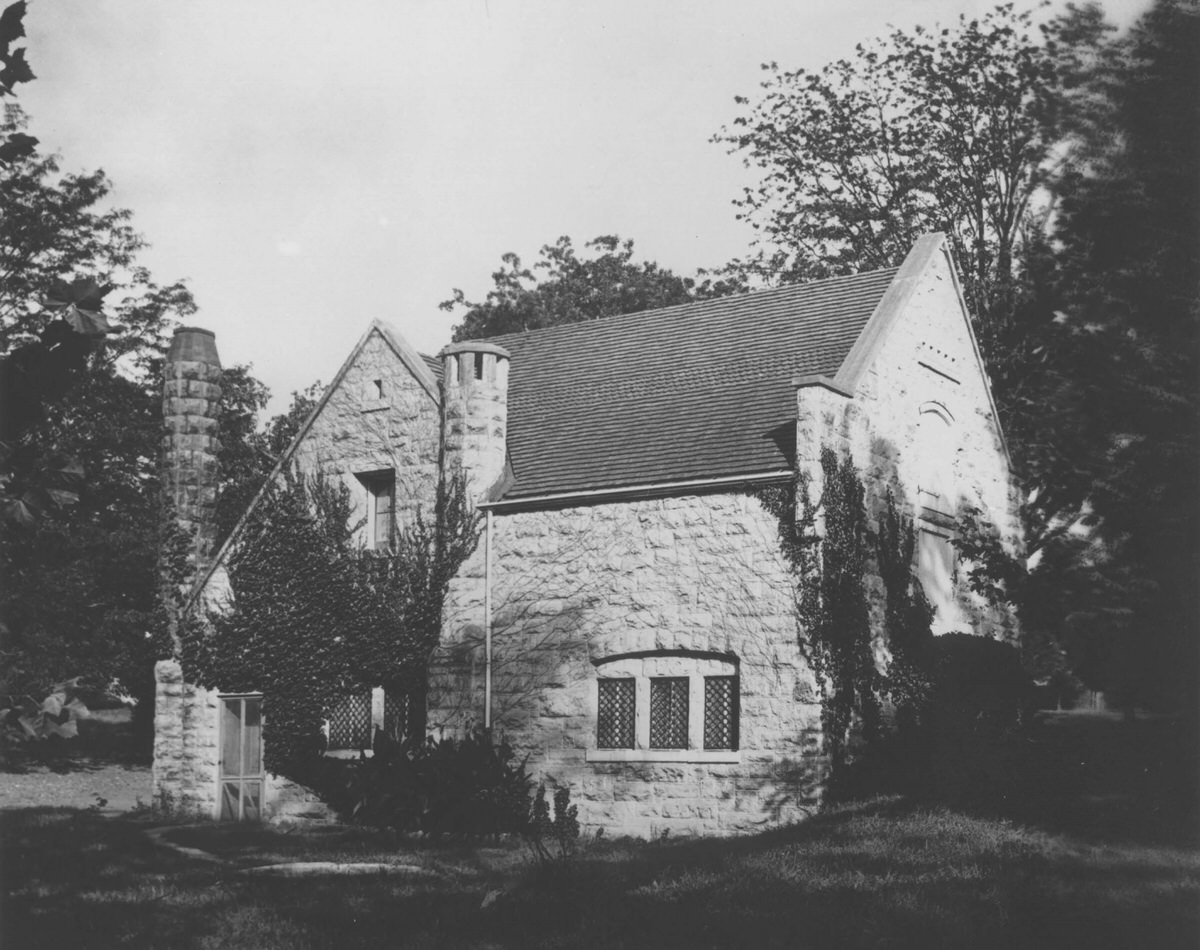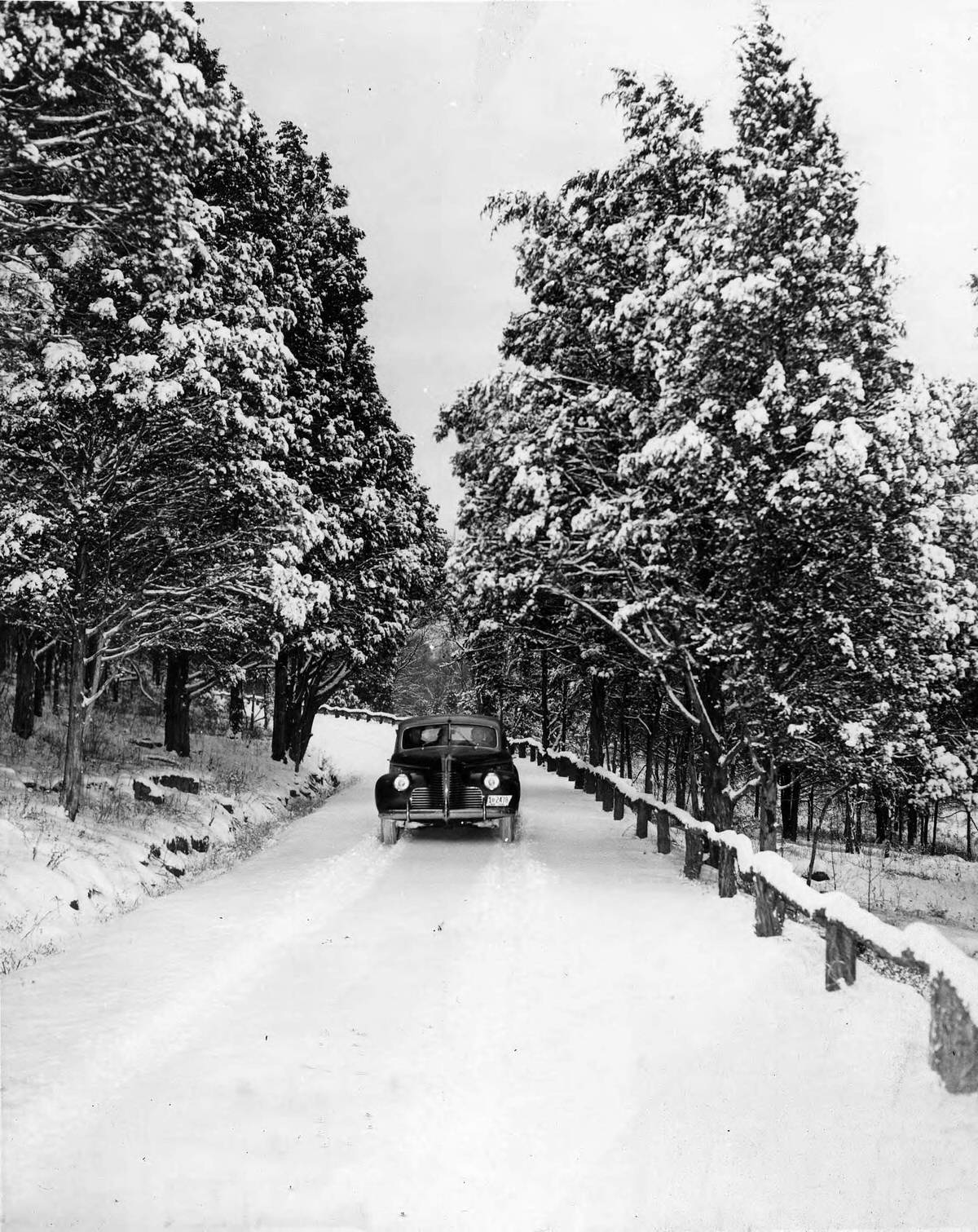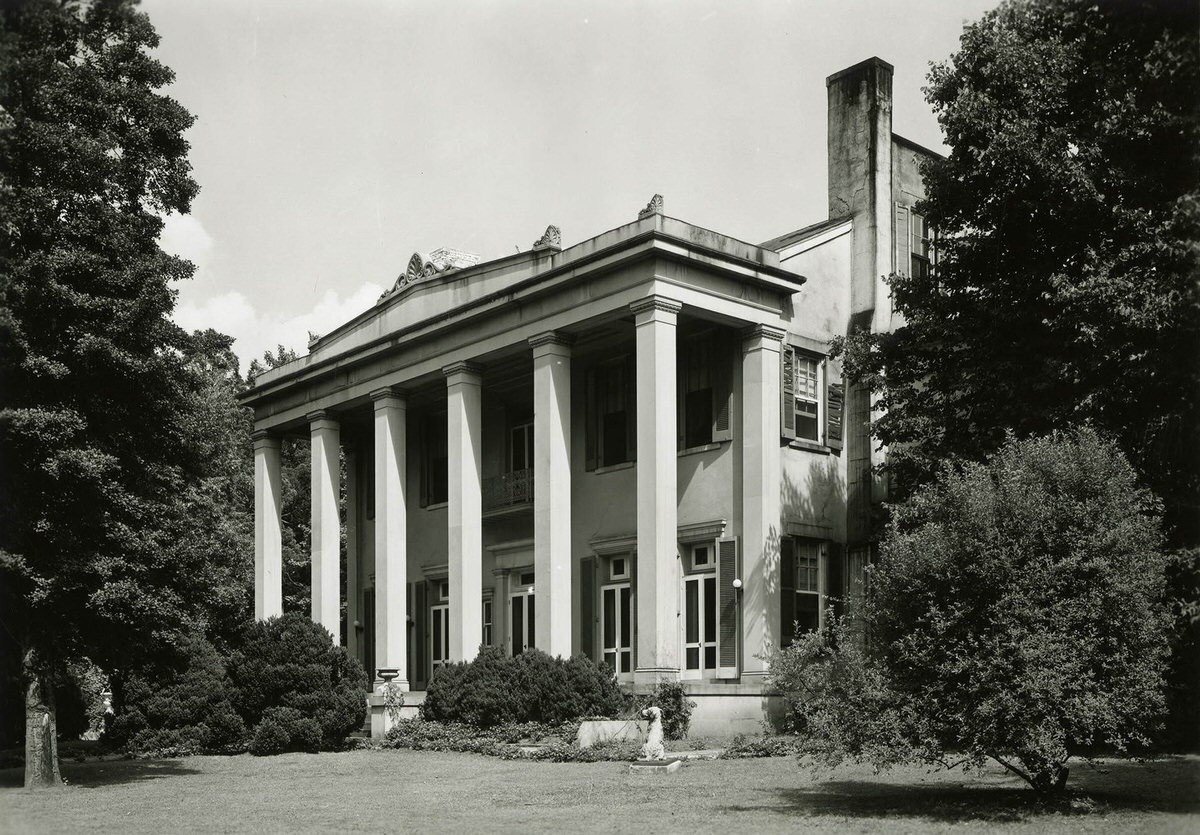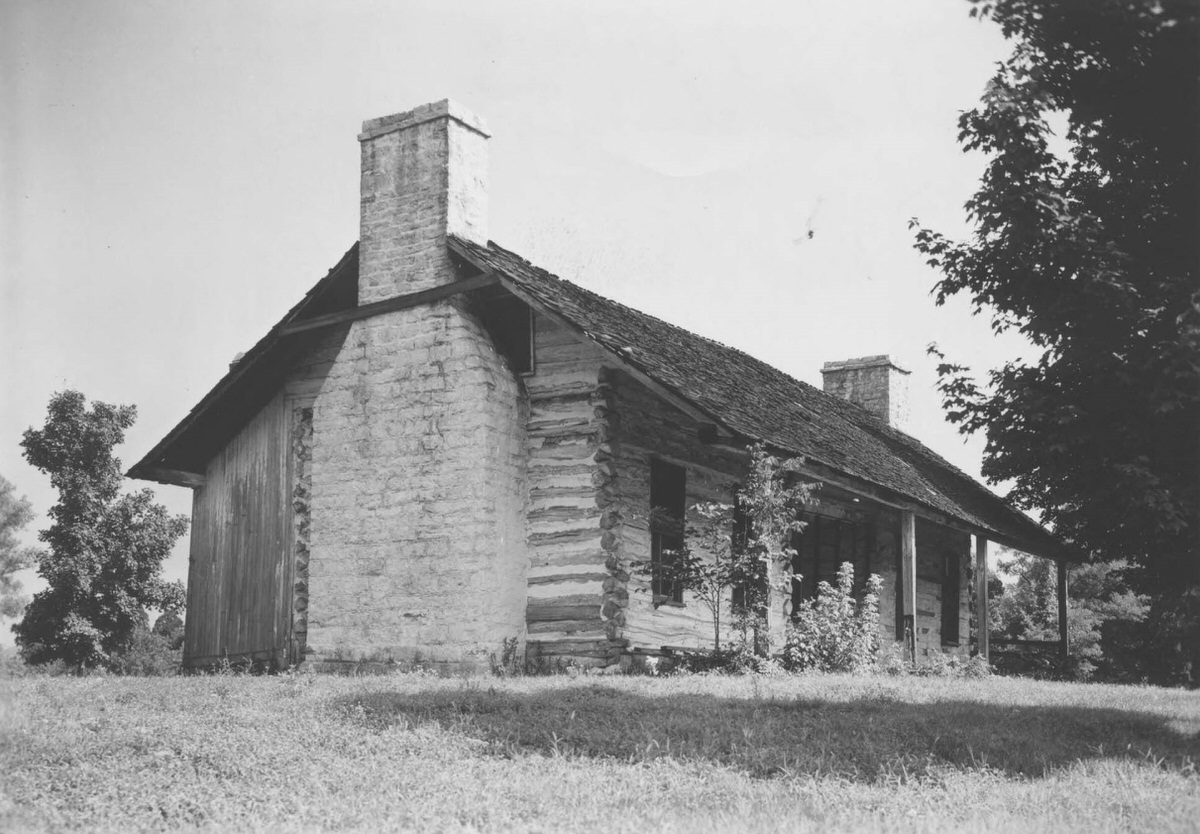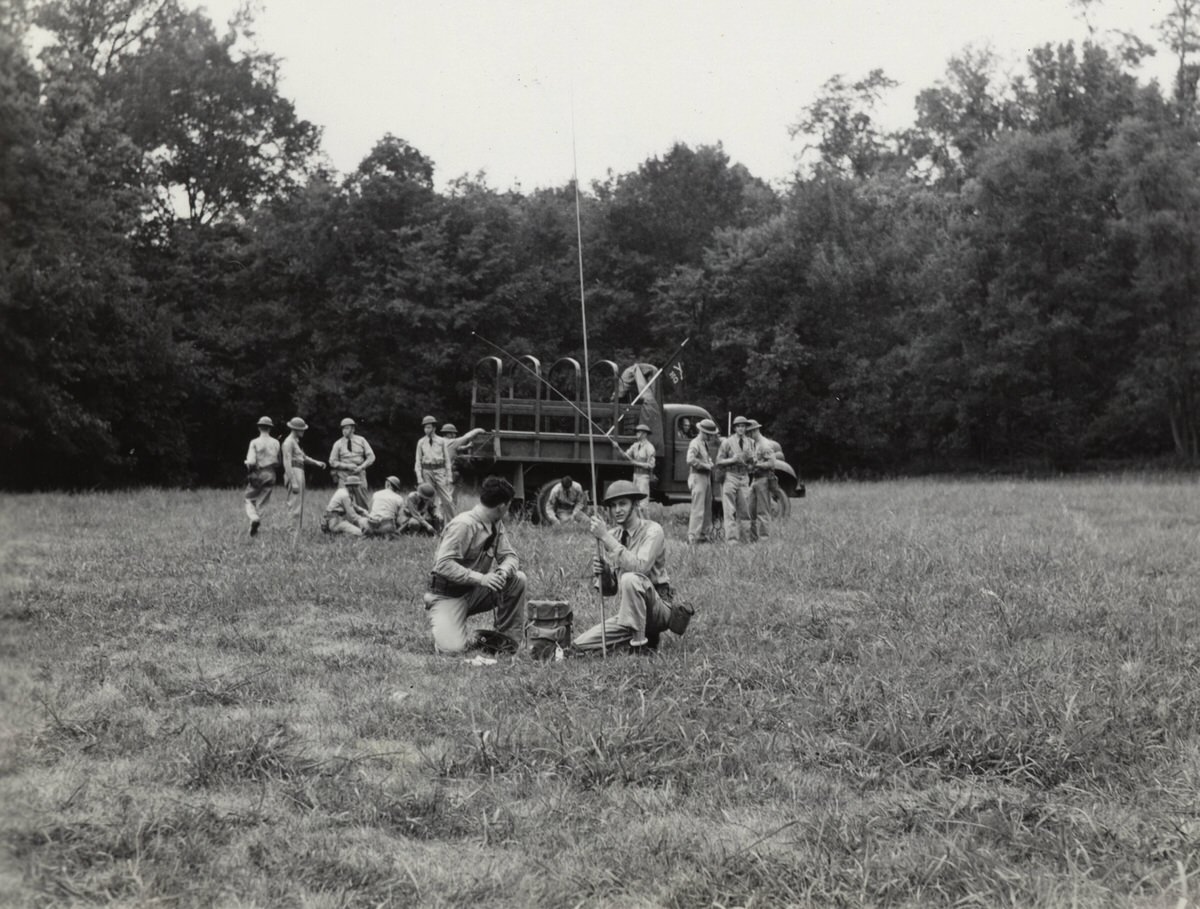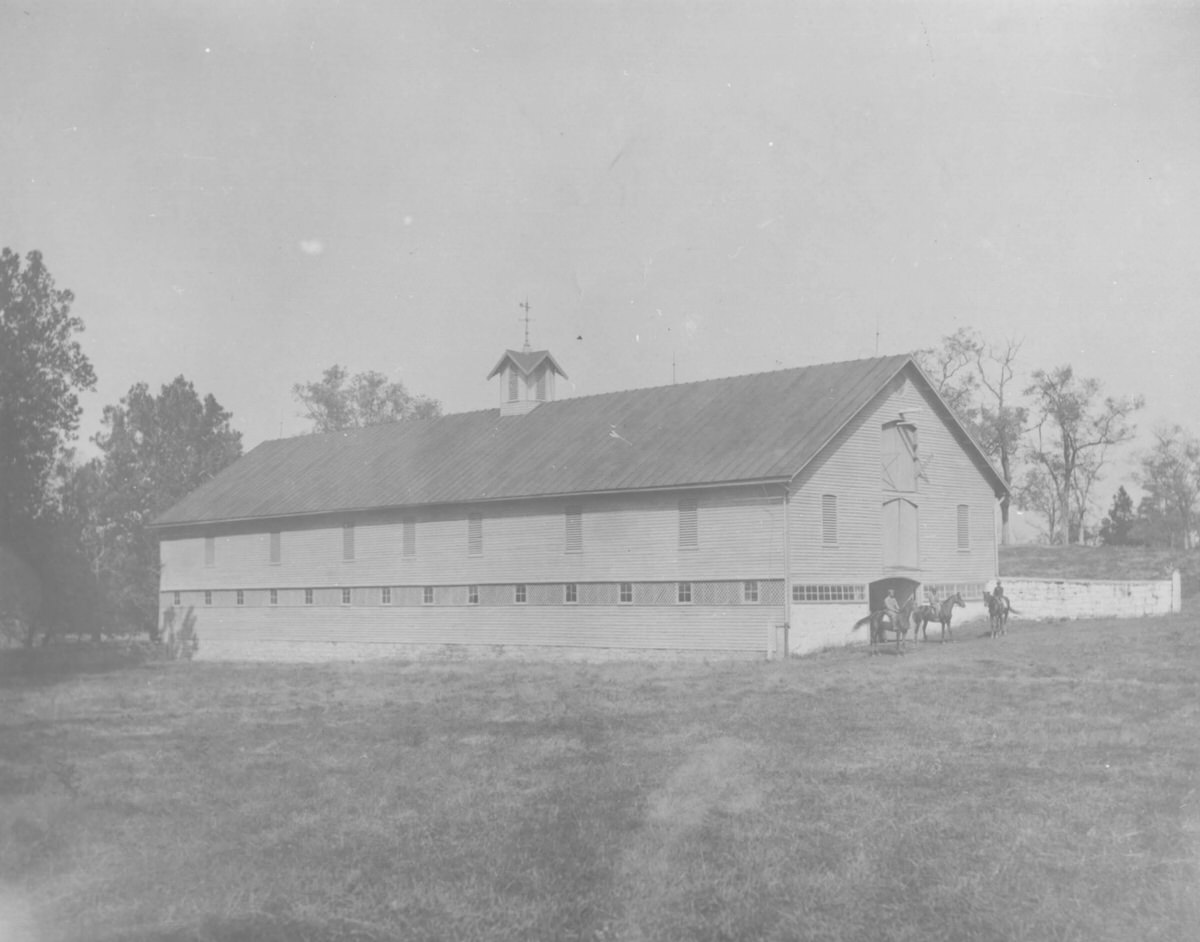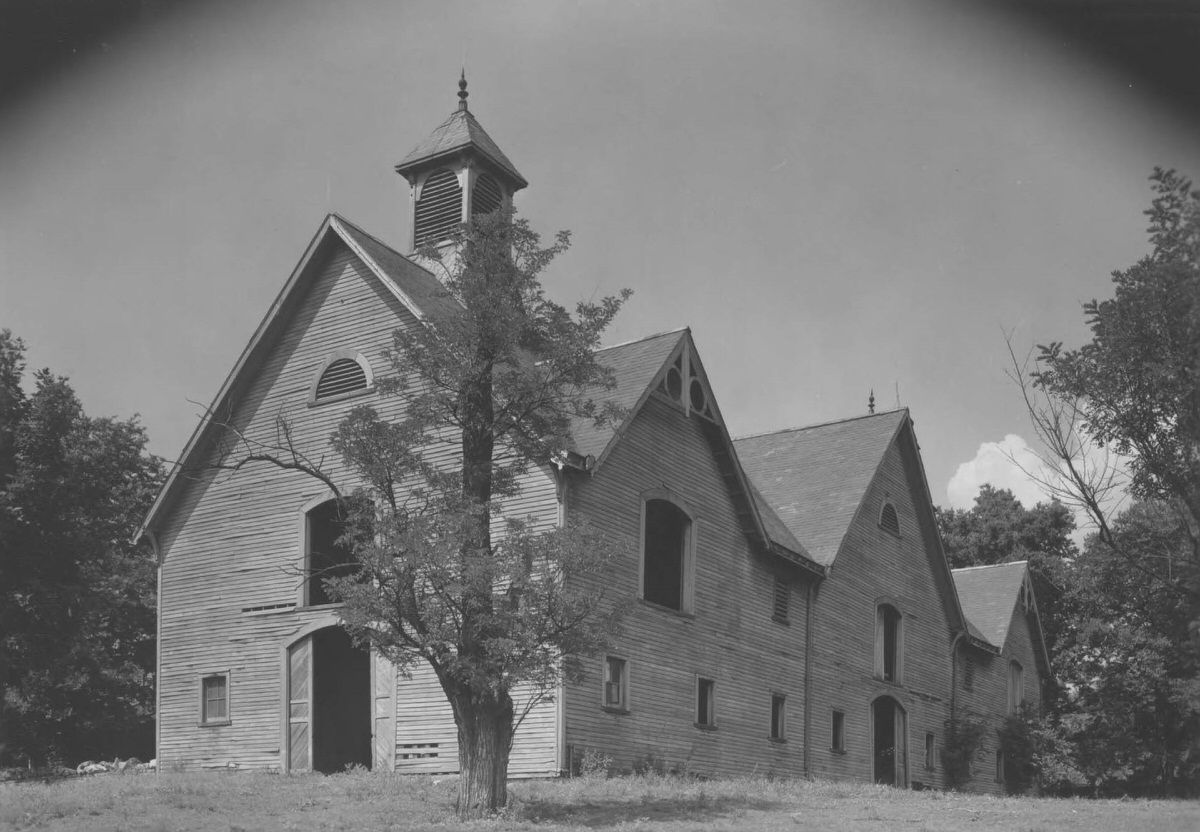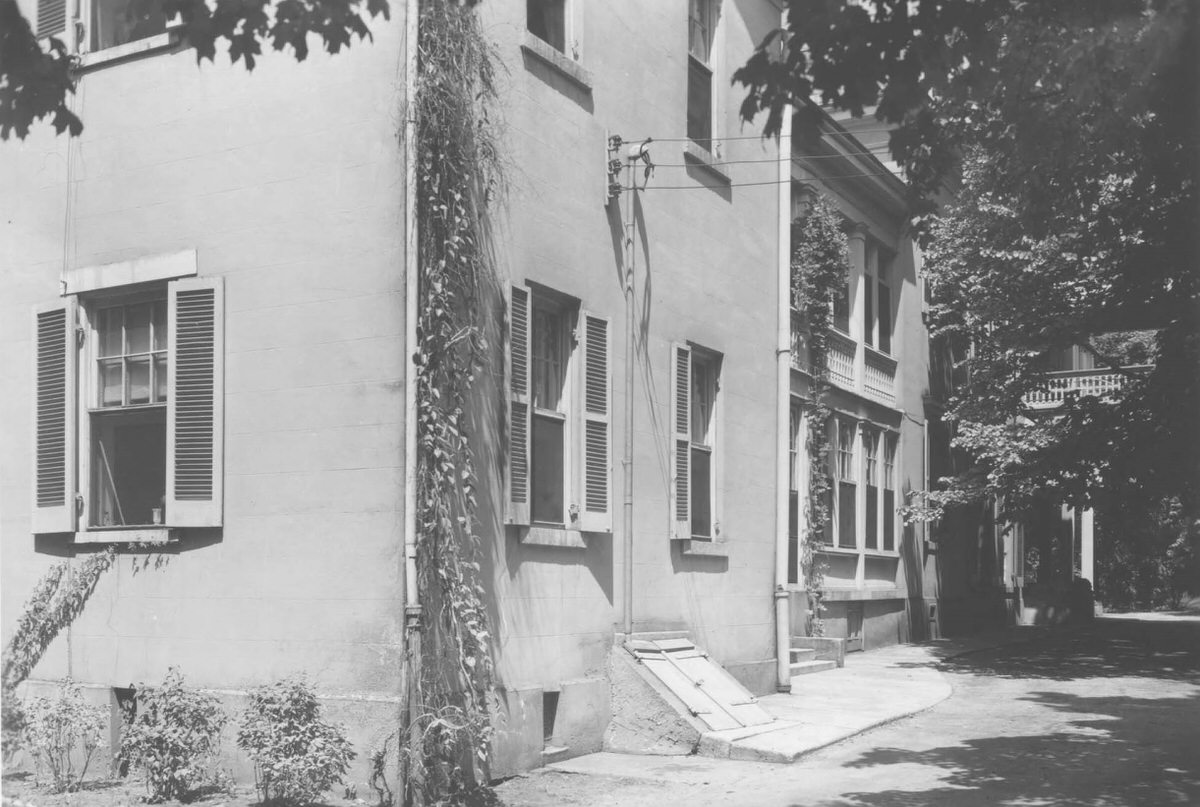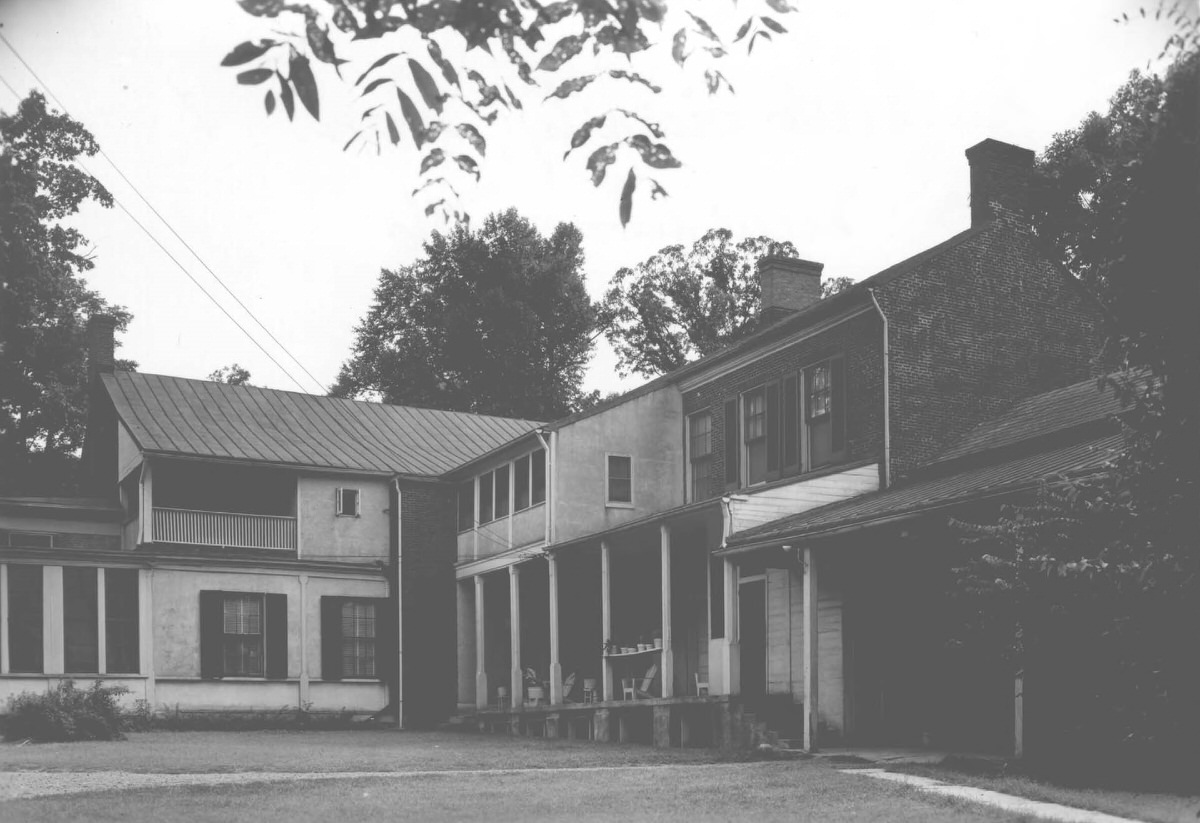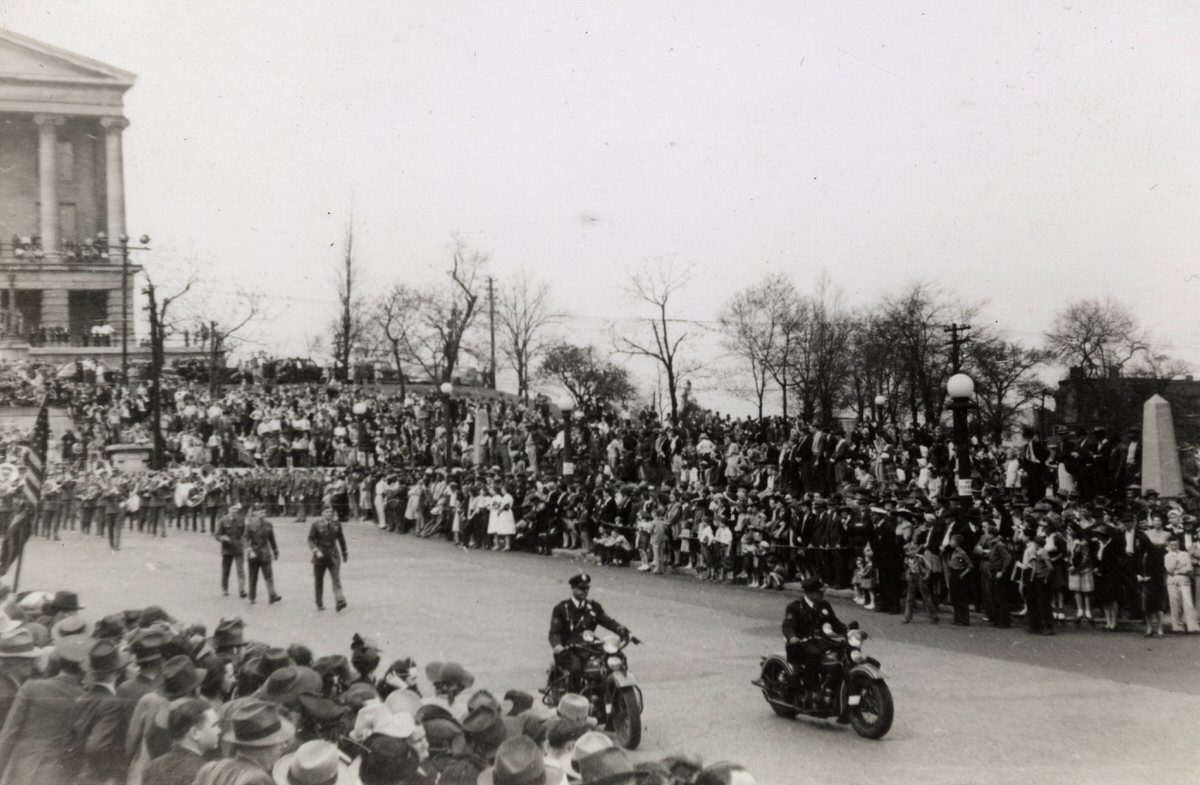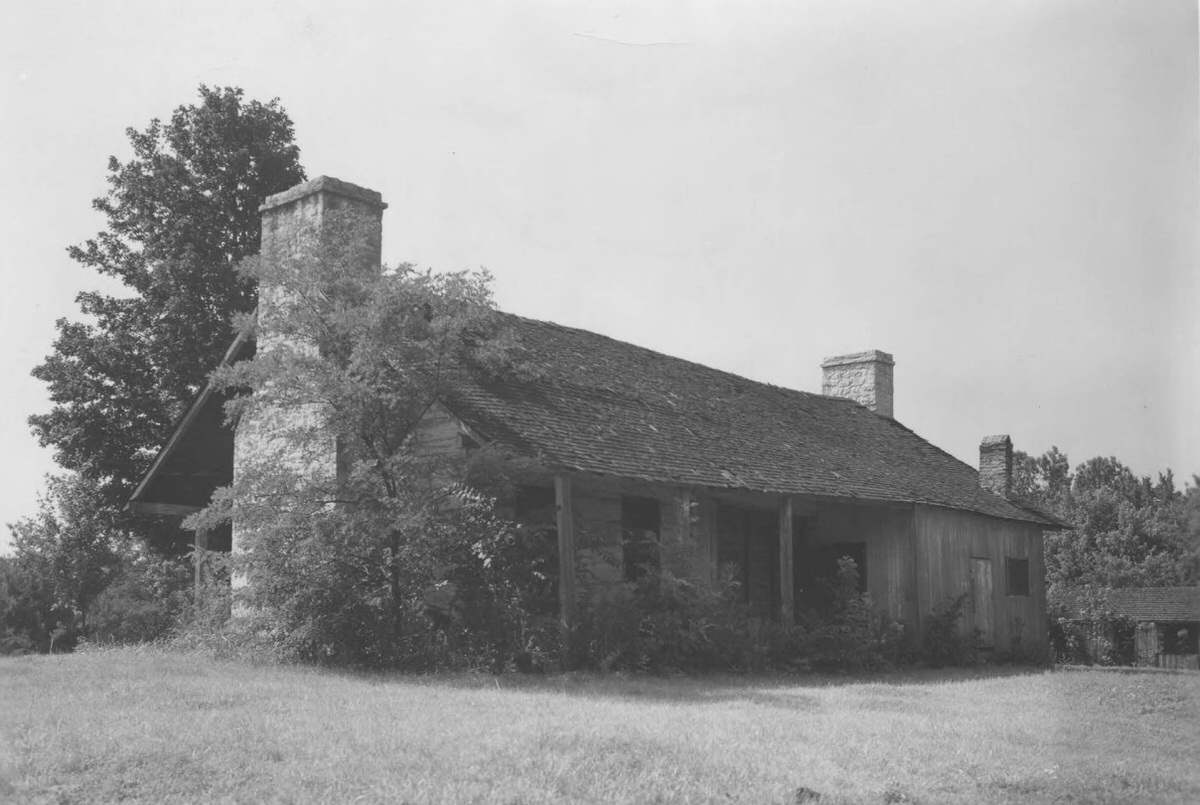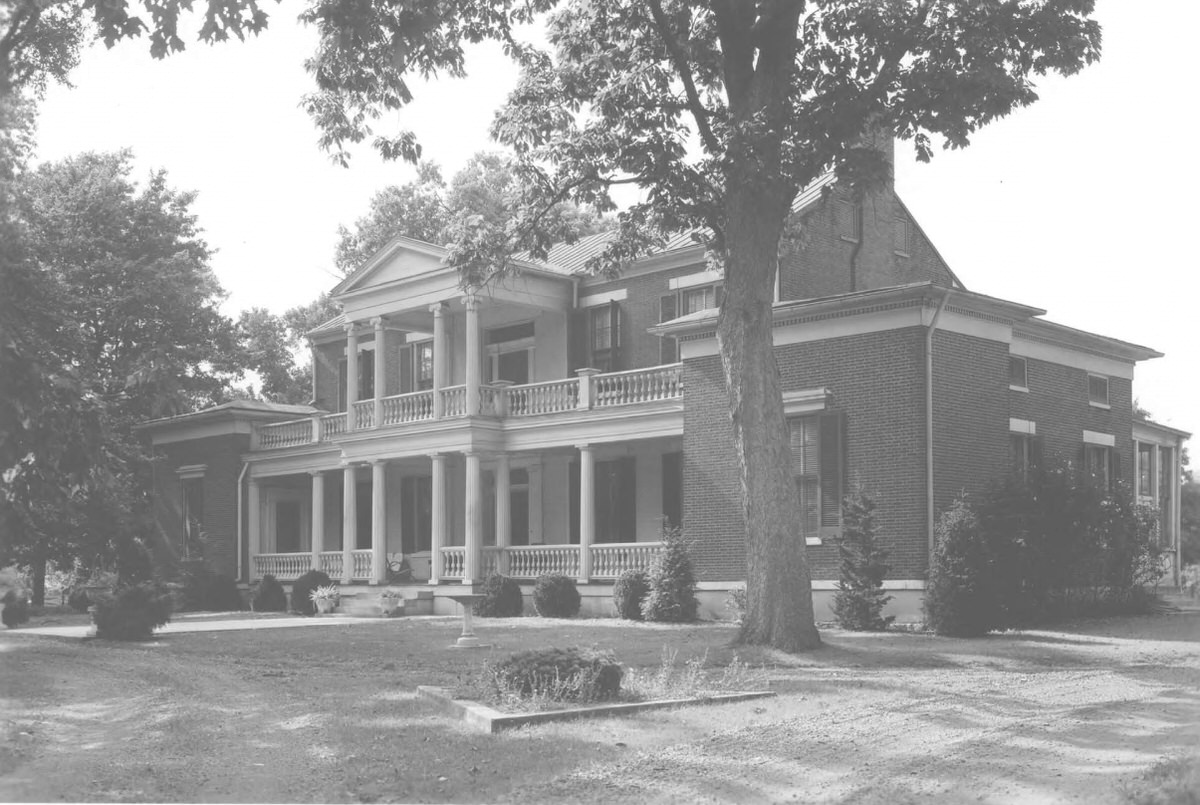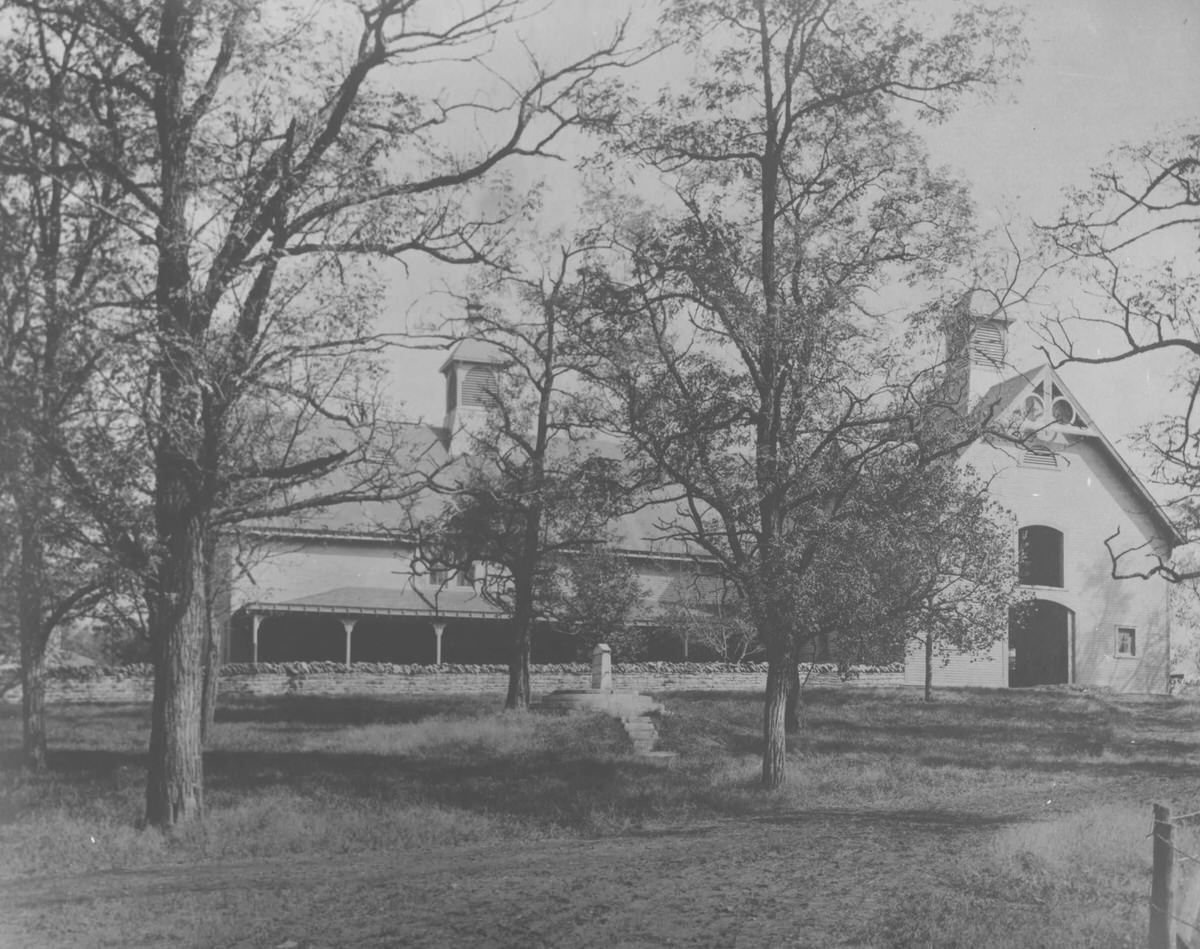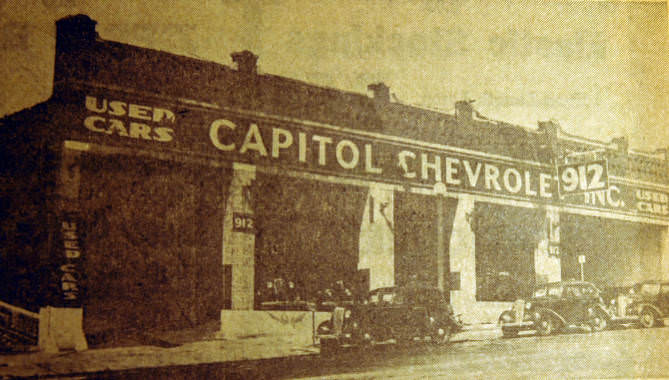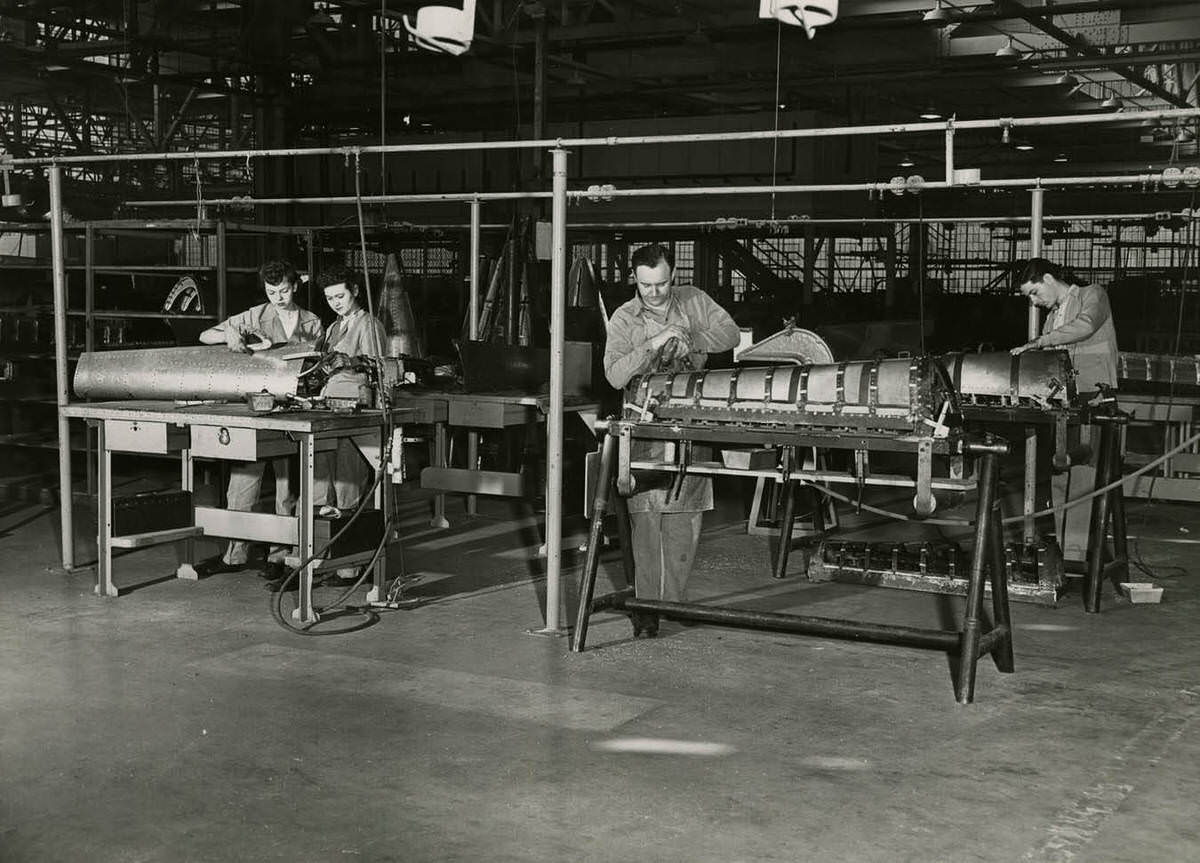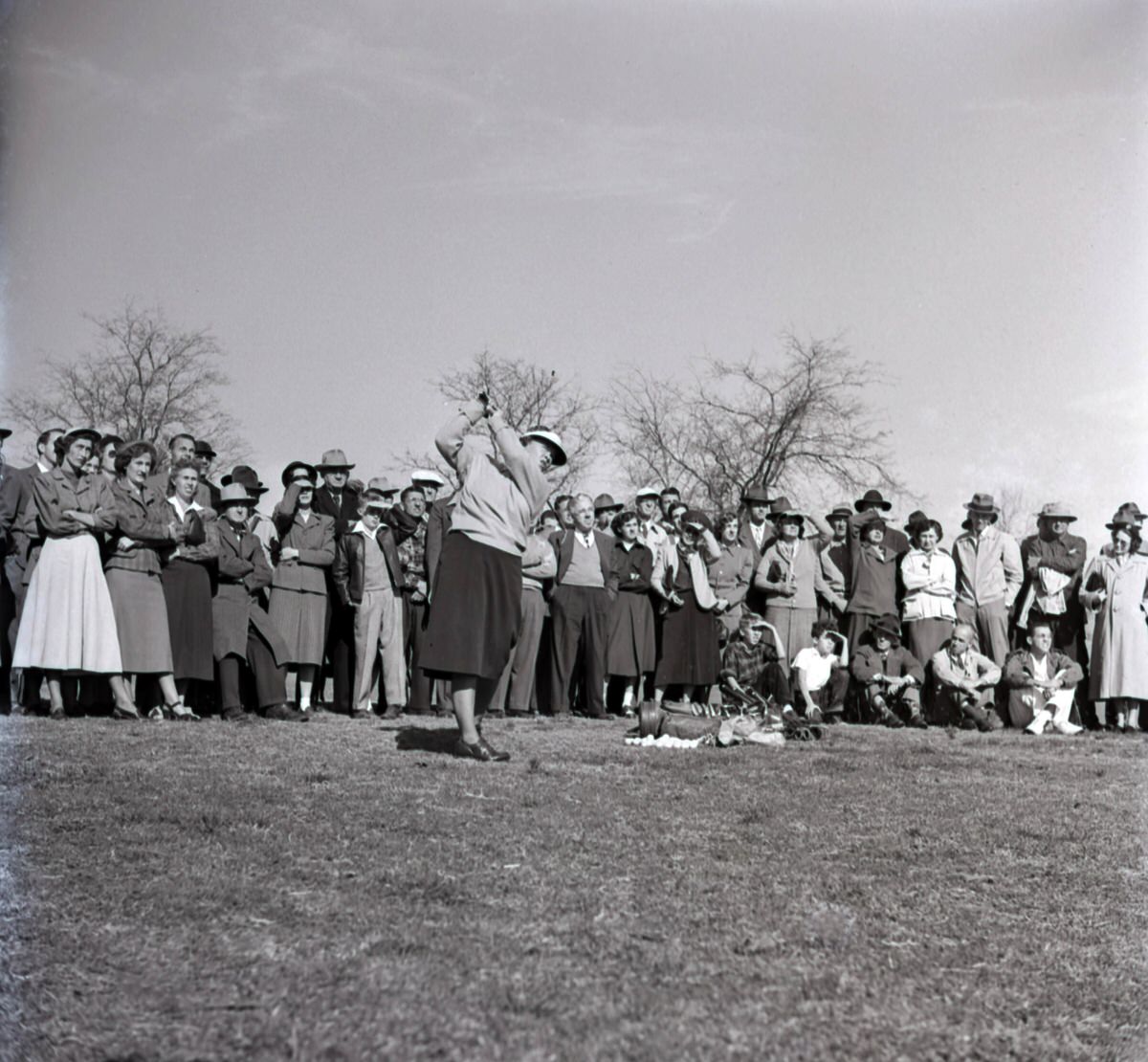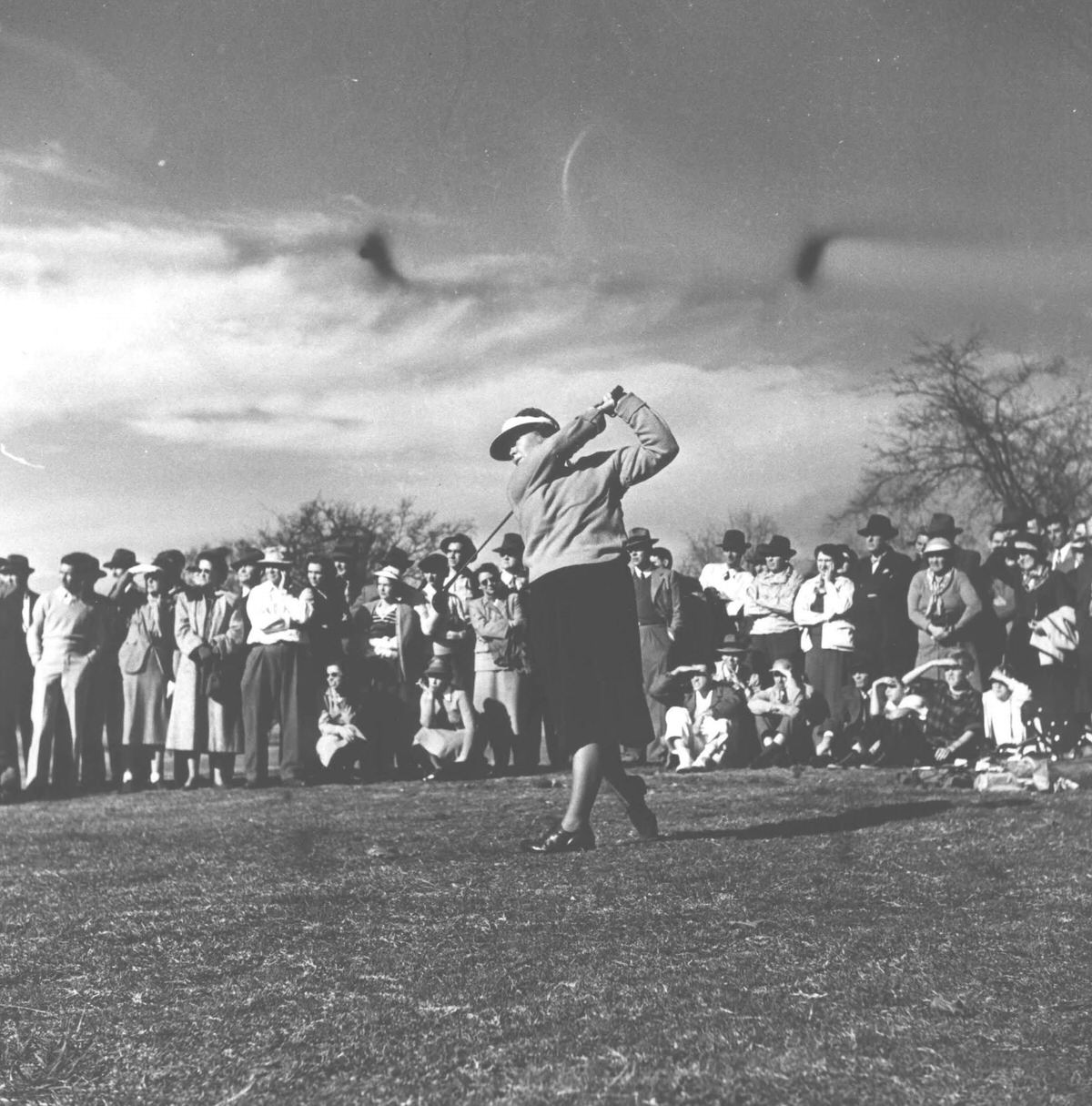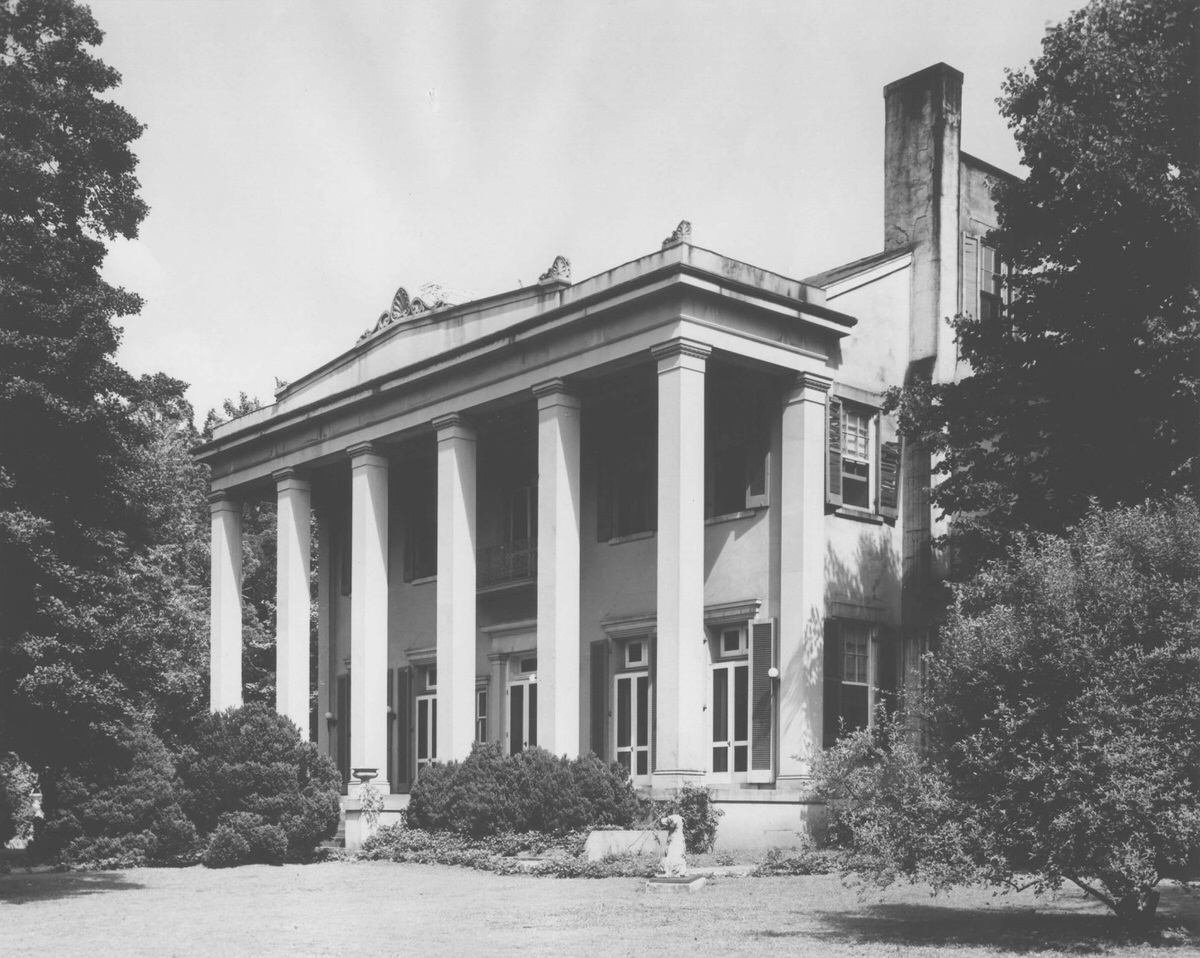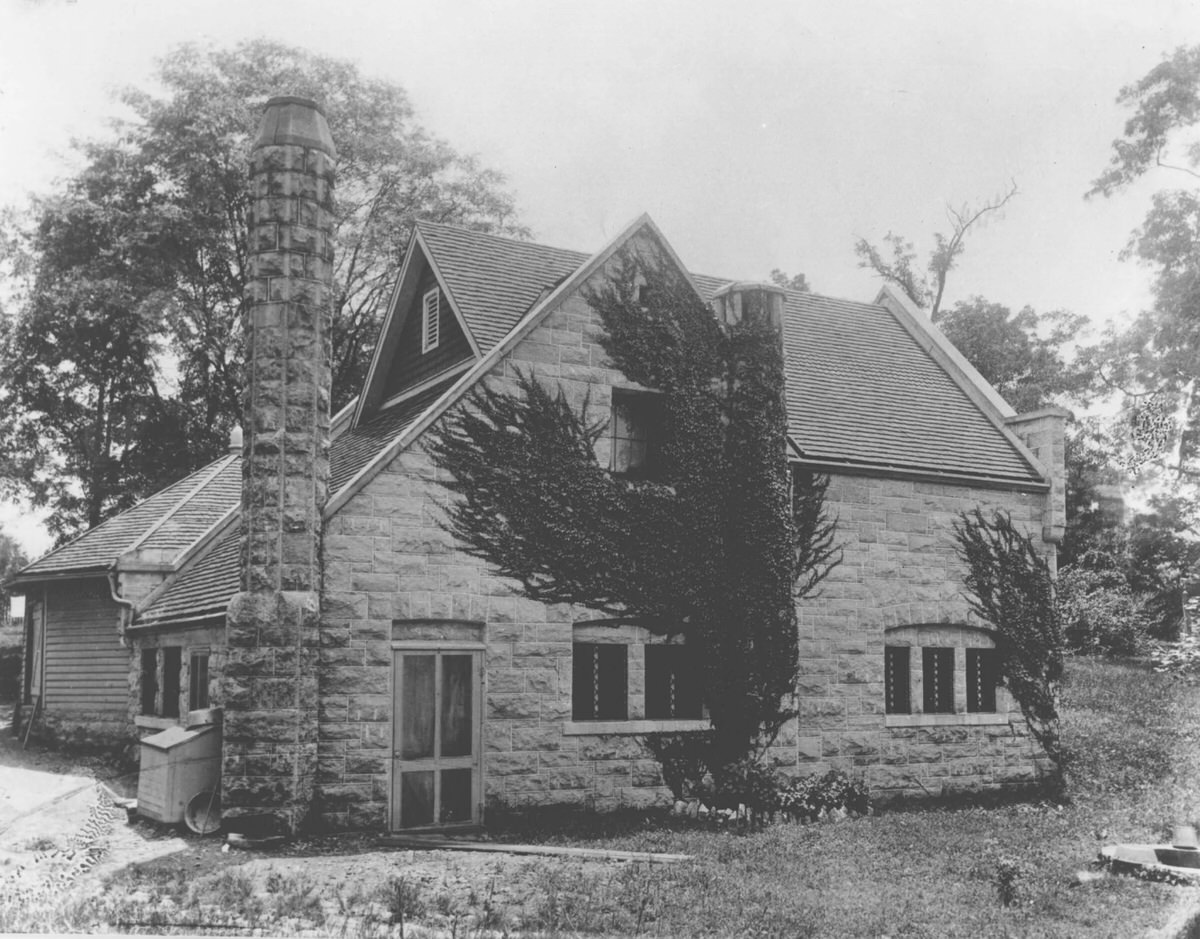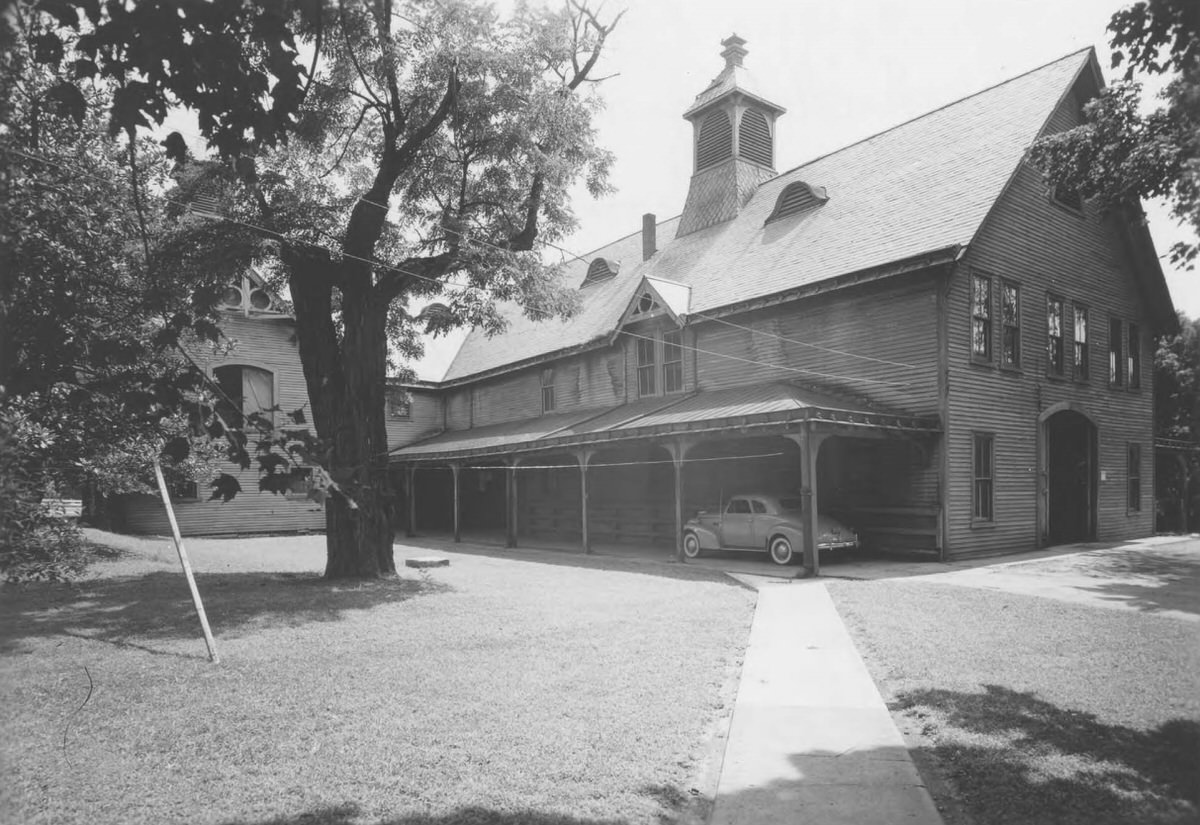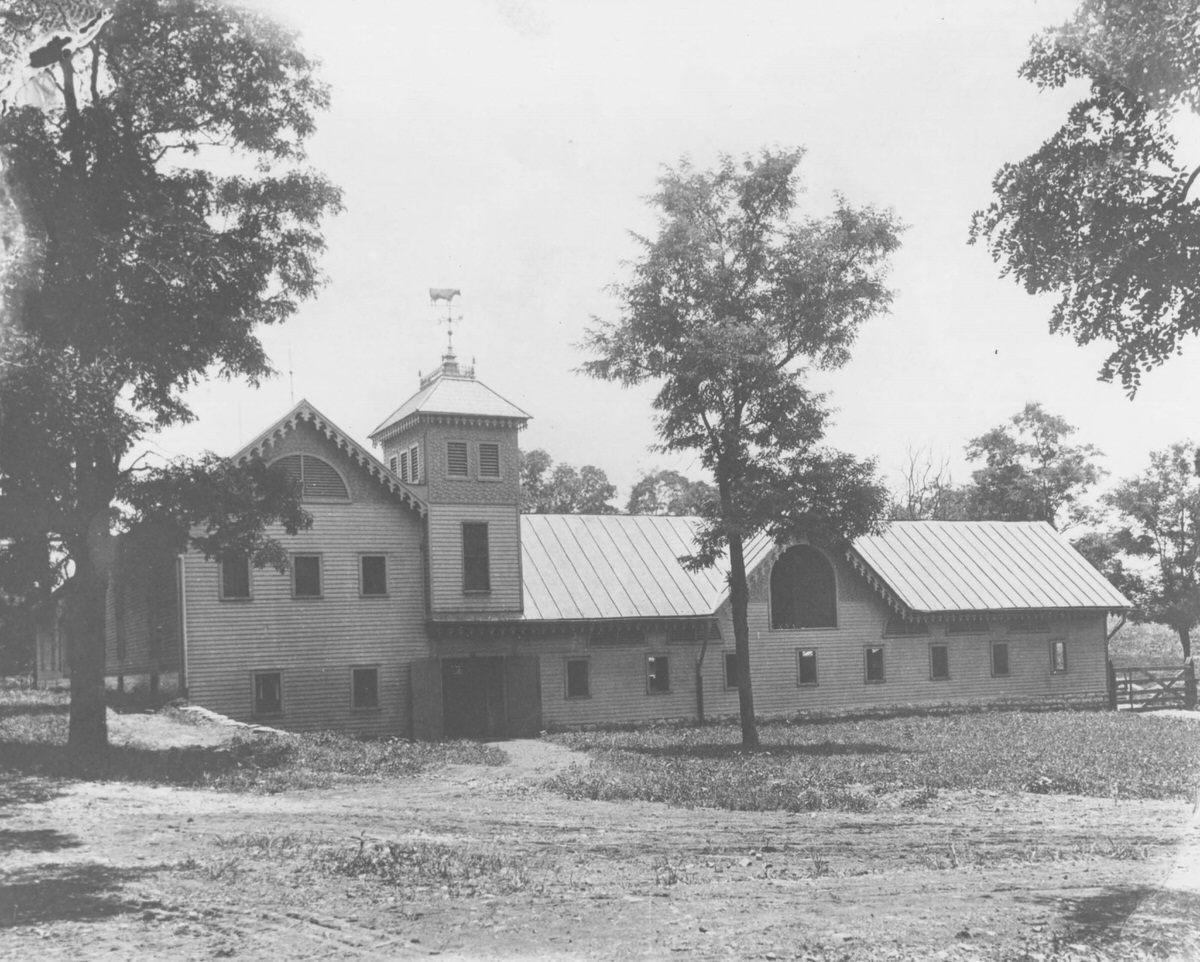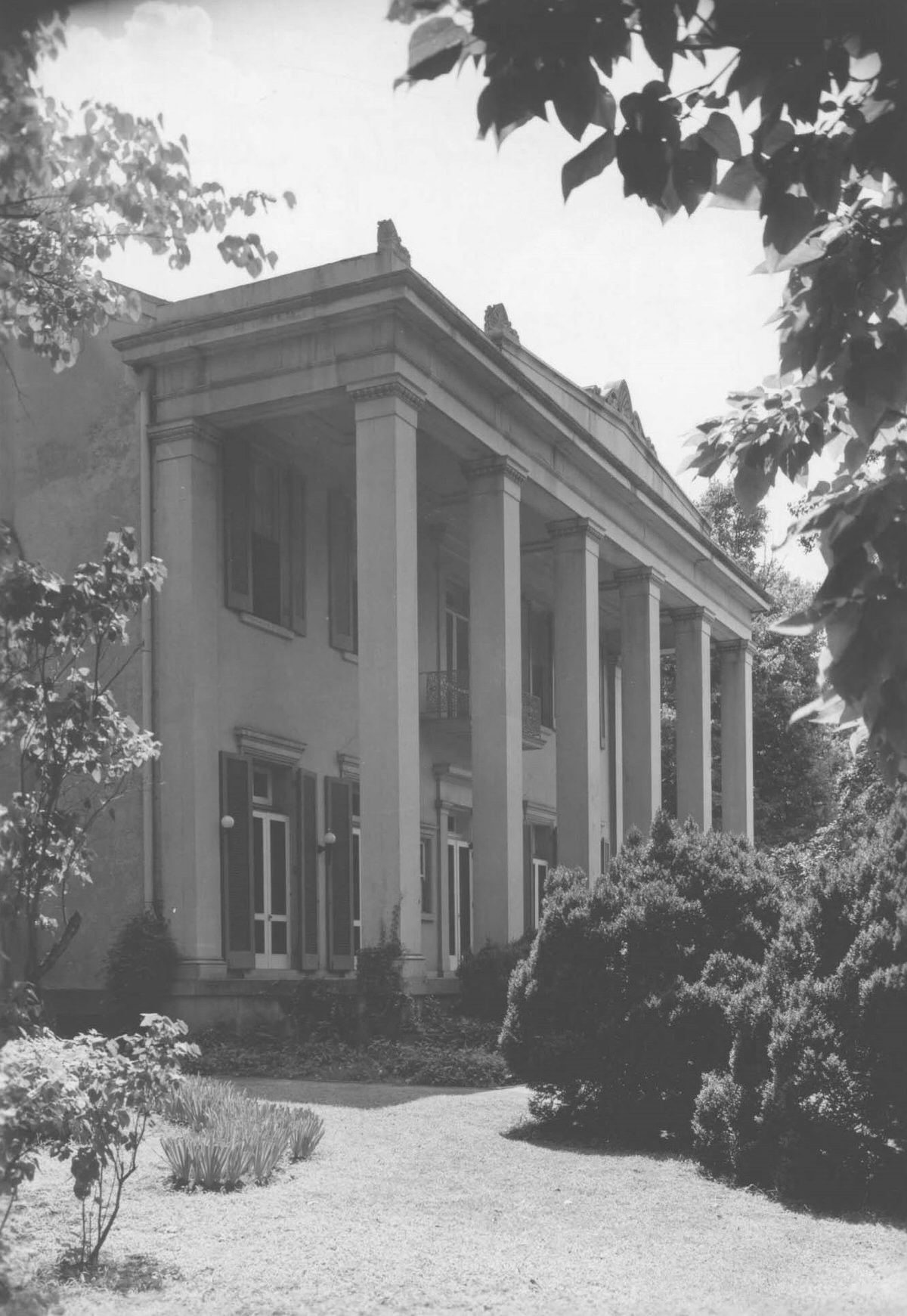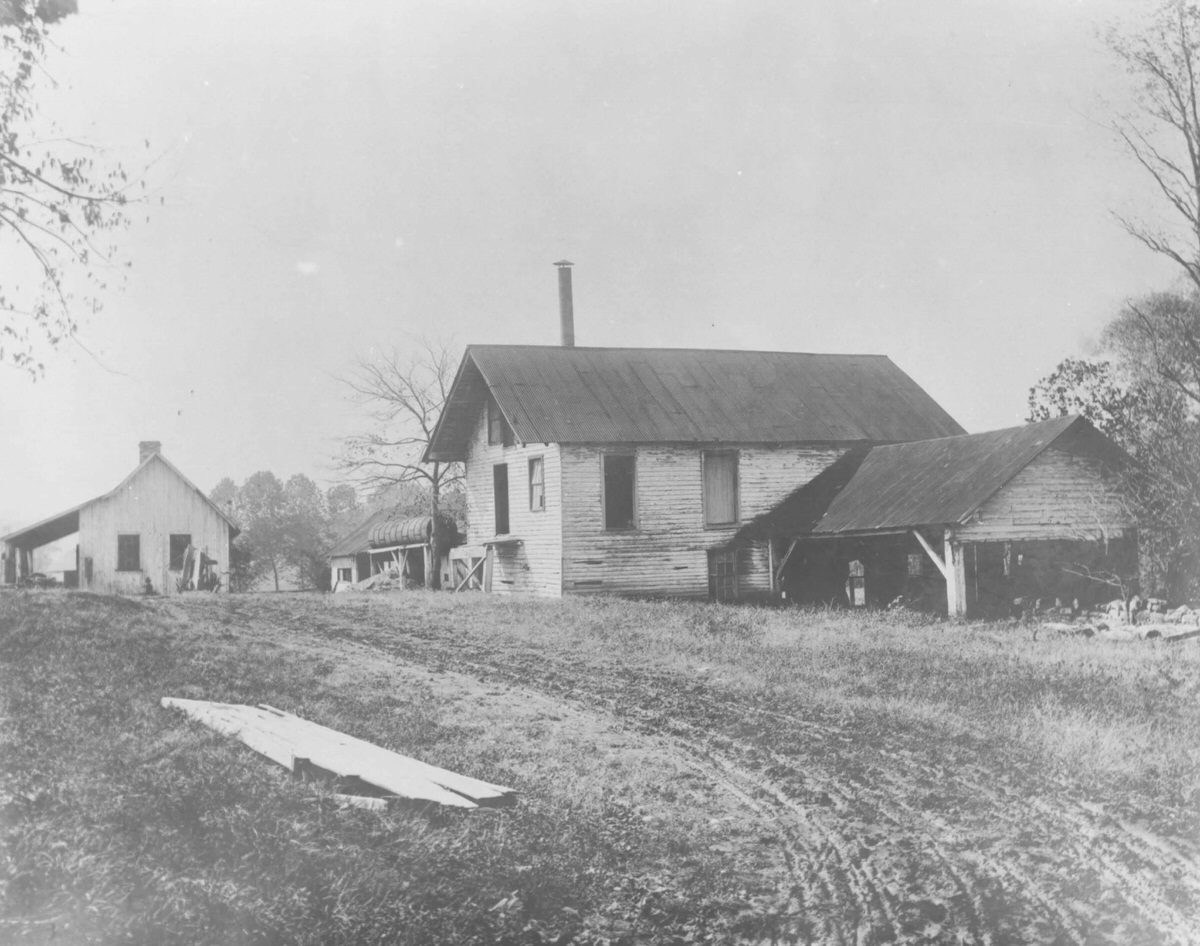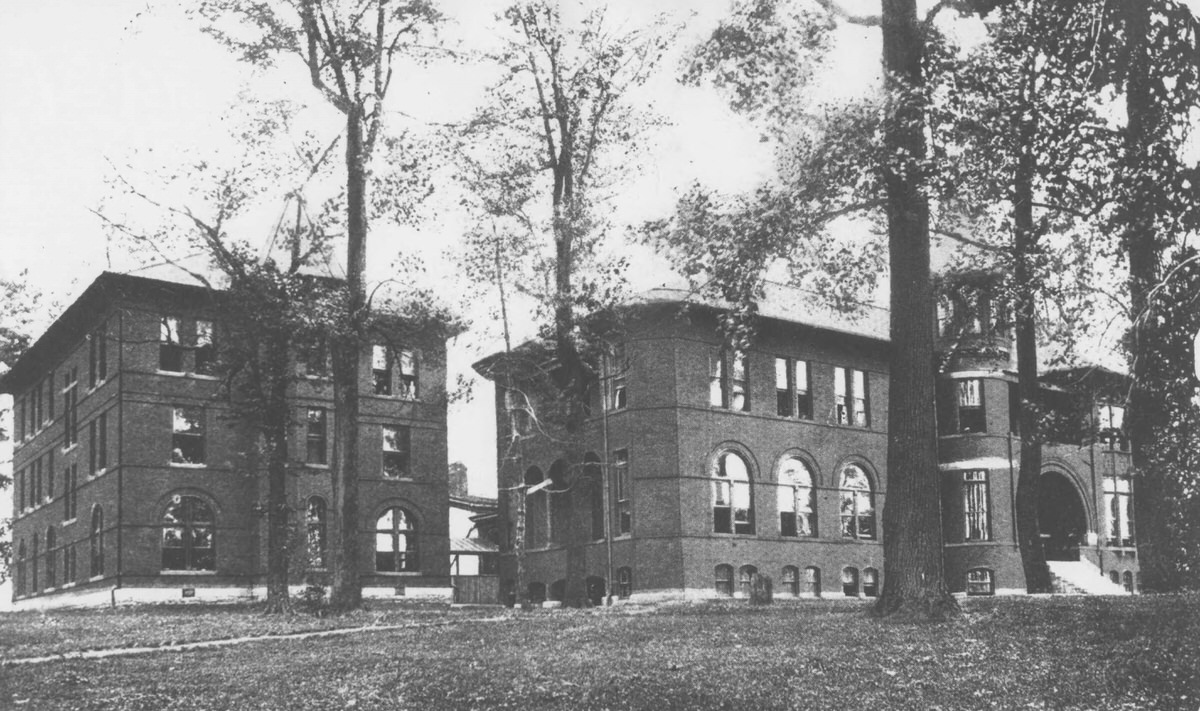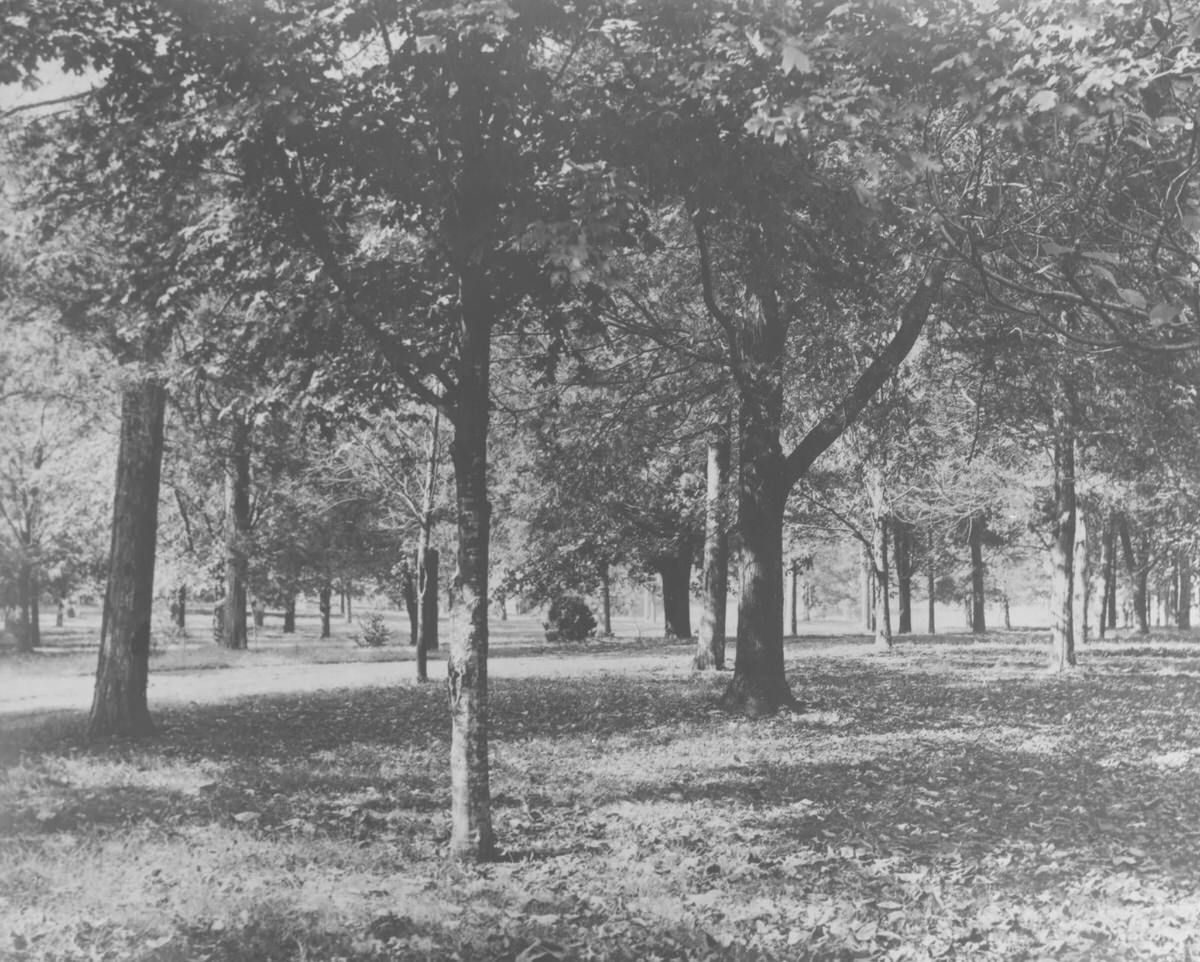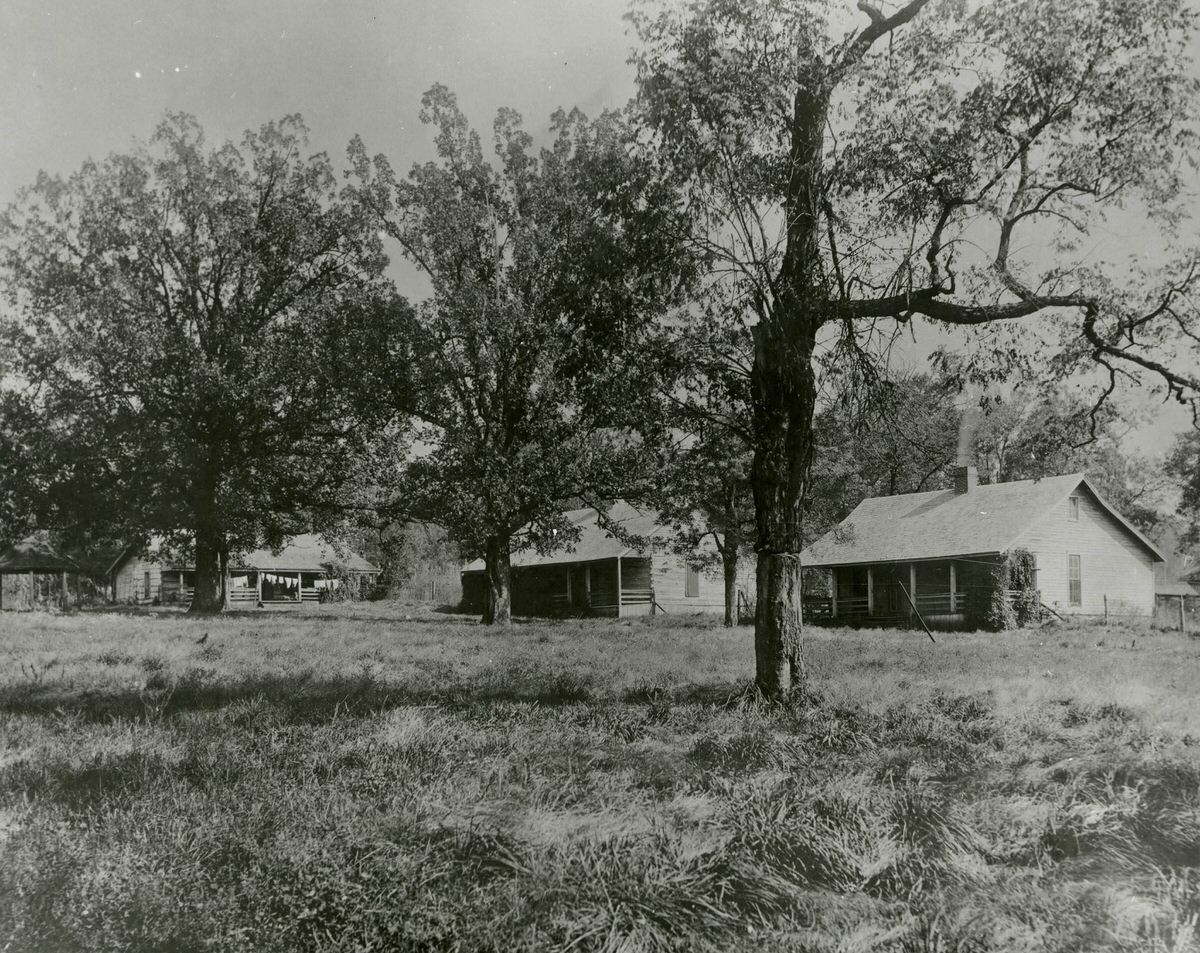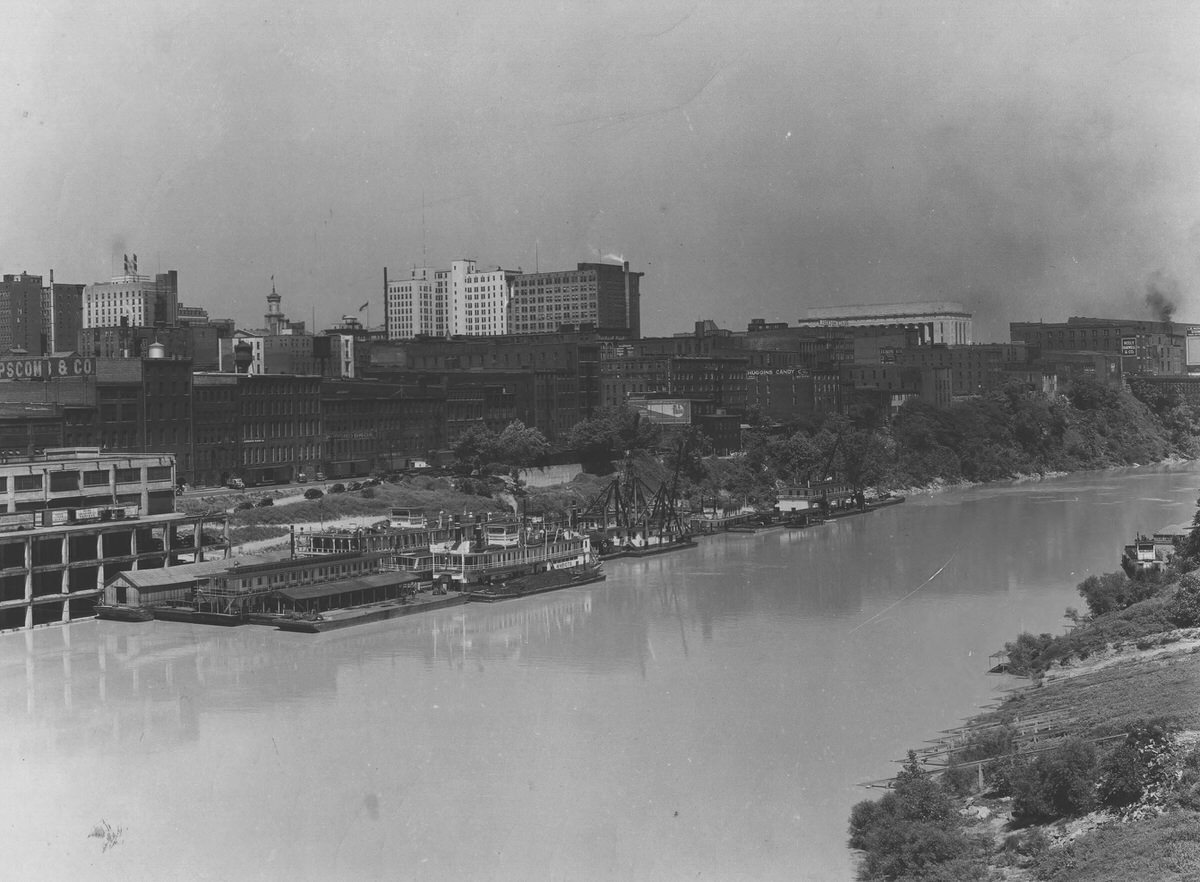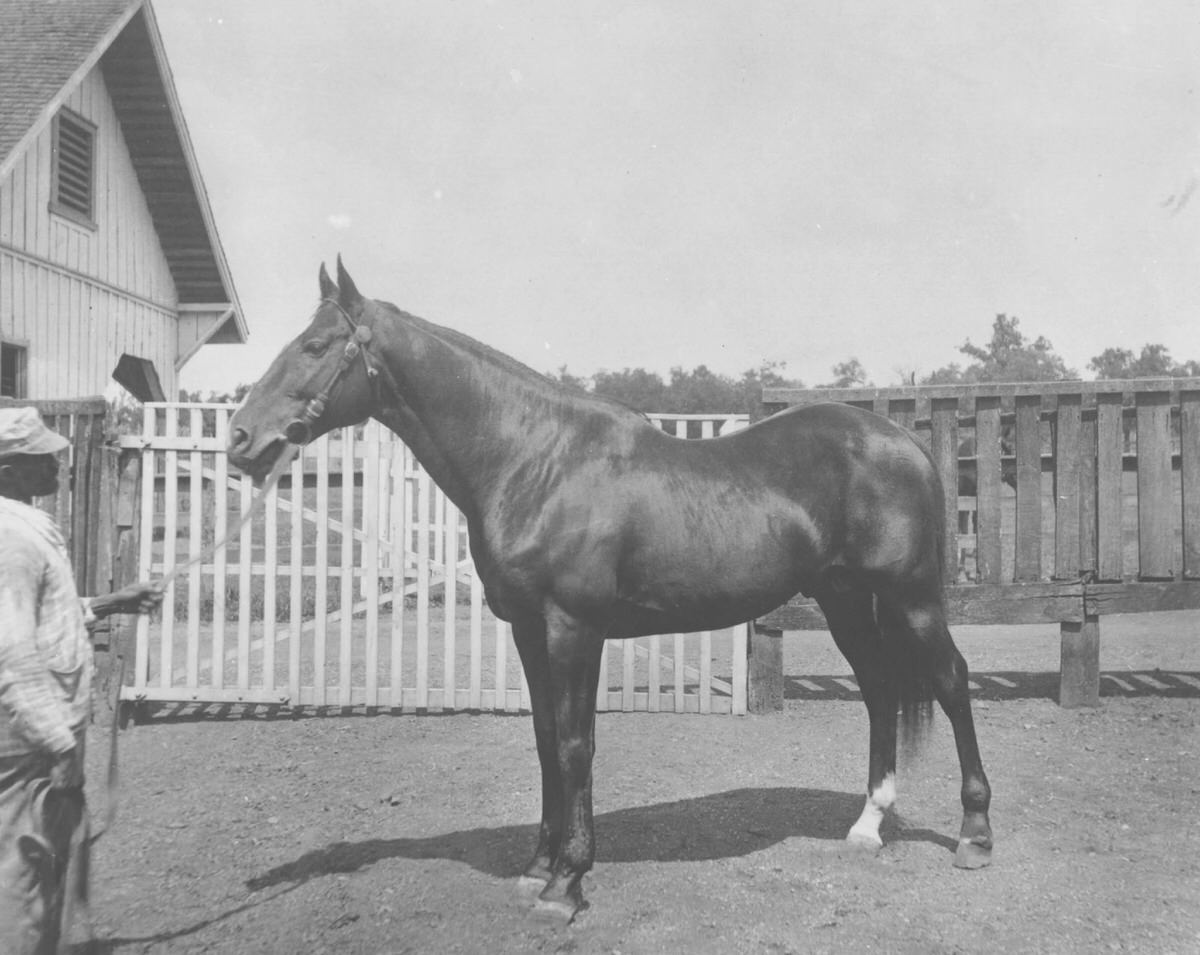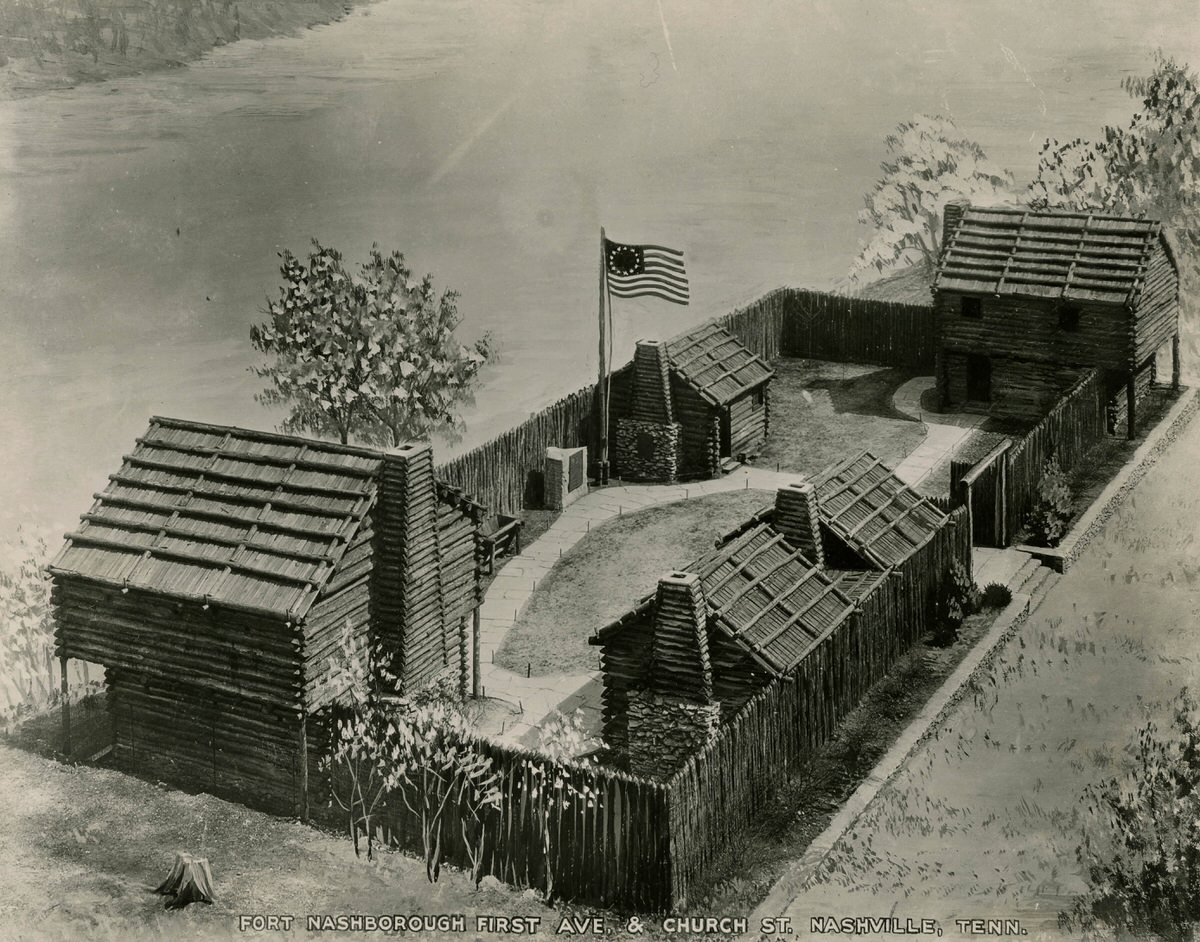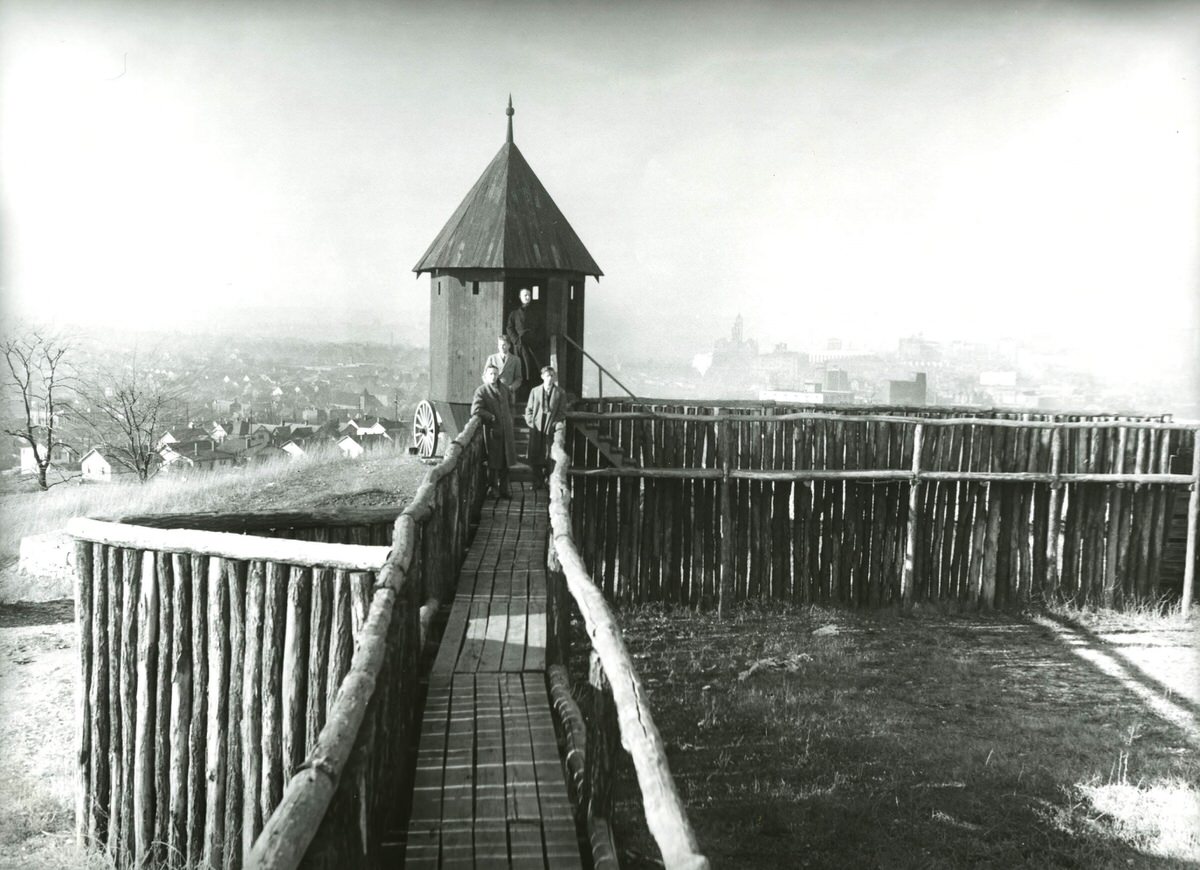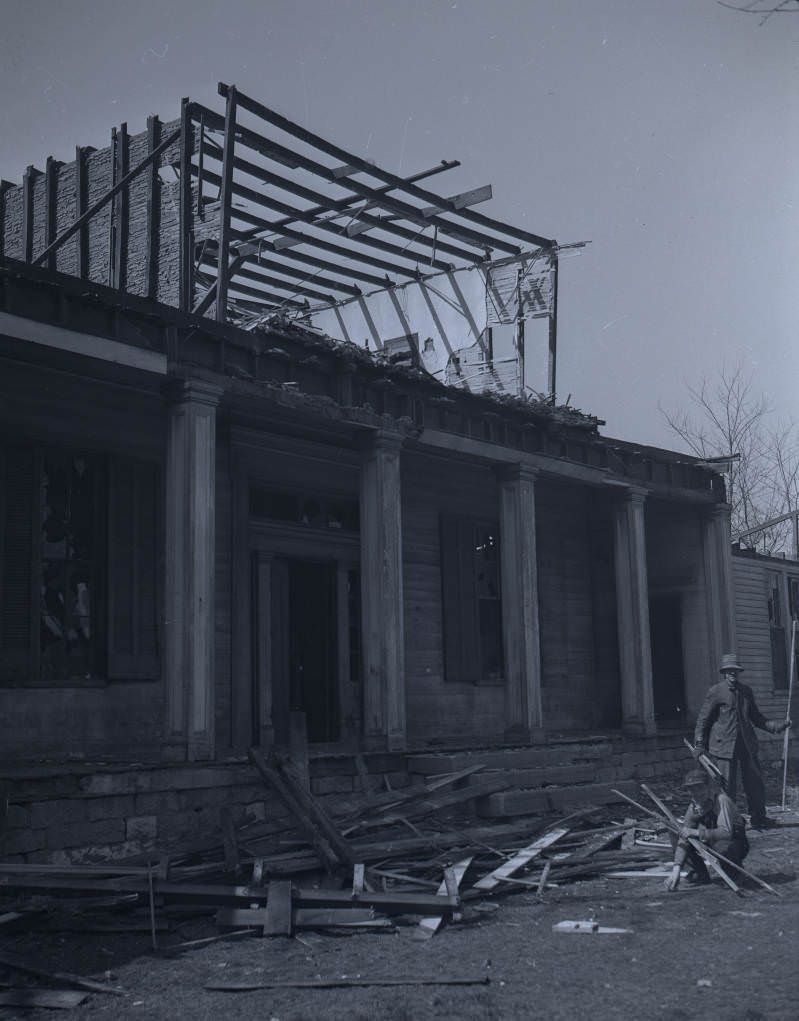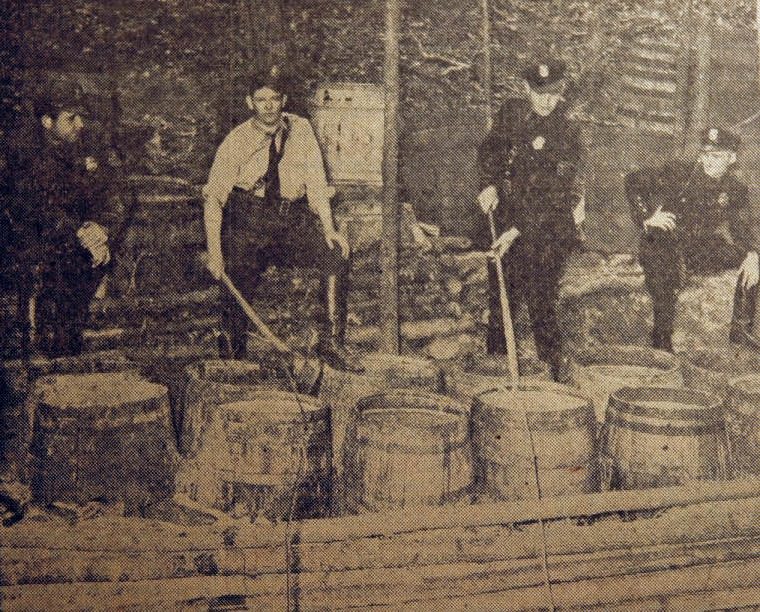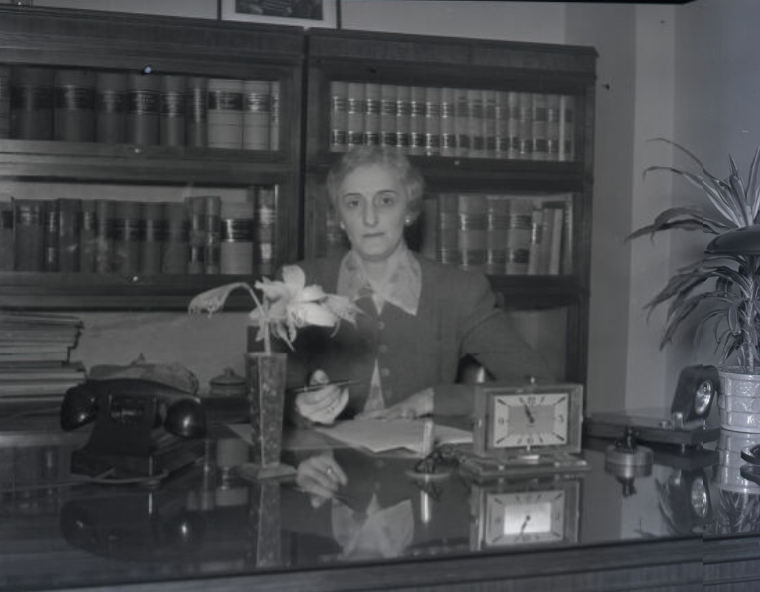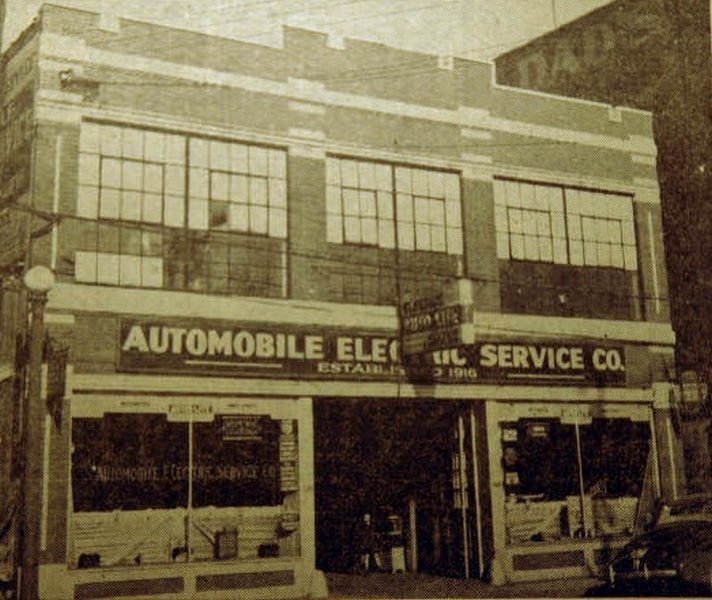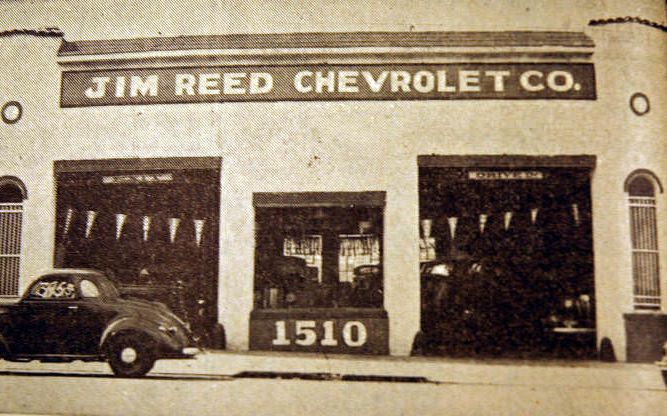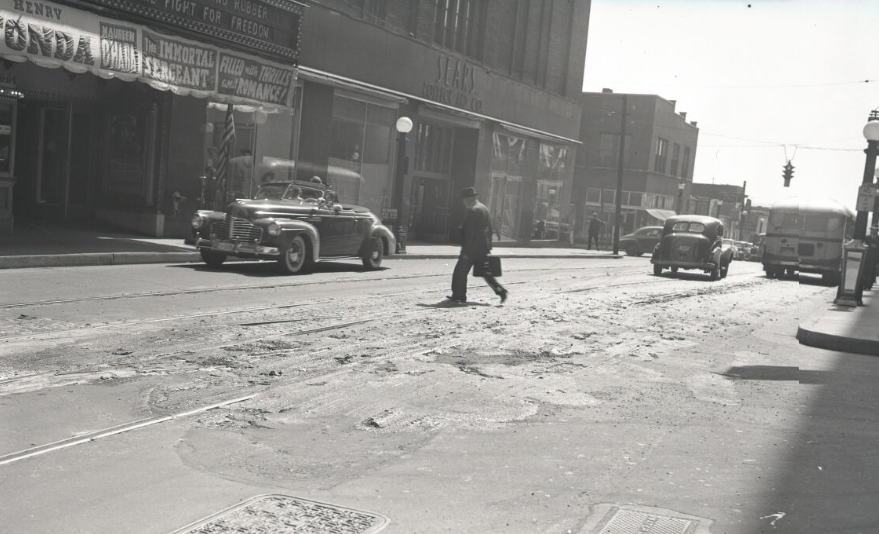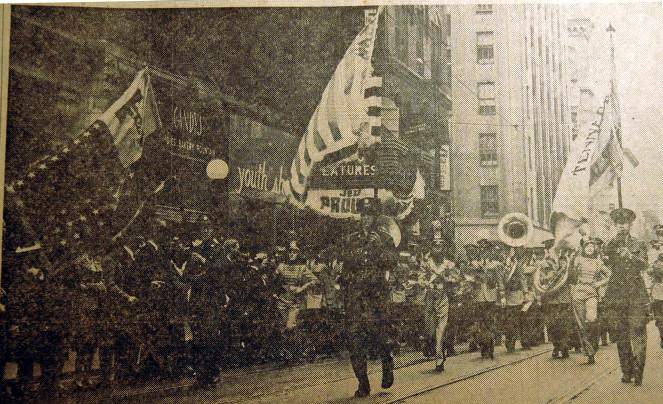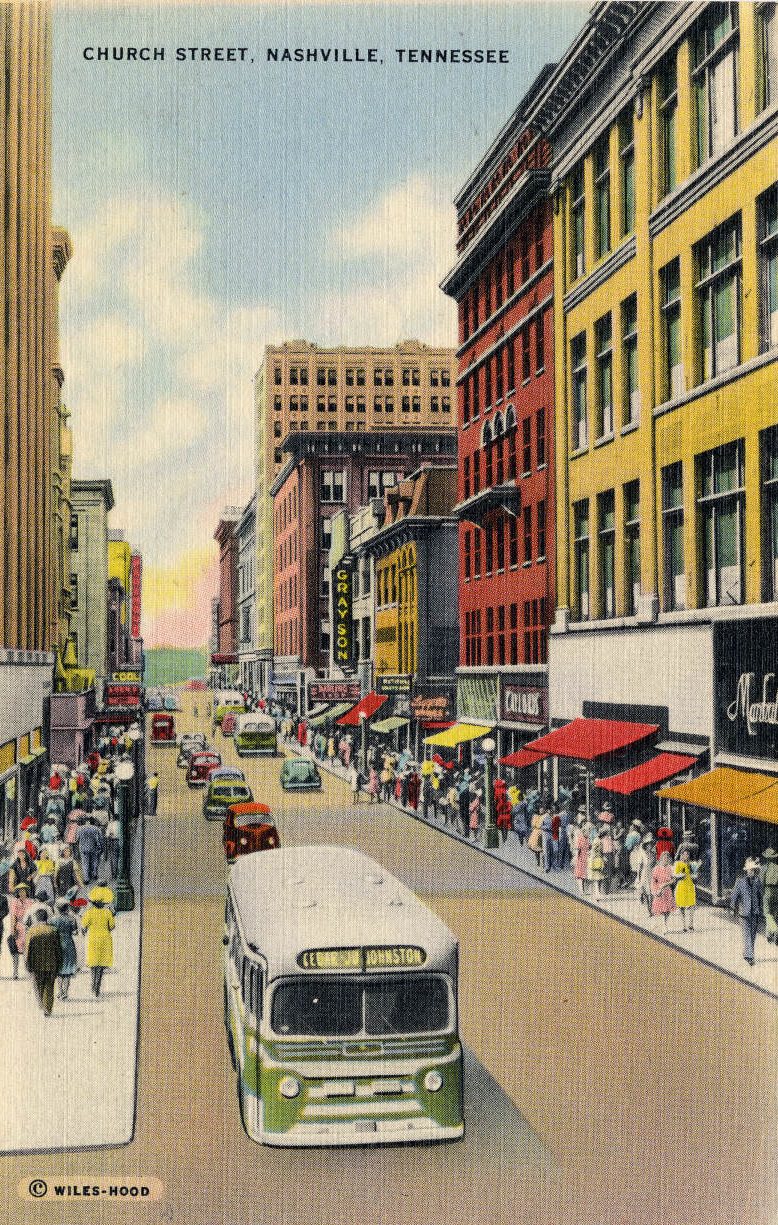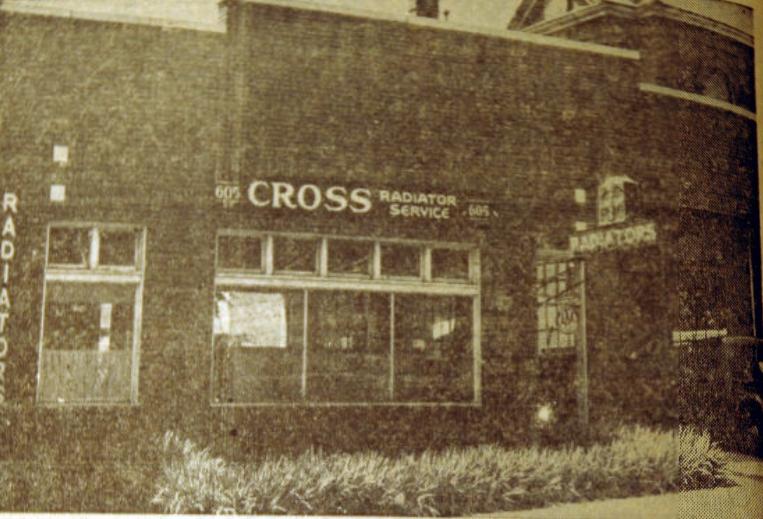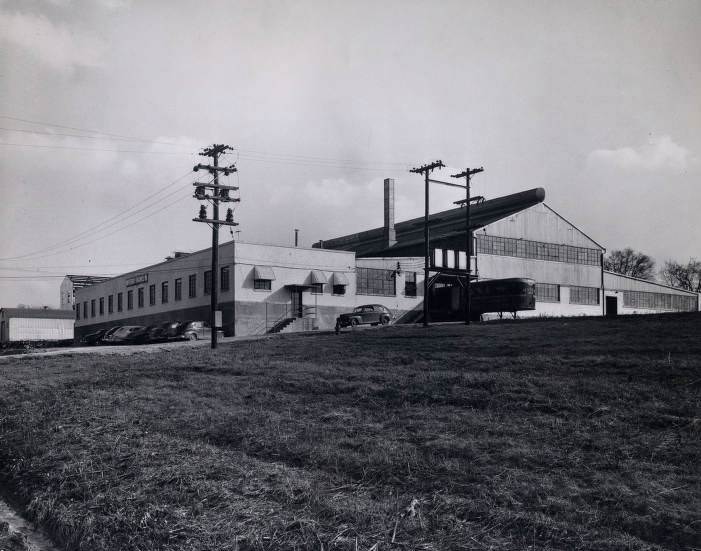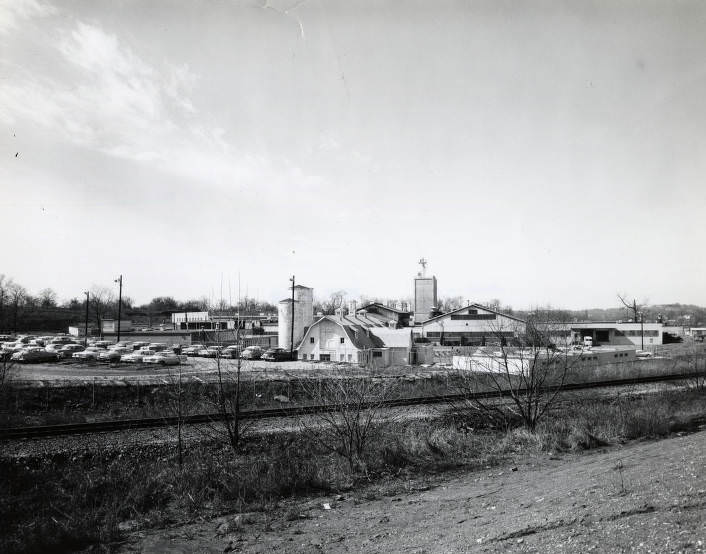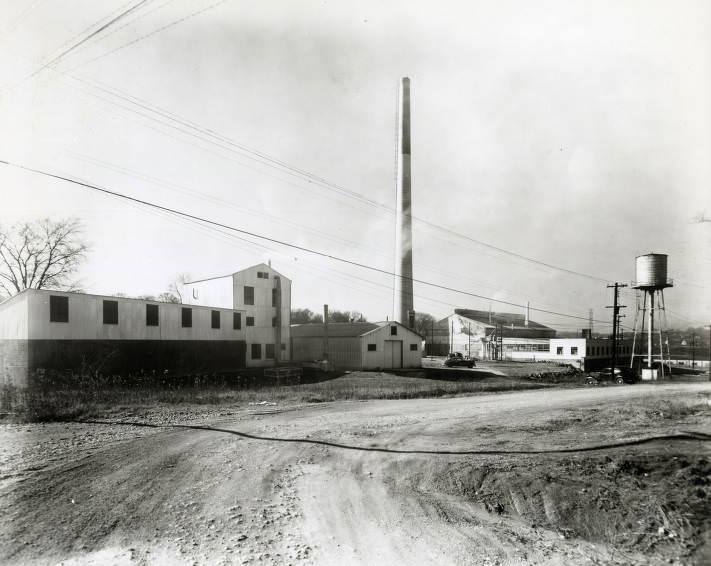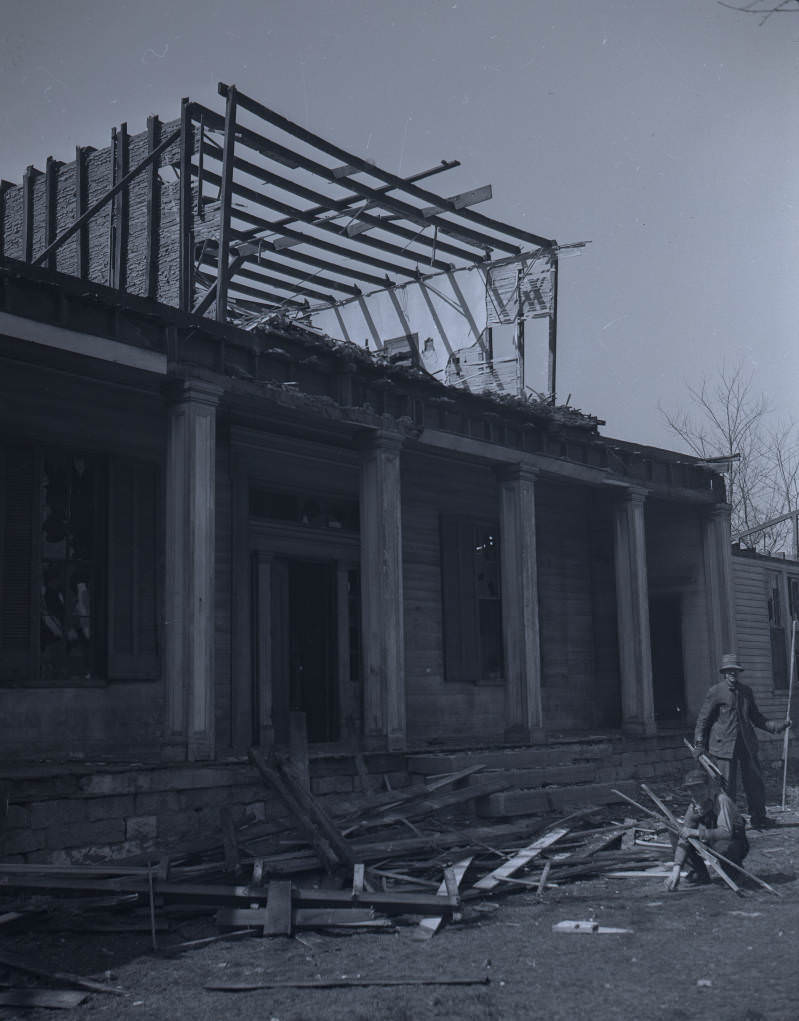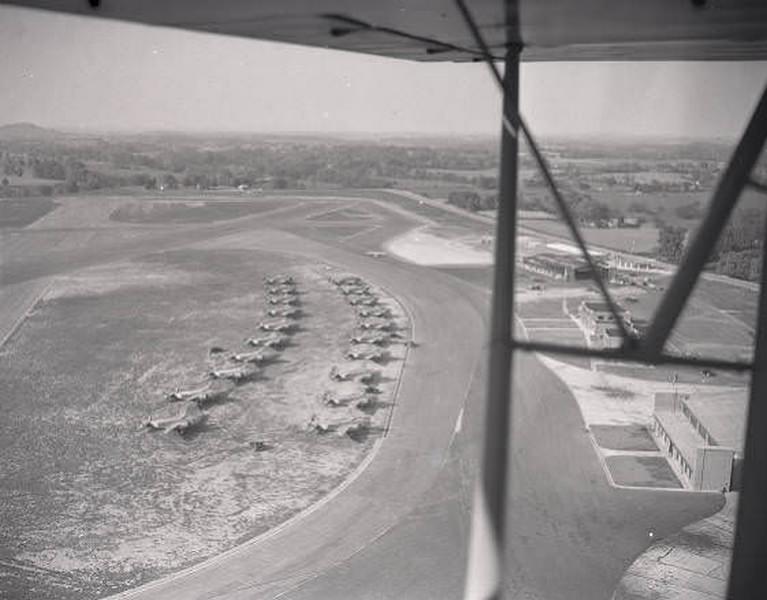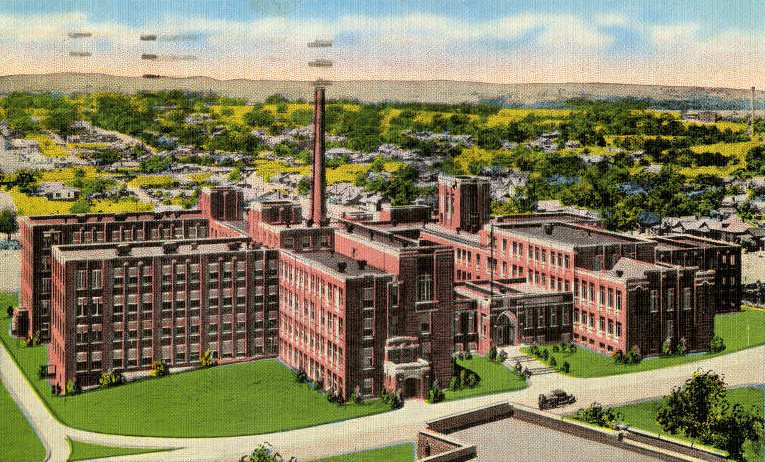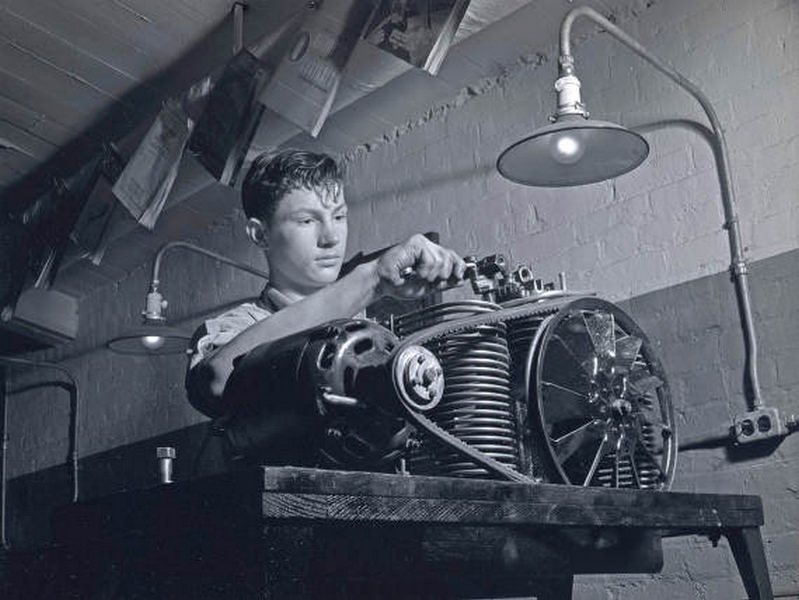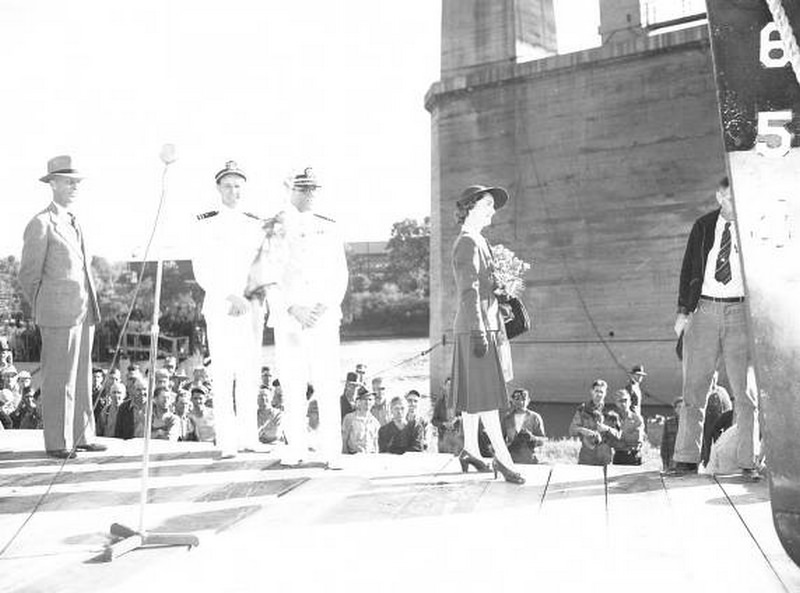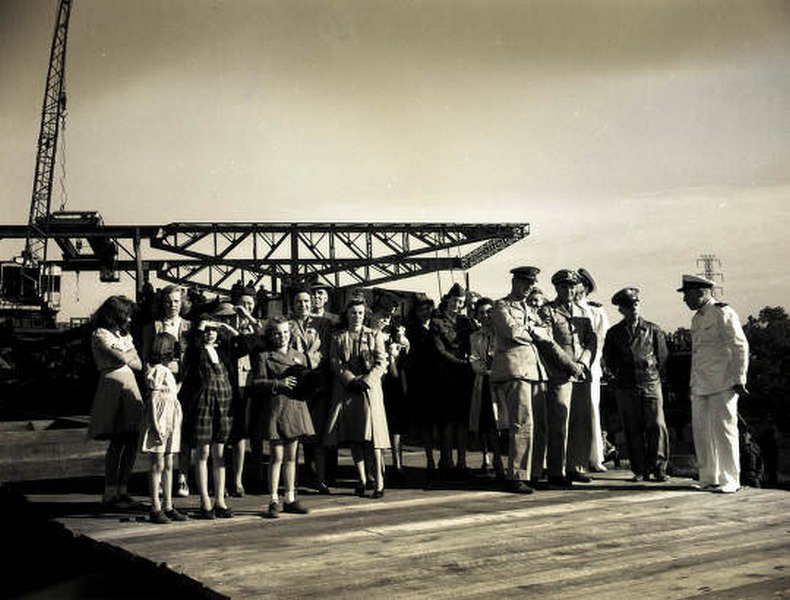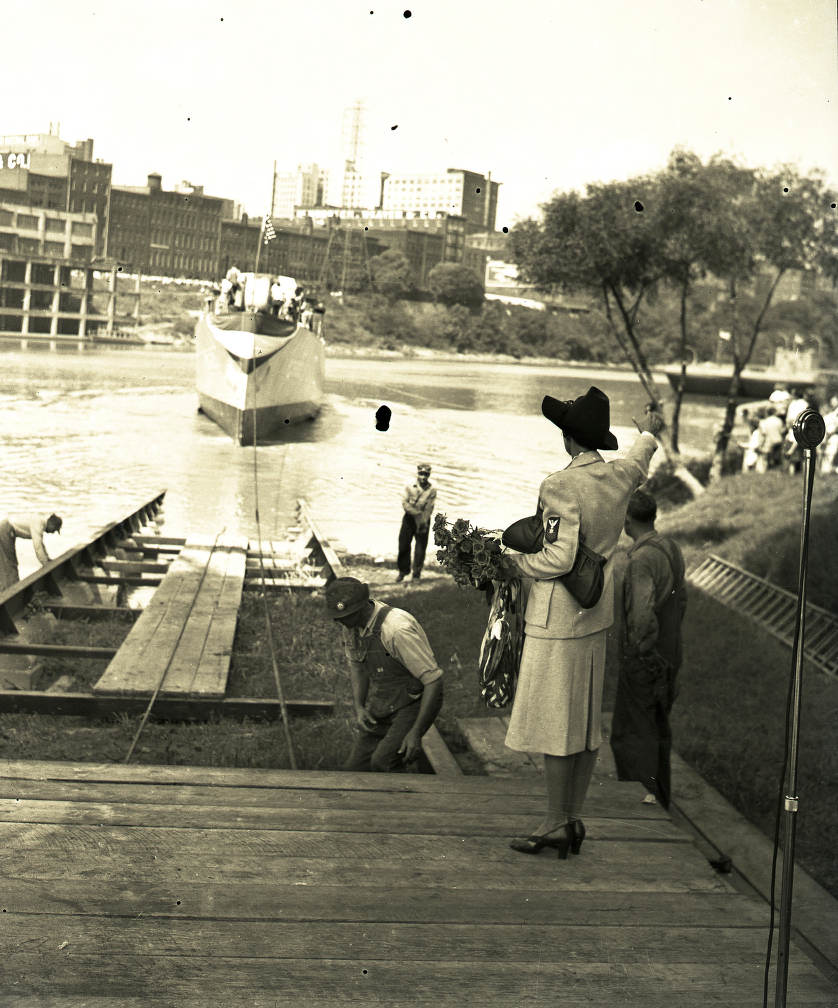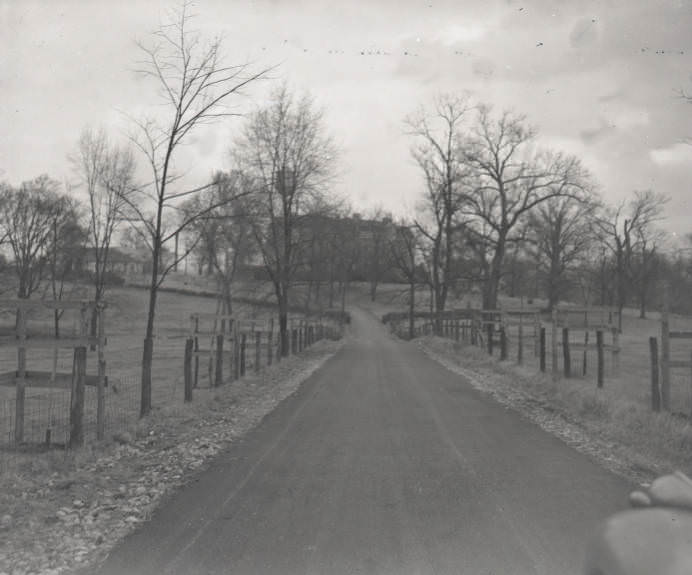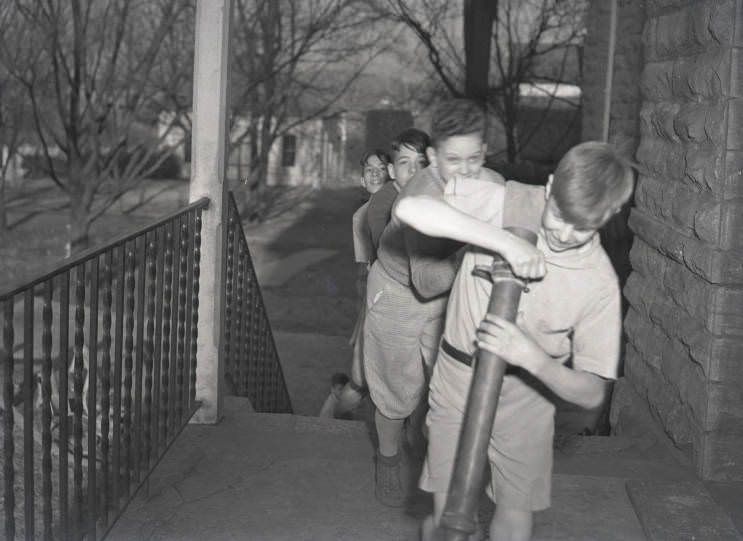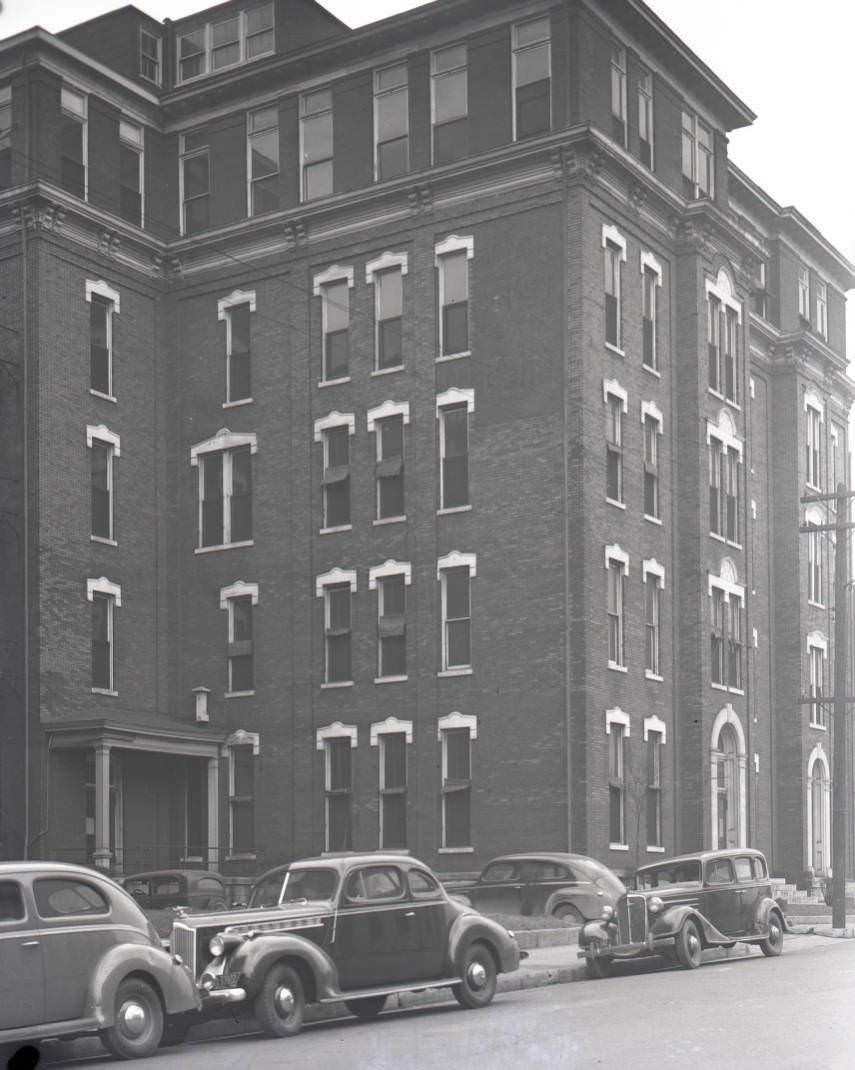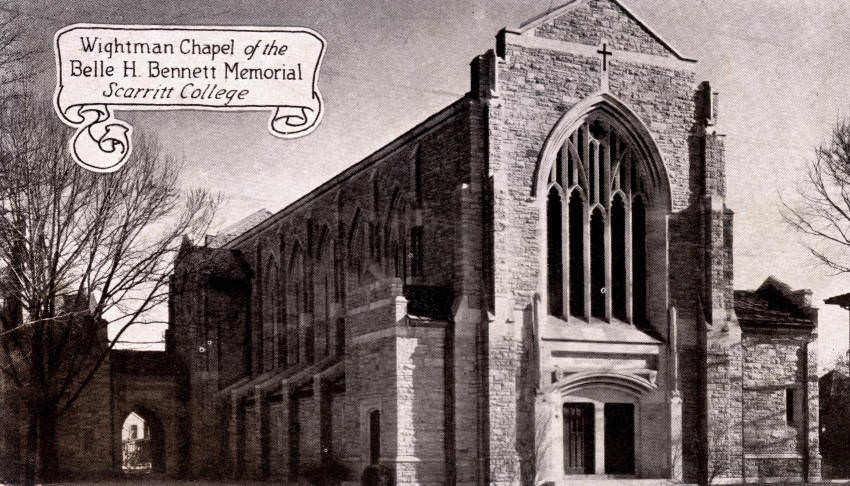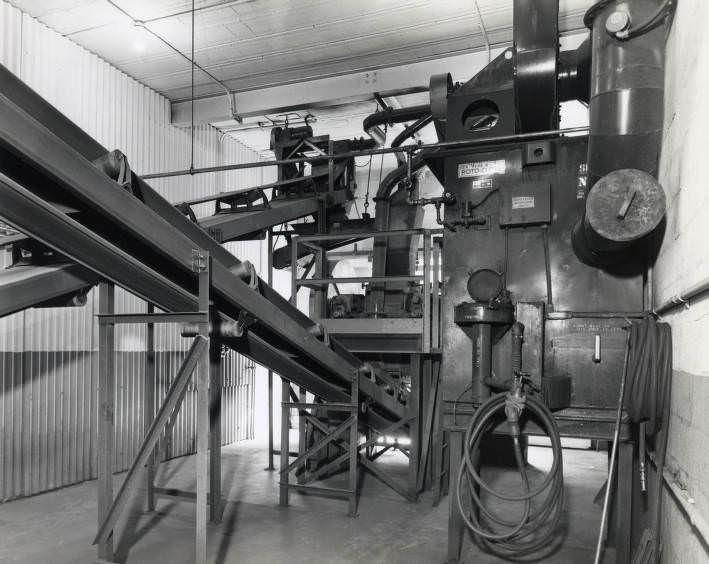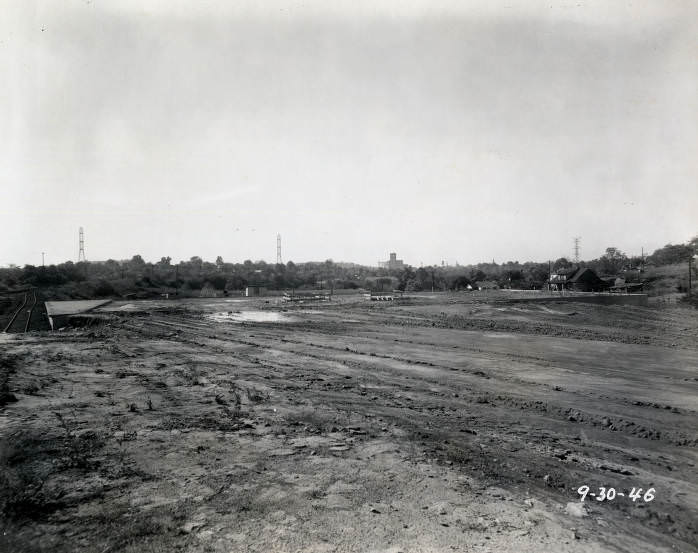Nashvillians bought war bonds during World War II to support the nation. Musicians and other entertainers created shows to help sell bonds. Nashville businesses contributed greatly to the war effort as well. The Vultee Company built planes, Dupont supplied synthetic fibers for parachutes, the Nashville Bridge Company built minesweepers for the Navy, Genesco (General Shoe Corporation) supplied combat boots, and Werthan Bag Company made sandbags.
The first Prince’s Hot Chicken Shack opened in 1945 on the corner of Jefferson Street and 28th Avenue. Jazz and blues musicians like Etta James, Ray Charles, Little Richard, Otis Redding and Billy Cox performed on Jefferson Street in clubs such as the Del Morocco, the New Era Club, Maceo’s, Club Baron and Club Stealaway.
New housing was built outside of cities in the immediate aftermath of World War II, leading to rapid suburbanization. Consequently, many new schools and other support facilities were needed, but the county was unable to provide them. Suburbanization also resulted in a declining tax base in the city, despite the fact that many suburban residents used unique city services and amenities funded solely by city taxpayers. The city administration claimed 96 acres in Hell’s Half Acre in 1949, an area northwest of the state capital that housed some of the city’s poorest African-American citizens. The city administration justified the move by saying that they were ridding the city of vice, as it was known at the time for saloons, prostitution, and other vices, but also for housing some of the oldest African-American churches and schools in Atlanta. A large office building was built in the neighborhood, along with a six-lane parkway, terraced parking lots, and green space, which provided little for those who lost their homes.
While it’s fascinating to read what Nashville was once like, there is nothing quite like seeing old pictures to help visualize the times. So, take a look at these fabulous photos of Nashville in the 1940s.
Also explore, Nashville in the 1900s, 1920s, and 1930s.
#1 Frozen Cumberland River, 1940
#2 Stable at Belle Meade Plantation, 1940
#3 The Dairy At Belle Meade, 1940
#4 Snowfall in Percy Warner Park, Nashville, Tennessee, 1940
#5 Belle Meade Mansion, 1940
#6 Harding Cabin at Belle Meade Plantation, 1940
#7 Military exercises with radio equipment at Warner Park Recruiting Drive, 1944
#8 Racing Stable at Belle Meade Plantation, 1940
#9 Barn at Belle Meade Plantation, 1940
#10 Belle Meade Mansion, 1940
#11 North exterior of Belair House, 1940
#12 Provisional Battalion, 2nd Tennessee Infantry on parade, Army Day, April 6, 1942
#13 John Harding cabin at Belle Meade Plantation, 1940
#14 Belair House from southwest, 1940
#15 Stables at Belle Meade Plantation, 1940
#16 Capitol Chevrolet, from the Nashville Times, 1940
#17 Women in the workforce during World War II, 1941
#18 Patty Berg mid-swing at Belle Meade Country Club, 1948
#19 Patty Berg at Belle Meade Country Club, 1948
#20 Military board marching in 1942 Army Day Parade, 1942
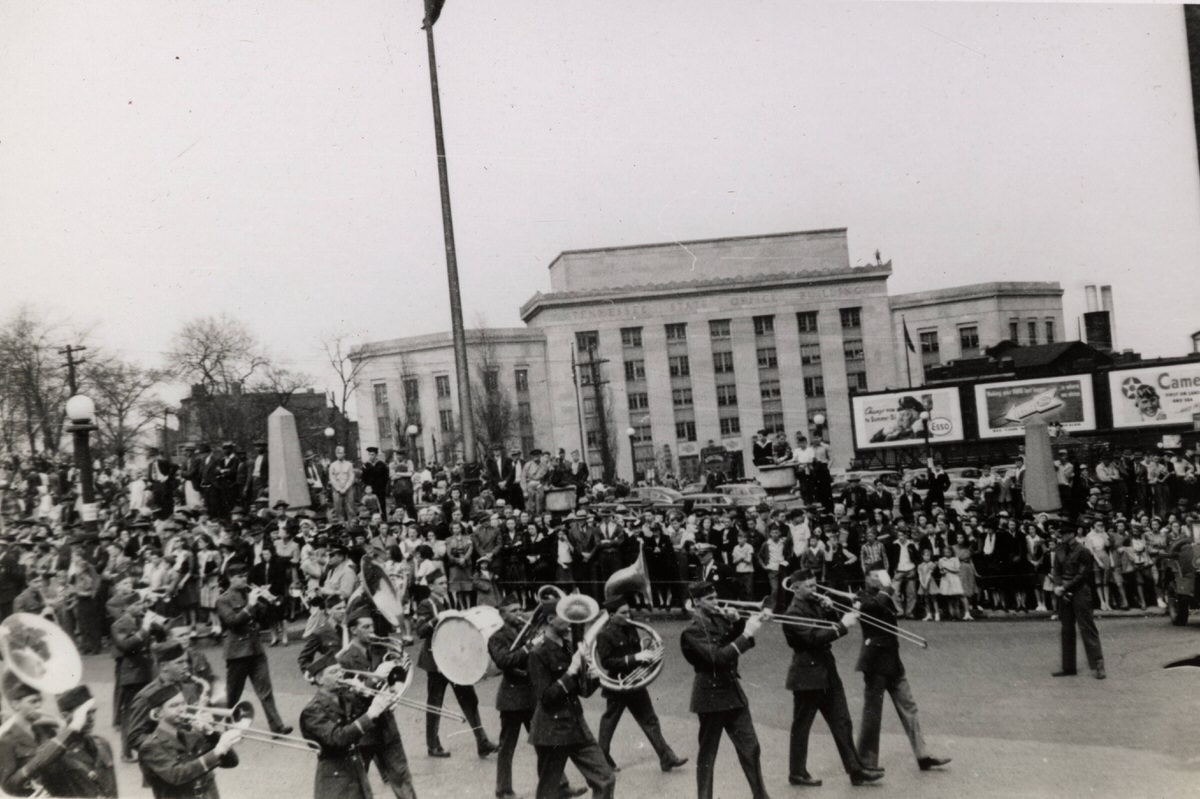
Army Day Parade in front of the Tennessee State Capitol. This event featured the 2nd Tennessee Infantry on parade in downtown Nashville. Many people are lining the street watching the marchers as they walk by. A military band is marching. The Tennessee State Office Building in visible in the back, behind the marchers.
#21 Belle Meade Mansion, 1940
#22 Belle Meade Mansion dairy, 1940
#23 Barn and automobile at Belle Meade Plantation, 1940
#24 Cow Barn at Belle Meade Plantation, 1940
#25 Front porch of Belle Meade Mansion from northeast, 1940
#26 Crowds and military jeep in 1942 Army Day Parade, 1942
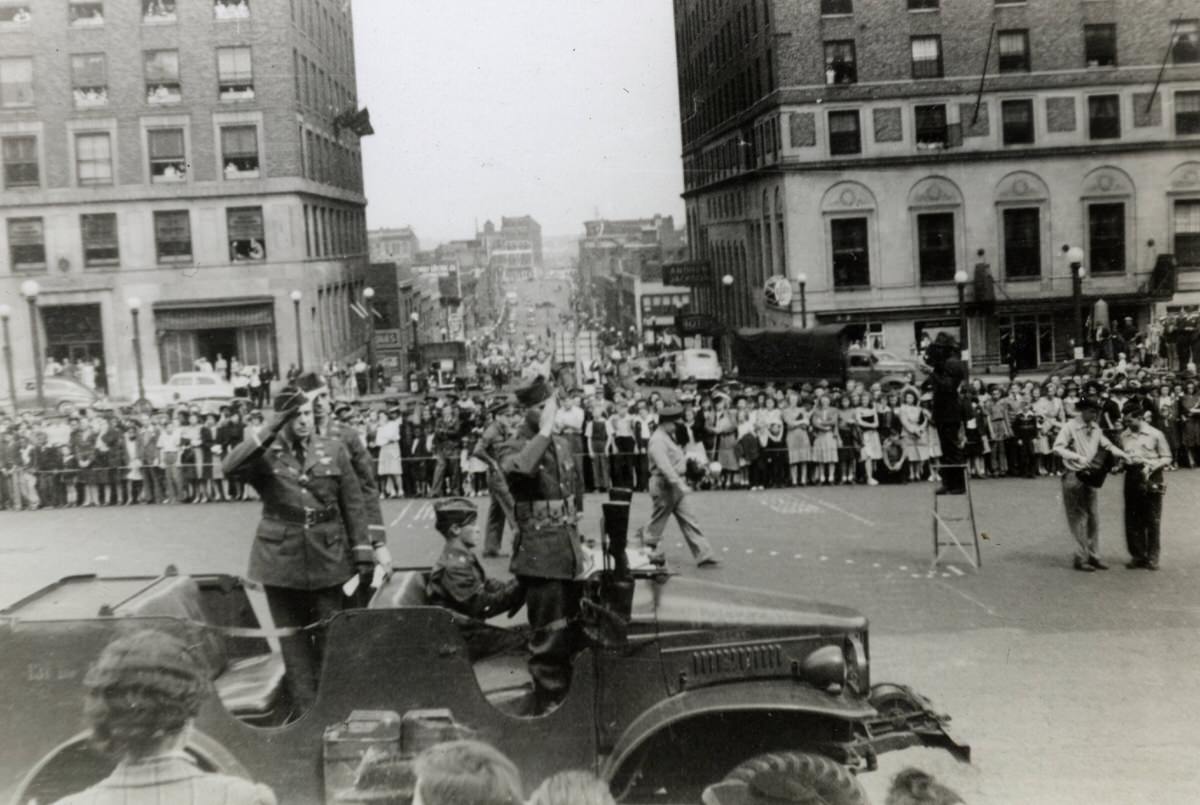
Army Day Parade in front of the Tennessee State Capitol. This event featured the 2nd Tennessee Infantry on parade in downtown Nashville. Many people are lining the street watching the jeep vehicle as the individuals inside salute as they ride by. Two large buildings connected by a street can be seen in the background.
#27 Old Mill and Blacksmith shop at Belle Meade Plantation, 1940s
#28 Boscobel College for Young Ladies, showing buildings and grounds, 1940s
#29 Belle Meade Mansion front lawn, 1940s
#30 Former slave quarters at Belle Meade Plantation. 1940s
#31 A view of the waterfront of Nashville, Tennessee at First Avenue and Broadway, 1940.
#32 Horse at Belle Meade Plantation being held by stable hand, 1940s
#33 Painting of Fort Nashborough, located at First Avenue and Church Street, viewed from above, 1940s
#34 Fort Negley guard tower, 1940
#35 Woman standing on the steps of the Cheekwood mansion grounds in Nashville, Tennessee, 1941
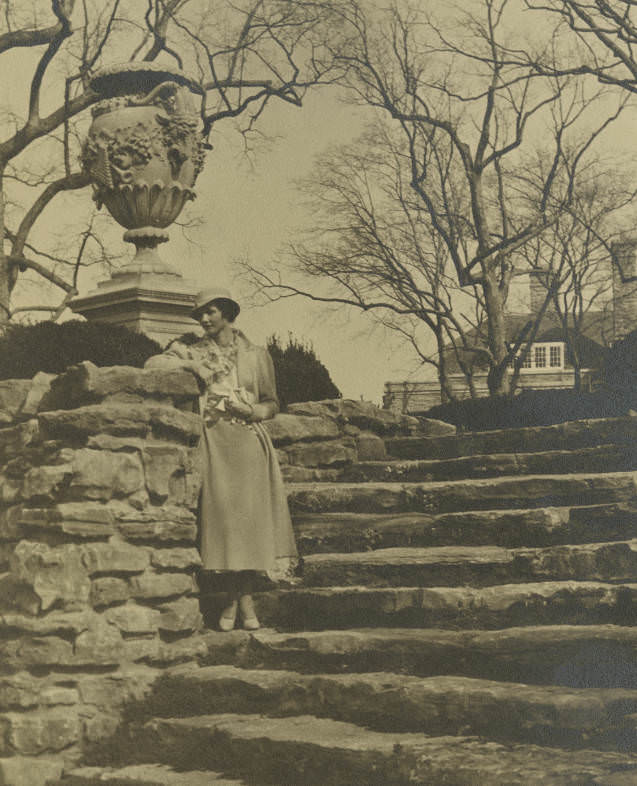
The Cheekwood mansion was built in 1932 in the Colonial Revival style for Leslie and Mabel Cheek. Designed by New York residential and landscape architect, Bryant Fleming, wherein the magnificent limestone mansion and extensive formal gardens were inspired by the grand English houses of the 18th century. Cheekwood opened to the public on May 22, 1960 with a dedication given by Senator Albert Gore, Sr. The privately funded 55-acre botanical garden and art museum is located on the western edge of Nashville at 1200 Forest Park Drive.
#36 Nashville City Schools, Carter-Lawrence Elementary, 1949
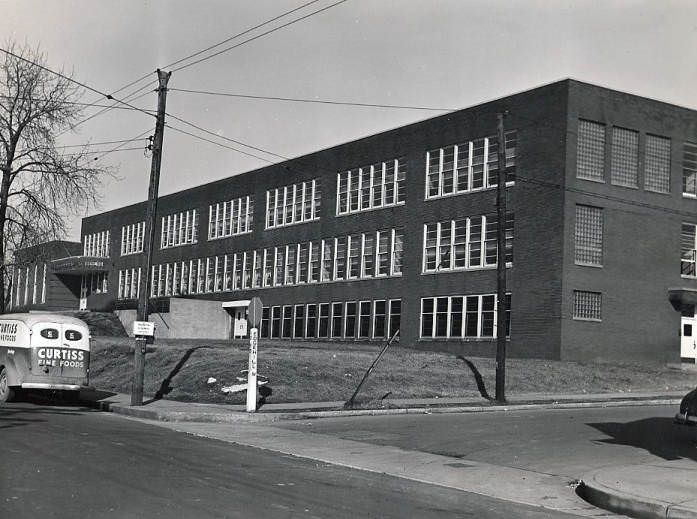
Opened in January of 1940, Carter-Lawrence Elementary was a combination of two previously separate schools. Carter Elementary, containing grades one through six, was located just north of the present site on 12th Avenue South. Lawrence Elementary, containing grades one through three, was located on South Street. Carter was named in memory of Howard C. Carter, a teacher in the Nashville city schools, and Lawrence was named for Judge John Lawrence, a member of the Board of Education. Both schools opened in 1890.
#37 Nashville City Schools, Cavert School, 1949
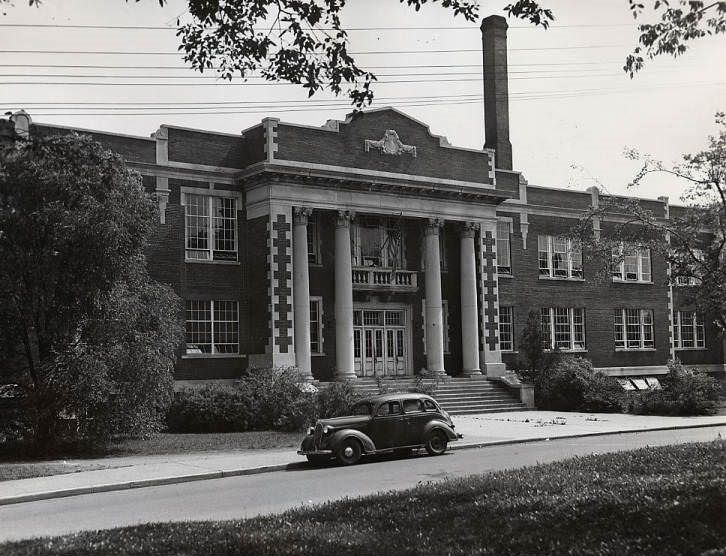
Cavert School opened in September of 1928 for students in grades one through nine. The school was named for Dr. A.J. Cavert who served as principal at Howard, Fogg, Hume, Fall and Warner schools among others. Cavert became a junior high in 1936 when Eakin school was opened. An addition was made that same year, and a new gymnasium was built in 1964. In the fall of 1965, Cavert was phased out as a junior high and became a special education center.
#38 Nashville City Schools, Fall School, 1949
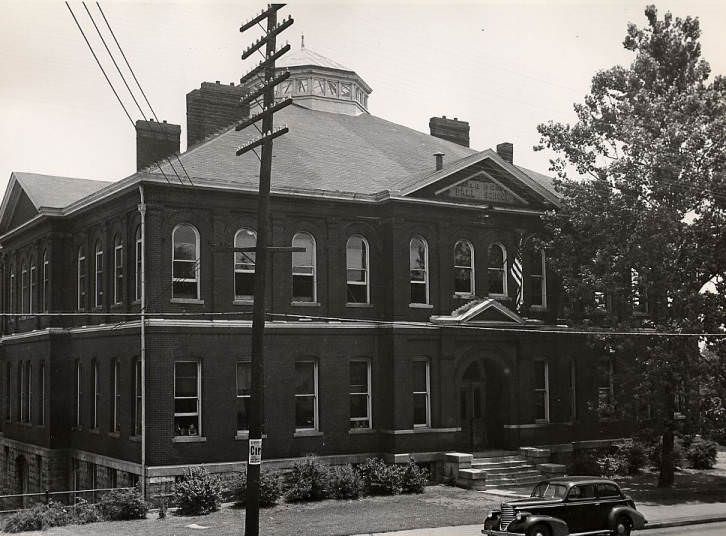
Located on the corner of 8th Avenue South and Chestnut Street, Fall school was named for Philip Slater Fall, a prominent Nashville businessman and member of the Board of Education from 1865-1867. Since the school had no bell, a flag was put out in each. Fall school was built in 1898 and was in continuous use until a merger in 1970 when it became Fall-Hamilton Elementary, currently located on Wedgewood Avenue. The school is listed on the National Register of Historic Places.
#39 Nashville City Schools, Head Elementary, 1949
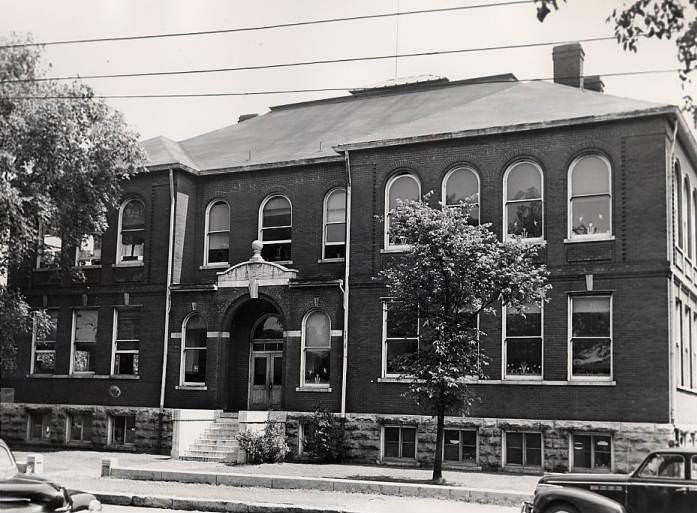
Named in honor of J.M. Head, mayor of Nashville from 1899 to 1903, Head Elementary School was completed in 1904. Located on 16th Avenue North, E.S. Brugh was the school's first principal. A new school building was built in 1952 to accommodate grades one through six, and the old building was torn down to make way for the John Henry Hale Homes. The school has been a part of many special programs over the years including Head Start, special education, Project Follow Through as well as others.
#40 Nashville City Schools, Lipscomb Elementary, 1949
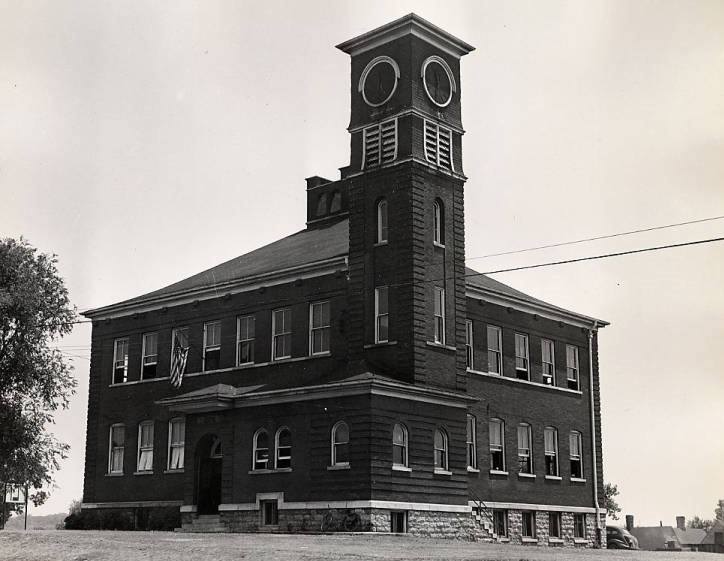
Lipscomb Elementary opened in South Nashville in 1907. Before the school was built, the property held Fairfield Plantation. Following the plantation was a convent where it is thought the first Lipscomb classes may have been held. The school was named for James Lipscomb, and the first principal was W.N. Tucker. The school closed in 1960
#41 Nashville City Schools, Napier Elementary, 1949
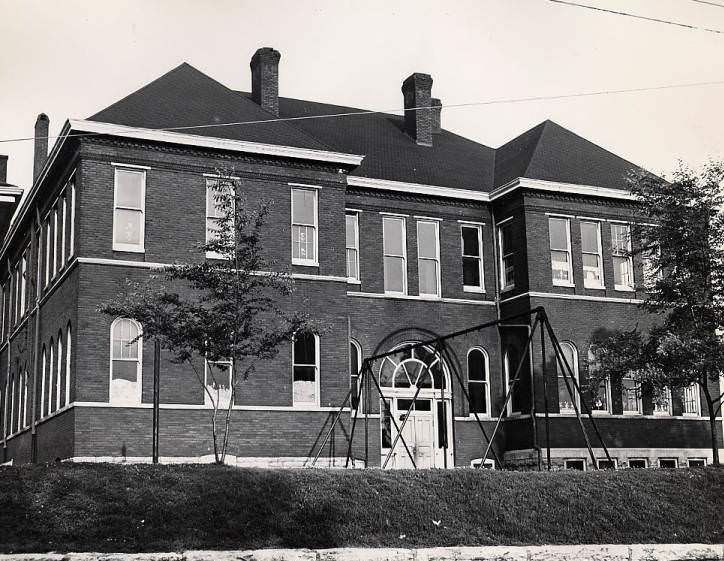
Named after Alonzo Napier, brother of J.C. Napier, this original Napier school building, seen here from the side, opened mid-way through the 1897-1898 school year. It was located at the corner of Robinson and Fairfield. Completion of the school relieved the student population at Pearl School. Napier was modeled after the room plan in which a teacher had her pupils before him or her the entire day, while many of the Nashville schools followed the hall plan.
#42 Nashville City Schools, Ross School, 1949
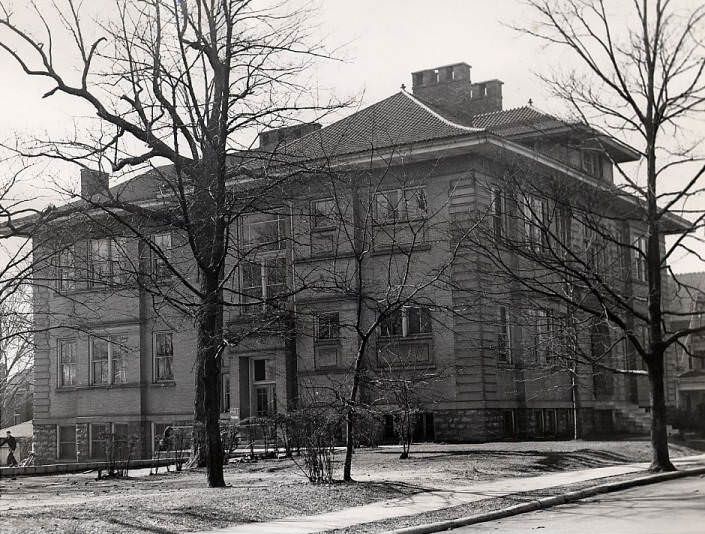
Located on Grove Avenue, which later became Ordway Place, Ross School was erected in 1907. The school was named for Marcus M. Ross who worked as a teacher and principal for Nashville city schools. In 1933, a tornado that swept through East Nashville damaged the school building. The structure closed in 1988, and a new building was constructed on McFerrin Avenue at the site of the old East High School football field
#43 Nashville City Schools, Tarbox School, 1949
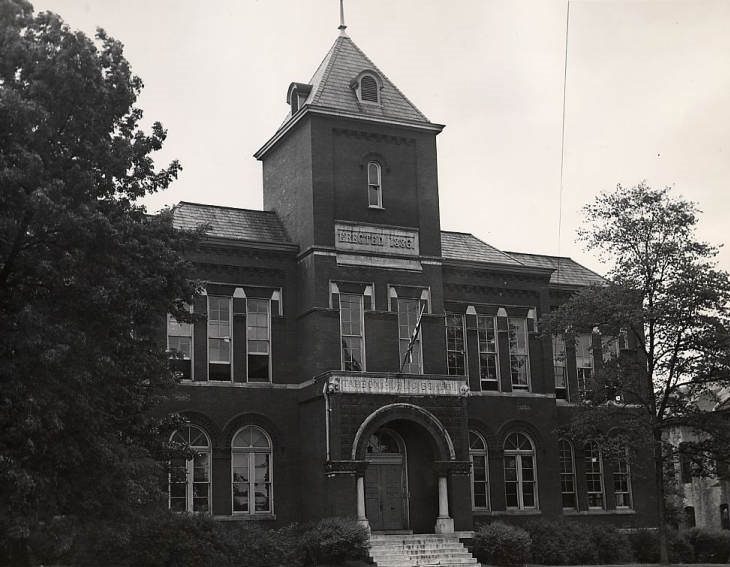
Tarbox School opened in 1880 on 17th Avenue between Hayes Street and West End Avenue. It was named for L.G. Tarbox who served as principal of Hume school. In 1886, a new three story, brick building with a six story bell tower was constructed and opened on Broad Street. George B. Elliot served as the first principal in the new building. A fence with two gates surrounded the school. Boys entered by the west gate, and girls entered by the east gate. On April 1, 1932, a fire destroyed the tower and front of the school building. All students were evacuated safely. The building was rebuilt with only two stories instead of three. The school closed in 1960
#44 Nashville City Schools, Washington Junior High, 1949
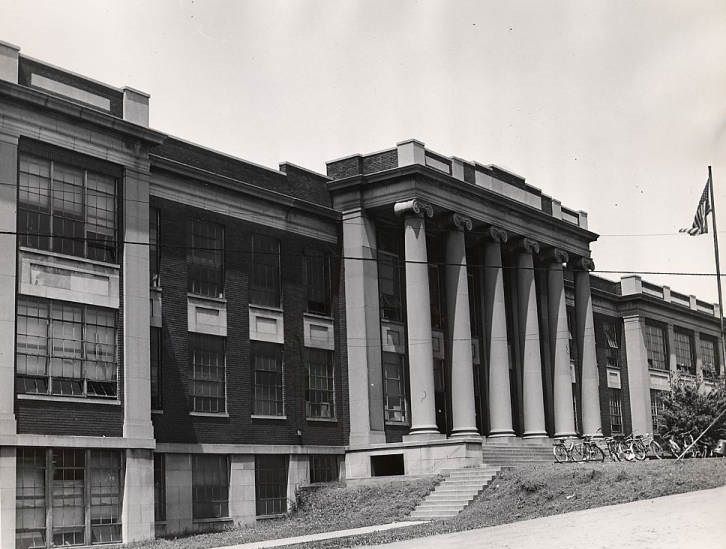
Washington Junior High opened in September of 1928 for students in grades seven through nine. It was named for George E. Washington, a prominent Nashville educator and former principal of Pearl High School. J.A. Galloway was the school's first principal. Additions to the school were made throughout the 1940's and 1960's. Washington housed students from grades six through eleven over the years to help relieve student population in other schools. Washington Junior High School was torn down in the mid 1980
#45 Nashville City Schools, Wharton School, 1949
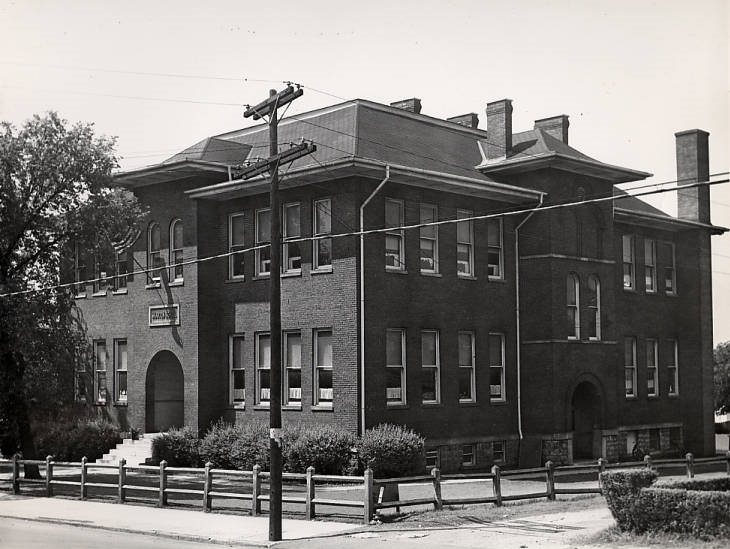
Wharton School was named for Arthur Dickson Wharton who served as principal and professor at various Nashville schools. According to Annual Reports of the Public Schools of Nashville, Tennessee, Wharton school had been occupied for one year at the close of the 1905-1906 school year. At that time, the building was unfinished but was completed in the next couple of years. The original school building housed grades one through four, and W.J. Myers was listed as principal during the school's first year. A new building was built in 1959 on Eighteenth Avenue North
#46 Nashville Iris Association, from the Nashville Times, 1940
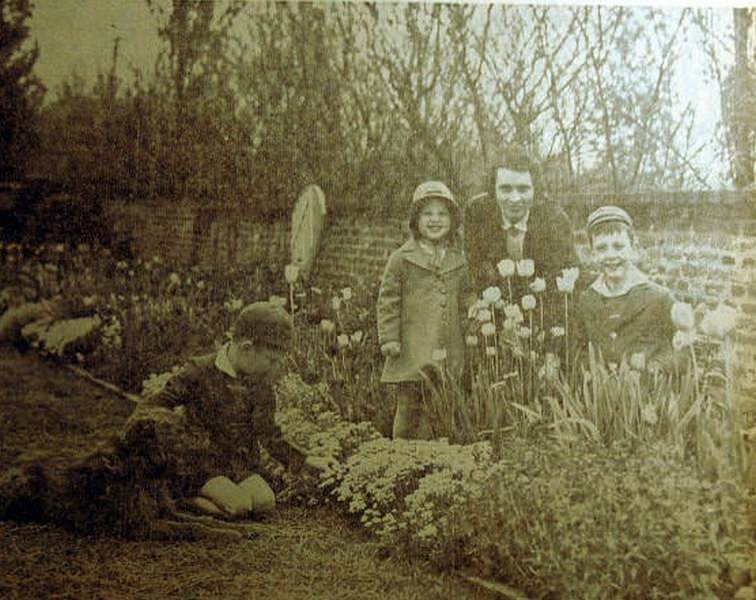
A captioned photo, from the Nashville Times (1940), about the Nashville Iris Association’s president Jesse E. Wills, “whose garden at his home on Belle Meade Boulevard always attracts a large number of visitors during Iris Week. Pictured in the garden are his wife and children, left to right, William Ridley Wills, II, Ellen McClung Wills, Mrs. Wills, and Matthew Buckner Wills. The dog is Micky.” The Nashville Iris Association, established in 1931, gained national and even international attention for its efforts in breeding and growing irises. The iris is the Tennessee State Cultivated Flower.
#47 Goodyear Tire and Rubber Company Plant, Nashville, Tennessee, 1945
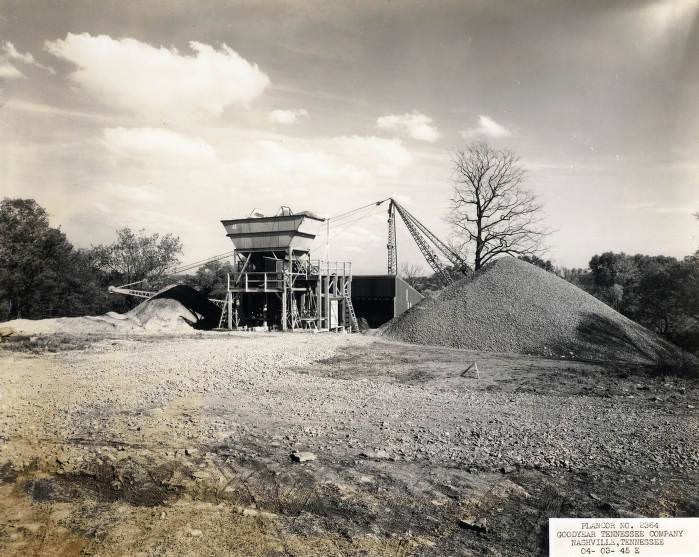
This was a construction project of the Foster & Creighton General Contractors. The picture shows “construction progress on Plancor 2364 Goodyear Tennessee Co., Nashville, Tennessee at time work was stopped July 19, 1945.” The verso description reads: “view showing dry batching plant for concrete and cement storage house located on the Cumberland River.” The project originated in a government contract between the construction firm and the U.S. Corps of Engineers. The Foster & Creighton construction contracting firm was founded in 1885 by Wilbur F. Foster and Robert T. Creighton, who had both served as City Engineer of Nashville.
#48 Henry Driver home being razed, Nashville, Tennessee, 1941
#49 Iroquois Memorial Steeplechase, 1943
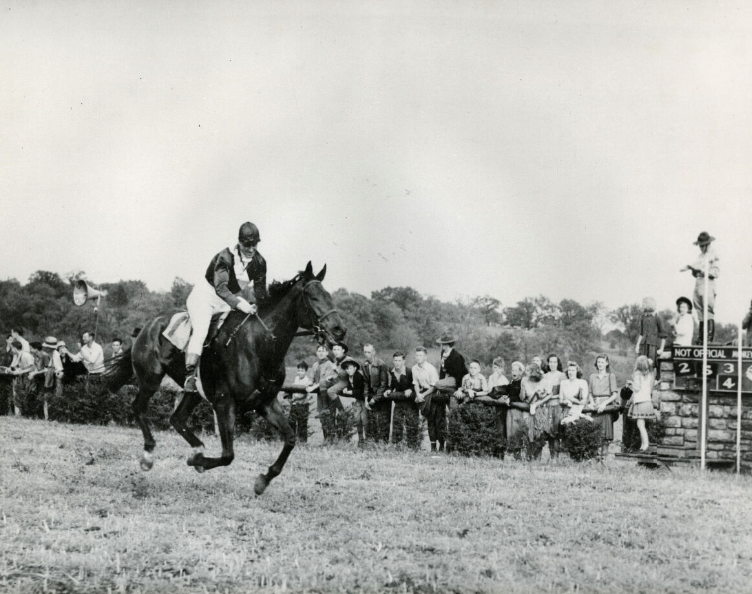
Pictured: Frederic II winning the Iroquois Steeplechase in 1943, with Calvin Houghland up. Here for the Iroquois Challenge Cup in May is run the Iroquois Memorial Steeplechase. This equestrian event is an example of the sport of the days of Andrew Jackson, seventh president of the United States, in the contests between thoroughbreds. On race is also run the Truxton Purse, named for Andrew Jackson's famous thoroughbred horse. Crowds up to 40,000 gathers on the bluegrass hills to witness the Iroquois races.
#50 Iroquois Memorial Steeplechase, 1942
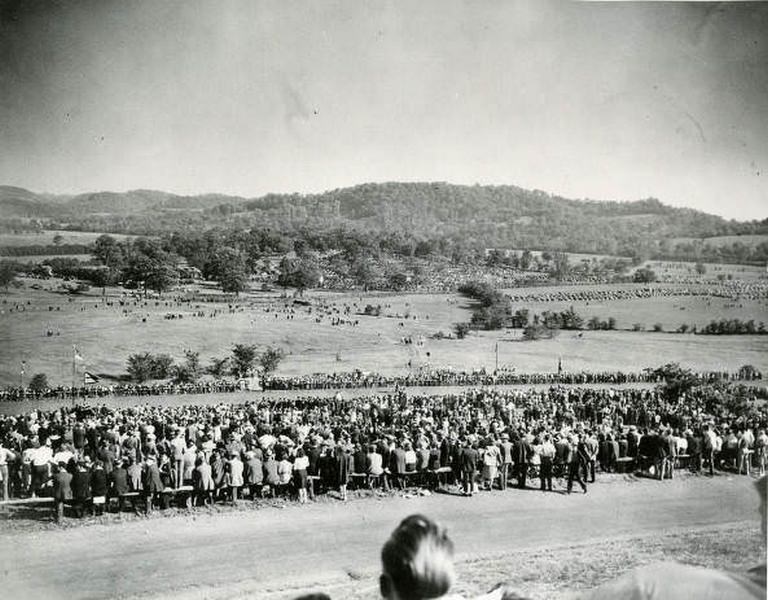
Here for the Iroquois Challenge Cup in May is run the Iroquois Memorial Steeplechase. This equestrian event is an example of the sport of the days of Andrew Jackson, seventh president of the United States, in the contests between thoroughbreds. On race is also run the Truxton Purse, named for Andrew Jackson's famous thoroughbred horse. Crowds up to 40,000 gather on the bluegrass hills to witness the Iroquois races
#51 Prohibition era, Nashville, 1940
#52 Mary Spiva Beasley, Secretary to Judge Chester K. Hart, Nashville, 1940
#53 Meharry Medical College – Nashville, 1943
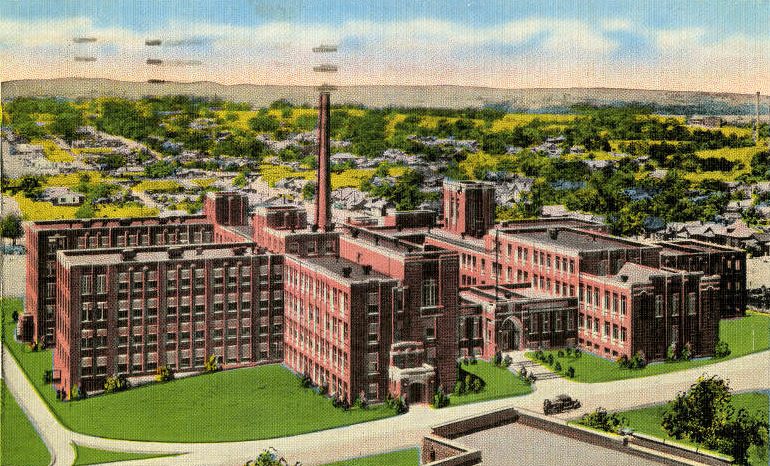
A postcard of Meharry Medical College located adjacent to the Fisk University campus on D.B. Todd Jr. Boulevard in Nashville, Tennessee. The school was first organized in 1876 as the largest professional college in the world for the training of African American youth in medicine, dentistry, pharmacy and nursing. New buildings were completed and dedicated in 1931.
#54 “For the glory that was Greece,” Nashville Banner newspaper headline, 1941
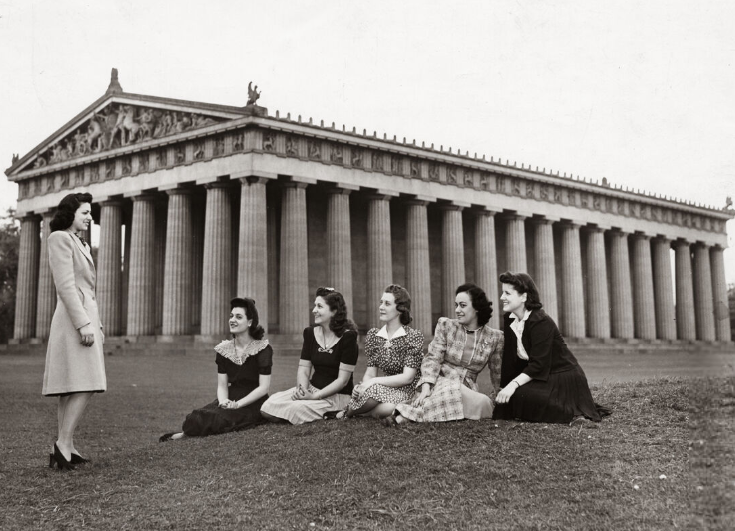
A photograph of six young women sitting on the ground in front of Nashville's Parthenon at Centennial Park, West End Avenue at 25th Avenue North, which is an exact replica of Athen's Parthenon. This photograph appeared in the Nashville Banner newspaper May 5, 1941 with the following caption: "In the shadows of the tall white columns of the replica of the ancient Parthenon, six young Nashville Greek girls are shown as they made plans for the patriotic services to be held there Sunday afternoon.
#55 Aerial view of Nashville, Tennessee, 1940
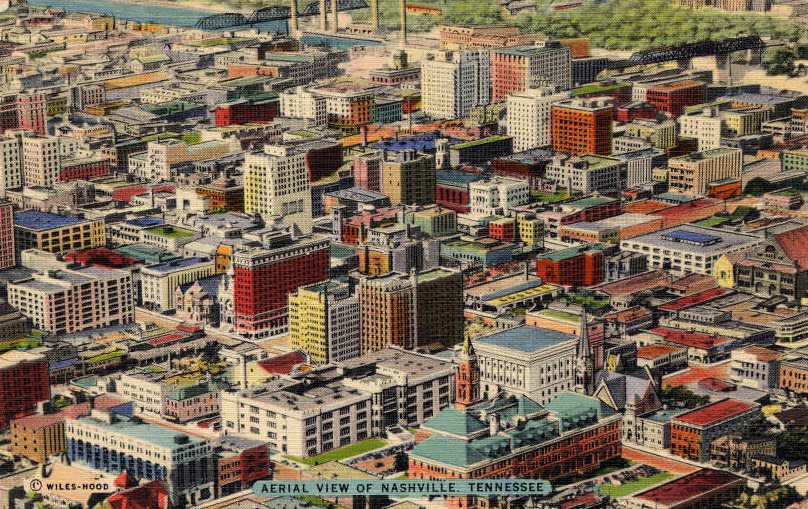
Leading up to the 1940s, Nashville's importance as a trading center grew steadily, and the city was known to the business world as "The Commercial Capital of the Central South." The Jefferson Street Bridge and the Sparkman Street Bridge are both visible in this image. The Cumberland River is depicted under them. Identifiable buildings include Hume-Fogg High School, the U.S. Customs House, and First Baptist Church. The image is bounded by Broadway and Eighth Avenue.
#56 Andrew Jackson’s Tomb at the Hermitage, 1948
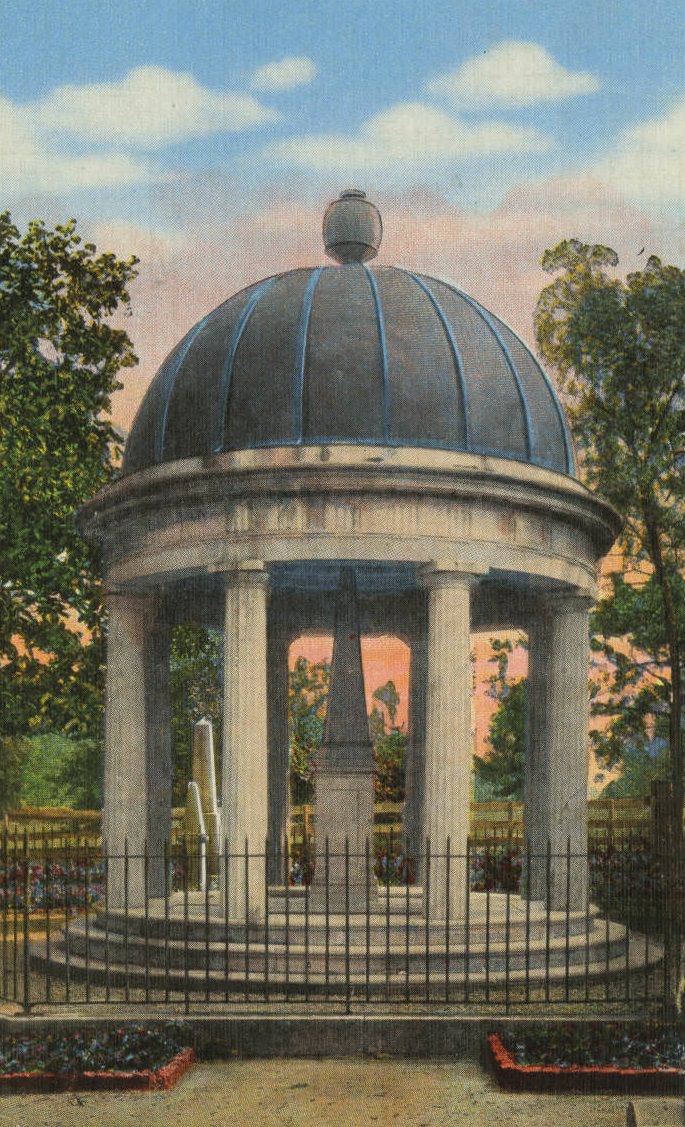
A postcard of President Andrew Jackson's Tomb. The verso reads: "President Andrew Jackson's Tomb at the Hermitage, situated 12 miles from Nashville, has been called the Mt. Vernon of the South. Through the Ladies' Hermitage Association the handsome old estate has been preserved and appears just as it did in the days of 'Old Hickory.'" Andrew Jackson died in 1845 at the Hermitage reaching the age of 77. His burial was beside his beloved wife Rachel Donelson Jackson, who had died in 1828 just before he took the office of President.
#57 Automobile Electric Service Co., from the Nashville Times, 1940
#58 Berry Field, Nashville’s Municipal Airport, 1942
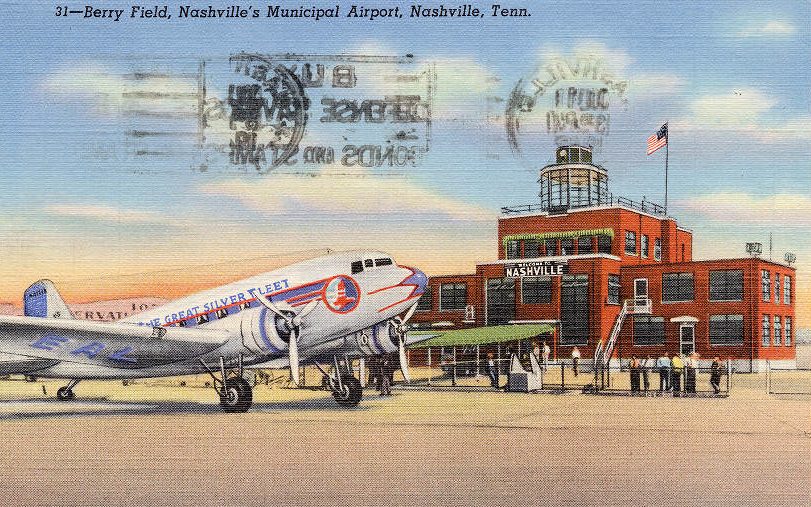
The caption on the verso reads: "Berry Field, Nashville's Municipal Airport, was named Berry Field in honor of Colonel Harry S. Berry, State W. P. A. Administrator. The total cost of construction will be about $2,500,000, and is conceded to be one of the most outstanding airports of the United States. The Airport covers about 700 acres and has many miles of hard surfaced runways. It is located on the Murfreesboro Road, six and one-half miles from Nashville."
#59 Best place to buy used cars, 1940
#60 Camel rides at reasonable prices, 1943
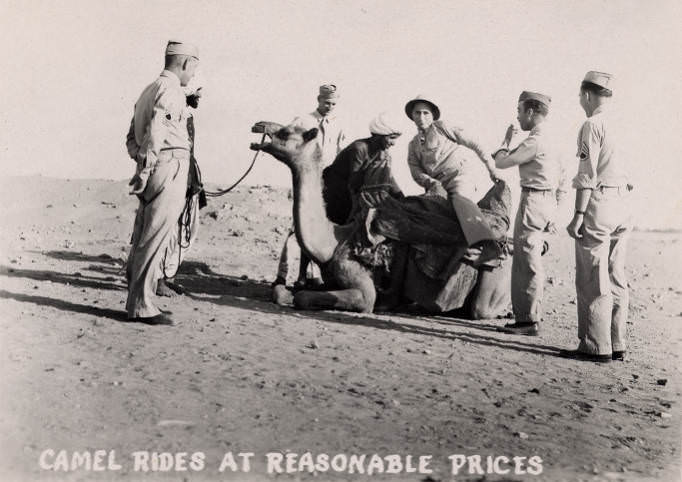
One soldier appears to be mounting or dismounting the camel, assisted by a man in a turban. Morris Levine is at far right. Morris Levine was born on Dec. 8, 1917 in Nashville, Tenn., the son of Hyman and Mary Levine, who were Jewish immigrants from Russia. He graduated from Hume-Fogg High School in 1934. He attended the YMCA Night Law School, took the bar exam in 1938, and was still under 21 years old when he received his license to practice law. He was engaged to Virginia Hiken before World War II, but they postponed their marriage due to the war. He served in the Army Air Corps and as a Judge Advocate in Karachi, India, part of the China-Burma-India (CBI) Theater of operations during World War II.
#61 Church Street at Eighth Avenue, Nashville, Tennessee, 1943
#62 Church Street Parade in celebration of the Nashville Vols triumph over the Atlanta Crackers, from the Nashville Times, 1940
#63 Church Street, Nashville, Tennessee, 1940
#64 City officials place first street marker, Nashville, Tennessee, 1941
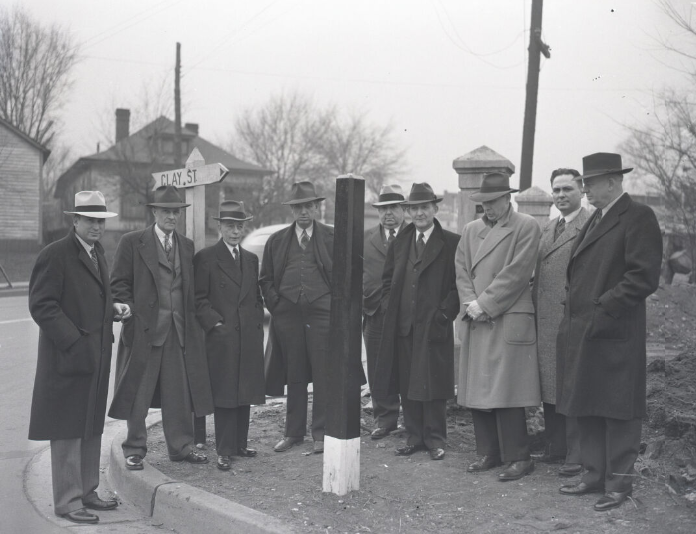
It is planned that each intersection will have two markers similar to the one above except in the business section where a different standard will be used. The post shown above has not yet been lettered but the street name has been filled in by a Banner artist to show how the post will look. Painting crews will follow close behind the erection crews as the markers are set up. From left to right, officials in the picture are: Police Inspector Ed Burgess, Councilman H. H. Sadler, in whose ward the post was placed; Dr. J. W. Bauman, F. O. Beazley, city engineer; Councilman Tony St. Charles, Mayor Cummings, E. B. Stahlman, Jr., chairman of the Nashville Traffic Commission; W. H. Mann, assistant traffic engineer; and Tom Springfield a secretary-manager of the Nashville Automobile Club.”
#65 Cross Radiator Services, from the Nashville Times, 1940
#66 E. Gray Smith Packard automobile dealership in Nashville, Tennessee, 1940
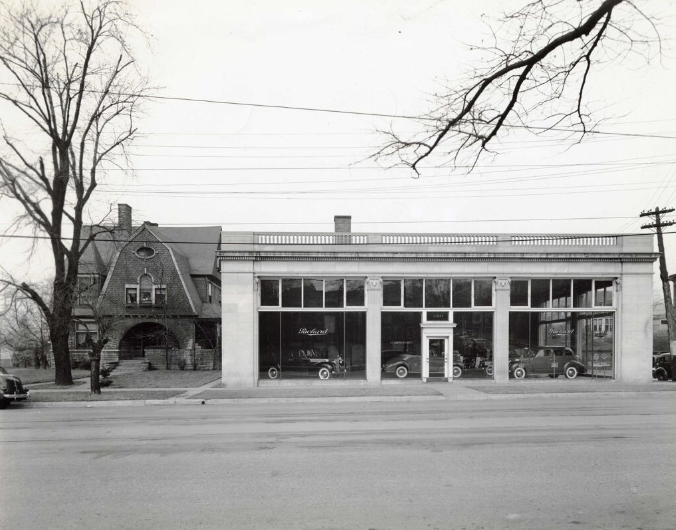
In this view of the front exterior of the building, several of the luxury Packard automobiles are displayed on the showroom floor. E. Gray Smith ran the Packard dealership from 1921 to 1956. After the dealership closed, the building was next occupied for many years by Rich Schwartz, a women's clothing store. In June 1988 Tower Records, Inc. of Nashville occupied the building until circa December 2006. Mr. Smith, a native of Davidson County, became Nashville's first Rolls Royce dealer from 1960 until 1978.
#67 Faculty group of Fisk University, 1946
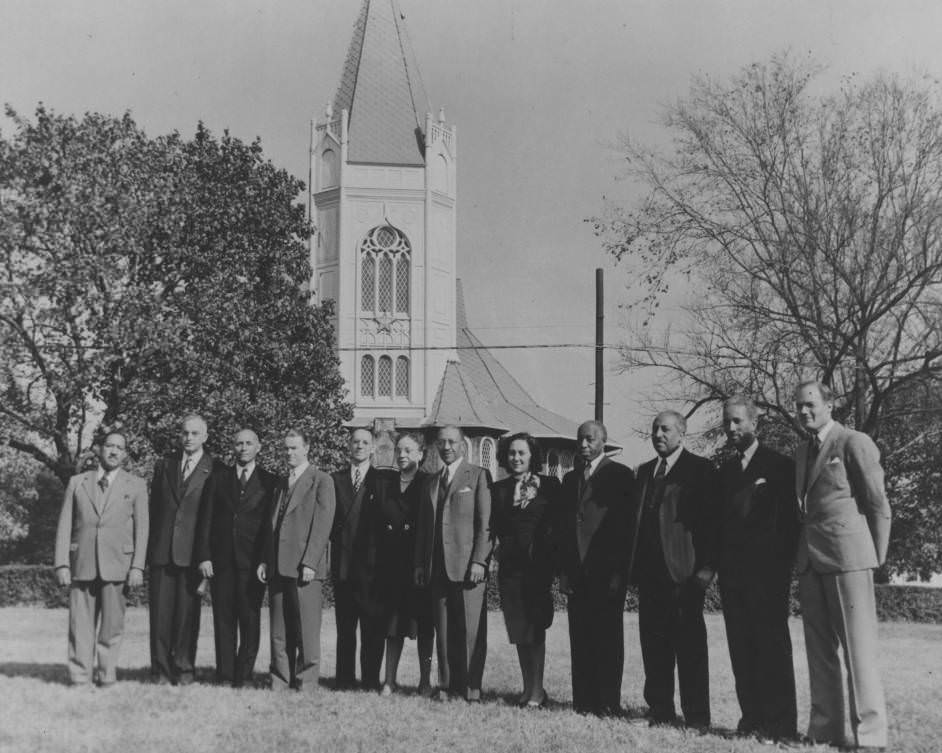
Pictured left to right are John Wesley Work III, Harold Smith, Rev. William J. Faulkner, Theodore Yoder, Rev. Lyman Cady, Mayme U. Foster, Dr. Charles S. Johnson, Helen Young Davis, A. A. Taylor, Arna Bontemps, I. T. Creswell, and George St. John. In October of 1946 the Board of Trustees announced the appointment of the sixth President of Fisk University, Dr. Charles S. Johnson, who would become the first African American President of Fisk University.
#68 Ferro Enamel Company Plant, Nashville, Tennessee, 1946
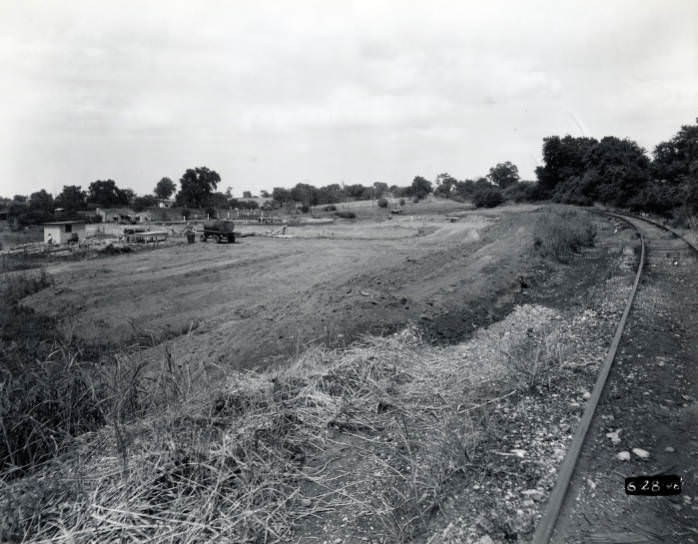
By 1948, the Ferro Enamel Corporation, a Cleveland, Ohio producer of vitreous porcelain enamels and allied products had opened its new clay processing plant in Nashville. There was an increased postwar demand for home building materials in the years after WWII. The consulting engineers on the project were the Foster & Creighton General Contractors. The Foster & Creighton construction contracting firm was founded in 1885 by Wilbur F. Foster and Robert T. Creighton, who had both served as City Engineer of Nashville.
#69 Ferro Enamel Company Plant, Nashville, Tennessee, 1946
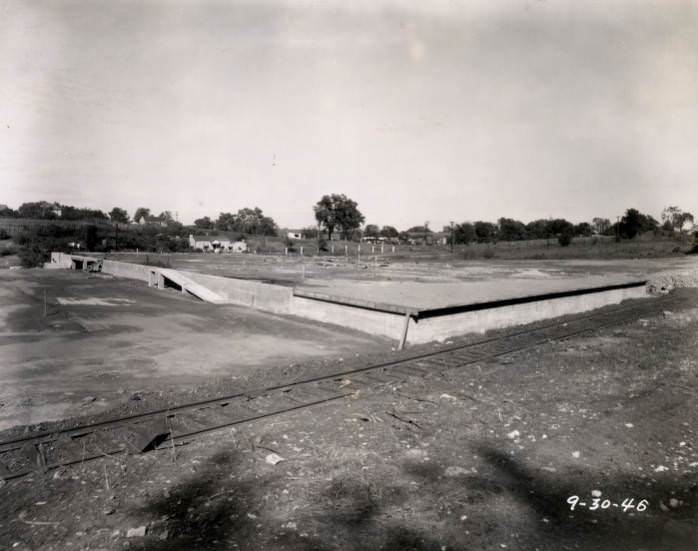
By 1948, the Ferro Enamel Corporation, a Cleveland, Ohio producer of vitreous porcelain enamels and allied products had opened its new clay processing plant in Nashville. There was an increased postwar demand for home building materials in the years after WWII. The consulting engineers on the project were the Foster & Creighton General Contractors. The Foster & Creighton construction contracting firm was founded in 1885 by Wilbur F. Foster and Robert T. Creighton, who had both served as City Engineer of Nashville.
#70 Ferro Enamel Company Plant, Nashville, Tennessee, 1947
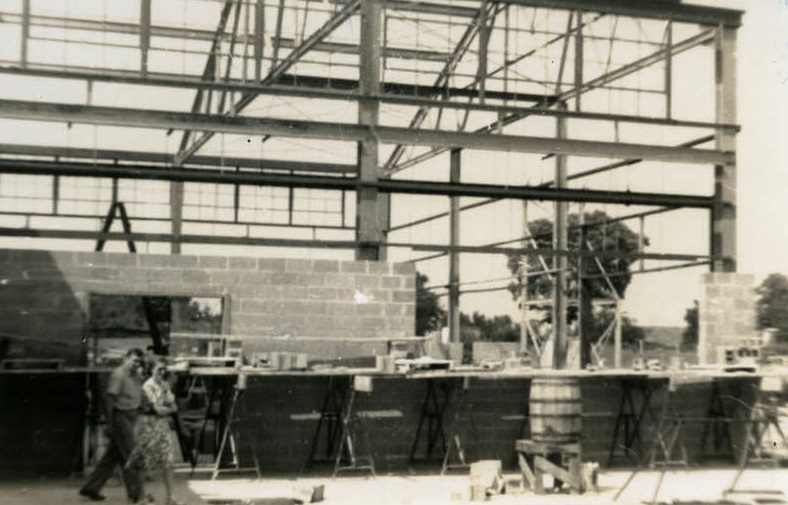
The construction site of the Ferro Enamel Plant, an enamel frit processing facility established in Nashville, Tennessee. By 1948, the Ferro Enamel Corporation, a Cleveland, Ohio producer of vitreous porcelain enamels and allied products had opened its new clay processing plant in Nashville. There was an increased postwar demand for home building materials in the years after WWII. The consulting engineers on the project were the Foster & Creighton General Contractors. The Foster & Creighton construction contracting firm was founded in 1885 by Wilbur F. Foster and Robert T. Creighton, who had both served as City Engineer of Nashville. Forms part of the Foster & Creighton General Contractors Collection. 1 b & w photograph
#71 Ferro Enamel Company Plant, Nashville, Tennessee, 1948
#72 Ferro Enamel Company Plant, Nashville, Tennessee, 1947
#73 Ferro Enamel Company Plant, Nashville, Tennessee, 1948
#74 Ferro Enamel Company Plant, Nashville, Tennessee, 1948
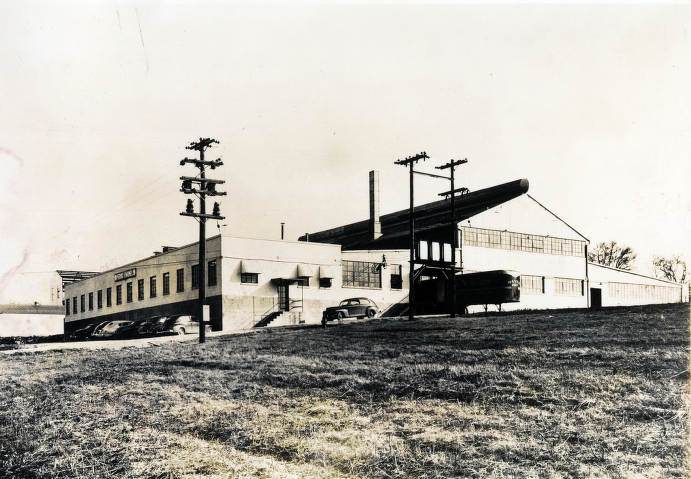
An exterior view of the Ferro Enamel Plant, an enamel frit processing facility established in Nashville, Tennessee. By 1948, the Ferro Enamel Corporation, a Cleveland, Ohio producer of vitreous porcelain enamels and allied products had opened its new clay processing plant in Nashville. There was an increased postwar demand for home building materials in the years after WWII.
#75 Goodyear Tire and Rubber Company Plant, Nashville, Tennessee, 1945
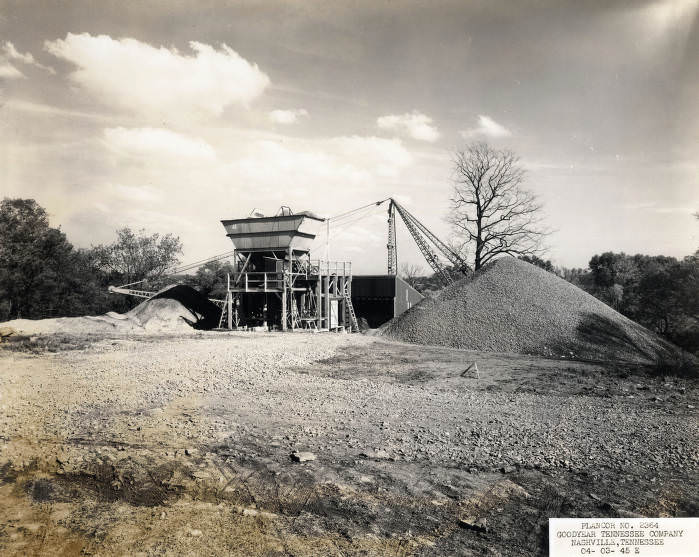
This was a construction project of the Foster & Creighton General Contractors. The picture shows “construction progress on Plancor 2364 Goodyear Tennessee Co., Nashville, Tennessee at time work was stopped July 19, 1945.” The verso description reads: “view showing dry batching plant for concrete and cement storage house located on the Cumberland River.” The project originated in a government contract between the construction firm and the U.S. Corps of Engineers. The Foster & Creighton construction contracting firm was founded in 1885 by Wilbur F. Foster and Robert T. Creighton, who had both served as City Engineer of Nashville.
#76 Goodyear Tire and Rubber Company Plant, Nashville, Tennessee, 1945
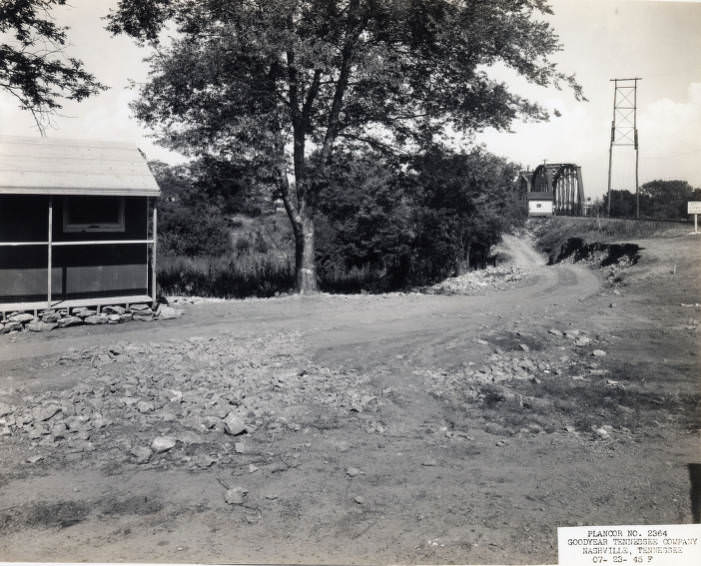
This was a construction project of the Foster & Creighton General Contractors. The picture shows “construction progress on Plancor 2364 Goodyear Tennessee Co., Nashville, Tennessee at time work was stopped July 19, 1945.” The verso of the photo reads: “view looking East showing a portion of a temporary building at the left and at the right of the picture is access road partially completed from the old Hydes Ferry Road to the River Pumping Station, Building 9. This access road is on the North side of the Tennessee Central Railway right-of-way.” The project originated in a government contract between the construction firm and the U.S. Corps of Engineers. The Foster & Creighton construction contracting firm was founded in 1885 by Wilbur F. Foster and Robert T. Creighton, who had both served as City Engineer of Nashville.
#77 Goodyear Tire and Rubber Company Plant, Nashville, Tennessee, 1945
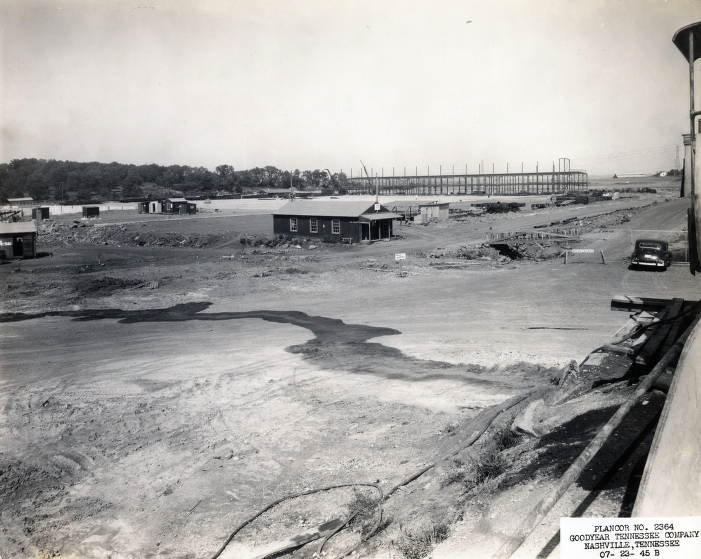
This was a construction project of the Foster & Creighton General Contractors. The picture shows “construction progress on Plancor 2364 Goodyear Tennessee Co., Nashville, Tennessee at time work was stopped July 19, 1945.” The verso of the photo reads: “view looking Southwest showing temporary buildings and general condition of plant site and the portion of steel erected at the West end of Building No.1.” The project originated in a government contract between the construction firm and the U.S. Corps of Engineers.
The Foster & Creighton construction contracting firm was founded in 1885 by Wilbur F. Foster and Robert T. Creighton, who had both served as City Engineer of Nashville.
#78 Henry Driver home being razed, Nashville, Tennessee, 1941
#79 James Robertson Apartment Hotel, Nashville, 1940
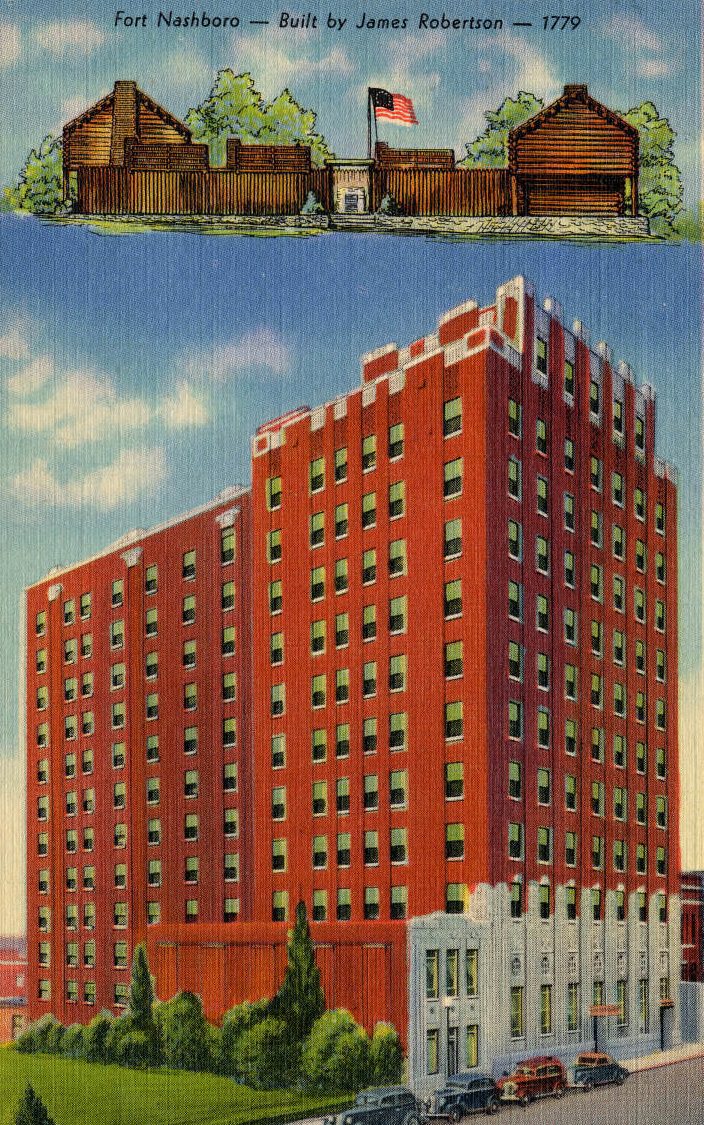
Also pictured is a reproduction of Fort Nashboro, the log fort built by James Robertson, founder of Nashville, in 1779. The James Robertson Apartment Hotel was dubbed "The South's Finest" and named after this famous pioneer. The architecture of the structure is in the art deco style. Completed in 1929, this building served as the base hotel for the Opry stars playing at the Ryman Auditorium. Today the building is used as income restricted apartments.
#80 Johnson Cleaners adds another truck, from the Nashville Times, 1940
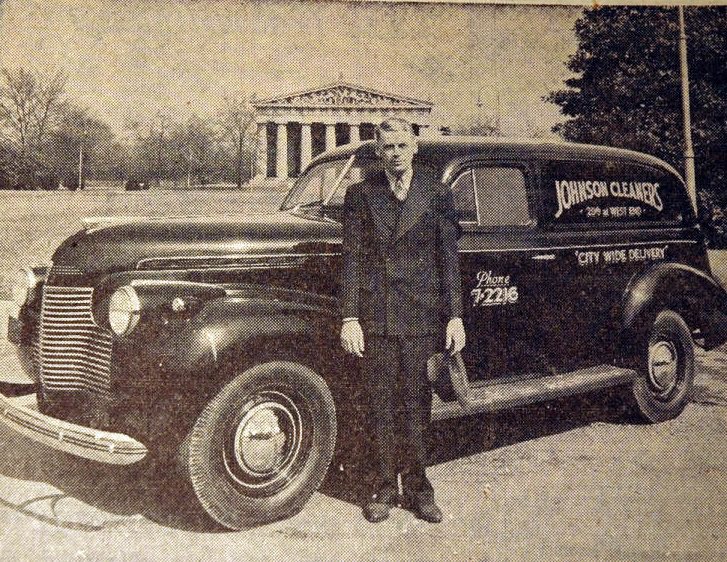
A captioned photo from the Nashville Times (1940), about the new delivery truck of Johnson Cleaners. The truck and driver are pictured in front of the Parthenon in Centennial Park. The 1941 City Directory cites businessman Edwin C. Johnson, with addresses at 101 29th Avenue N and br 400 8th Avenue S.
#81 Lockheed “Hudson” bombers at Municipal Airport, 1941
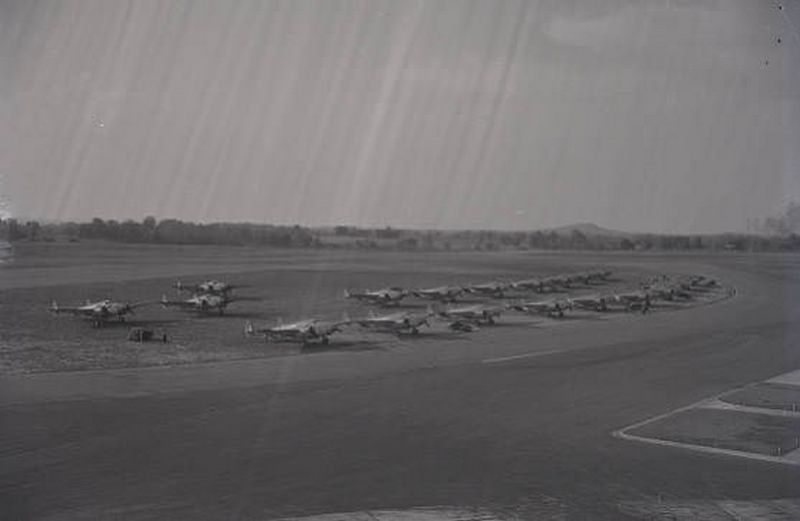
A published article from the “Nashville Banner” newspaper the following day: “Bombers for Britain concentrated at Airport: With twenty-three Lockheed Hudson medium bombers, camouflaged and bearing British insignia, lined up at Municipal Airport today, the field attained increasing importance as a place of temporary storage of bombers manufactured for use by Britain.
This is the largest number of planes “bound for Britain” to be concentrated here since the Lockheed factory in California began flying bombers to New York and Canada for shipment to Britain.
There was speculation that the number brought here might grow much larger when it was reported the reason for the concentration is that Floyd Bennett Field in New York already is full of planes awaiting shipment. The factory, near Glendale, Calif., is turning them out at the rate of five a day, it was reported.
The airport has the capacity to store 100 such bombers without impairing its efficiency. Thirteen of the bombers arrived Friday, and yesterday the second group of ten was flown here from the factory.
Twenty of the planes, valued at more than $2,000,000, are shown at the airport. There huge size may be judged by a comparison with the automobile (arrow) near them on the field.
#82 Lockheed “Hudson” bombers at Municipal Airport, 1941
#83 Meharry Medical College – Nashville, 1943
#84 Nashville Children’s Theatre Carnival, 1941
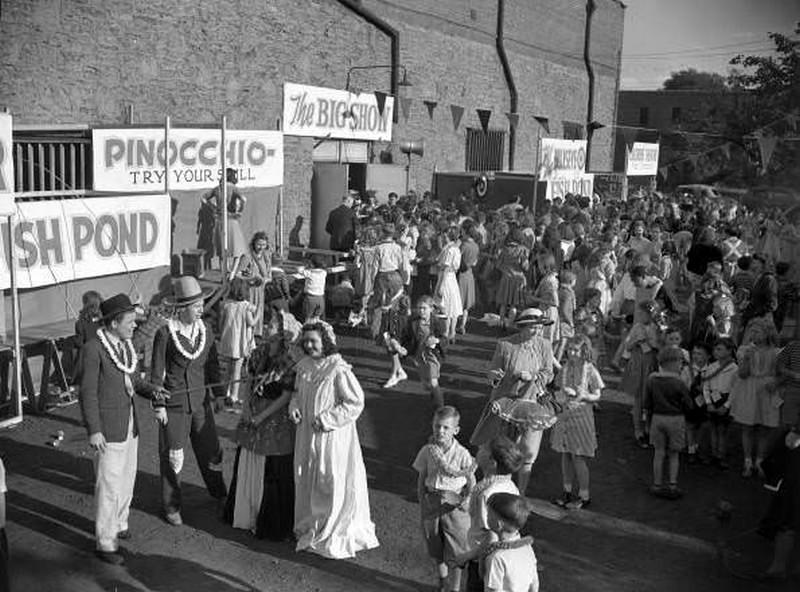
This excerpt ran with the Nashville Banner newspaper story on May 14, 1941 about the event: "The parking space at the side of the Community Playhouse on Carleton Avenue was transformed into the carnival site yesterday afternoon as J. B. Hager, president of Union Ice Cream Company, entertained children who regularly attend the performances of the Children's Theatre, a Junior League sponsored project.
This carnival started three years ago when Mrs. Walter Fort was talking to Hager about the way children attending the performances destroyed their programs. The Union Ice Cream Company president hit upon the idea to let his company sponsor an entertainment to regard all those good children who preserved their programs.
The carnival is given for all children who can present the complete set of programs from Children's Theatre performances as admission to the annual entertainment."
#85 Nashville City Schools, Carter-Lawrence Elementary, 1949
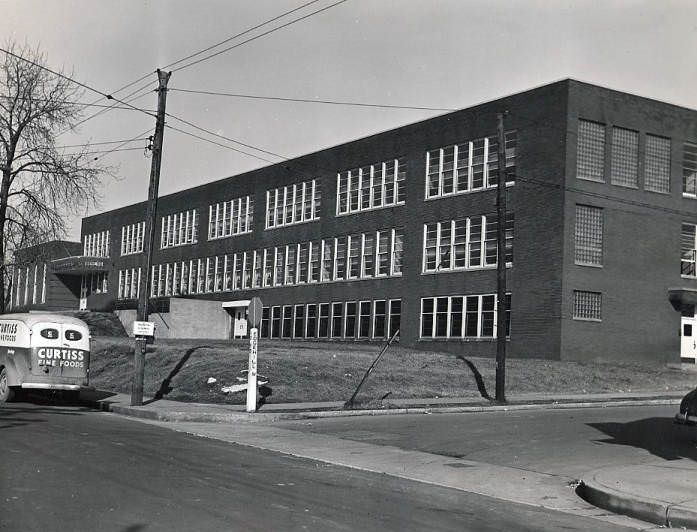
Carter Elementary, containing grades one through six, was located just north of the present site on 12th Avenue South. Lawrence Elementary, containing grades one through three, was located on South Street. Carter was named in memory of Howard C. Carter, a teacher in the Nashville city schools, and Lawrence was named for Judge John Lawrence, a member of the Board of Education.
#86 Nashville City Schools, Cavert School, 1949
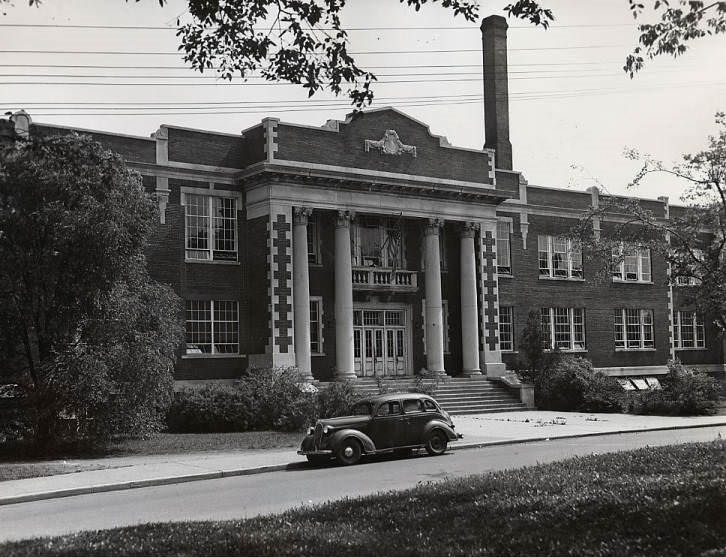
Cavert School opened in September of 1928 for students in grades one through nine. The school was named for Dr. A.J. Cavert who served as principal at Howard, Fogg, Hume, Fall and Warner schools among others. Cavert became a junior high in 1936 when Eakin school was opened. An addition was made that same year, and a new gymnasium was built in 1964.
#87 Nashville City Schools, Fall School, 1949
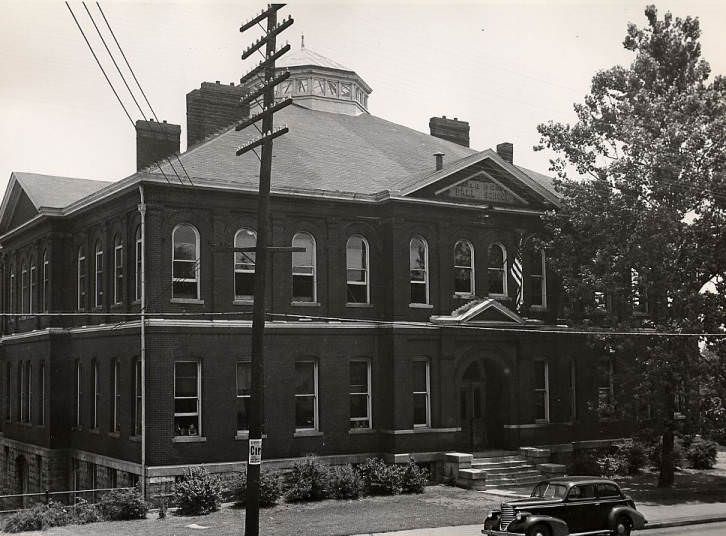
Located on the corner of 8th Avenue South and Chestnut Street, Fall school was named for Philip Slater Fall, a prominent Nashville businessman and member of the Board of Education from 1865-1867. Since the school had no bell, a flag was put out in each. Front fence corner to signal that school was open. Fall school was built in 1898 and was in continuous use until a merger in 1970 when it became Fall-Hamilton Elementary, currently located on Wedgewood Avenue.
#88 Nashville City Schools, Head Elementary, 1949
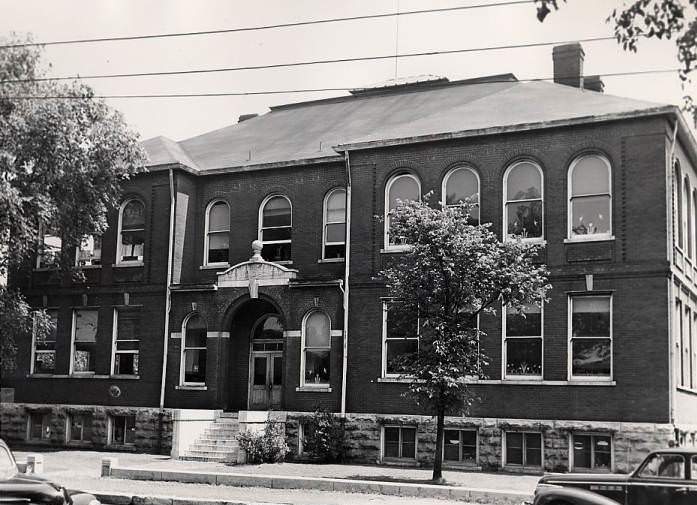
Located on 16th Avenue North, E.S. Brugh was the school's first principal. A new school building was built in 1952 to accommodate grades one through six, and the old building was torn down to make way for the John Henry Hale Homes. The school has been a part of many special programs over the years including Head Start, special education, Project Follow Through as well as others. Currently known as Head Math and Science Magnet School, it is located on Jo Johnston Avenue
#89 Nashville City Schools, Lipscomb Elementary, 1949
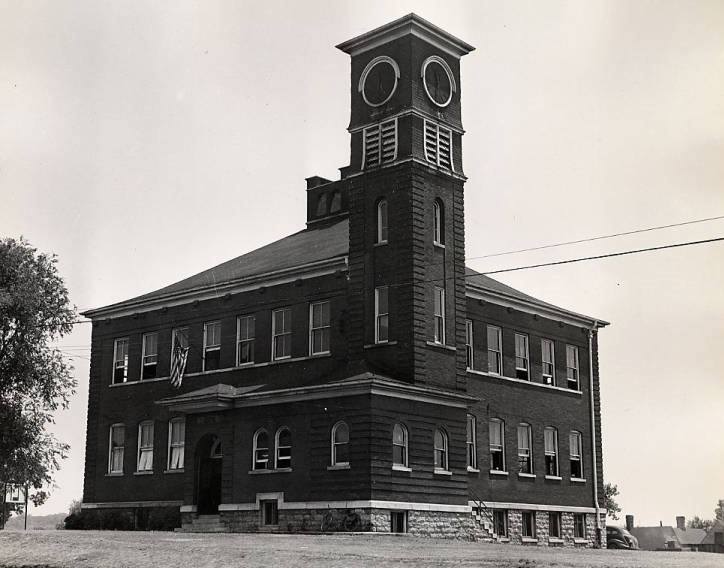
Lipscomb Elementary opened in South Nashville in 1907. Before the school was built, the property held Fairfield Plantation. Following the plantation was a convent where it is thought the first Lipscomb classes may have been held. The school was named for James Lipscomb, and the first principal was W.N. Tucker. The school closed in 1960
#90 Nashville City Schools, Napier Elementary, 1949
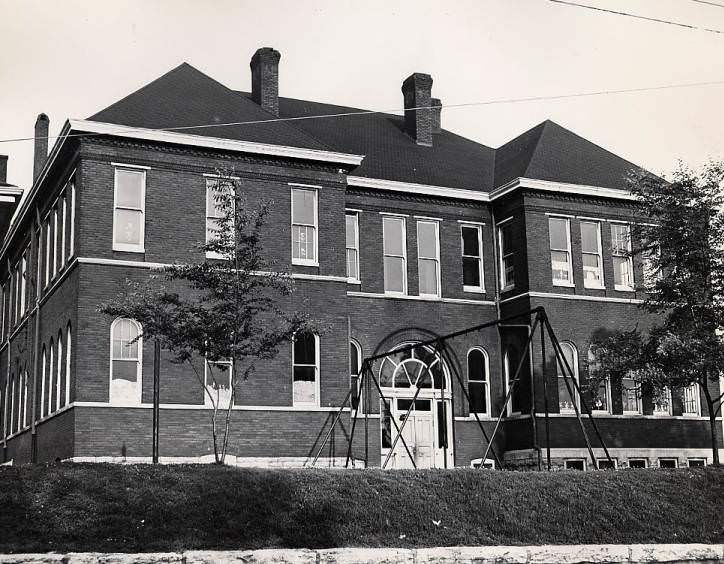
Named after Alonzo Napier, brother of J.C. Napier, this original Napier school building, seen here from the side, opened mid way through the 1897-1898 school year. It was located at the corner of Robinson and Fairfield. Completion of the school relieved the student population at Pearl School. Napier was modeled after the room plan in which a teacher had her pupils before him or her the entire day, while many of the Nashville schools followed the hall plan. A three-stage building program was completed in 1966, replacing the original structure.
#91 Nashville City Schools, Ross School, 1949
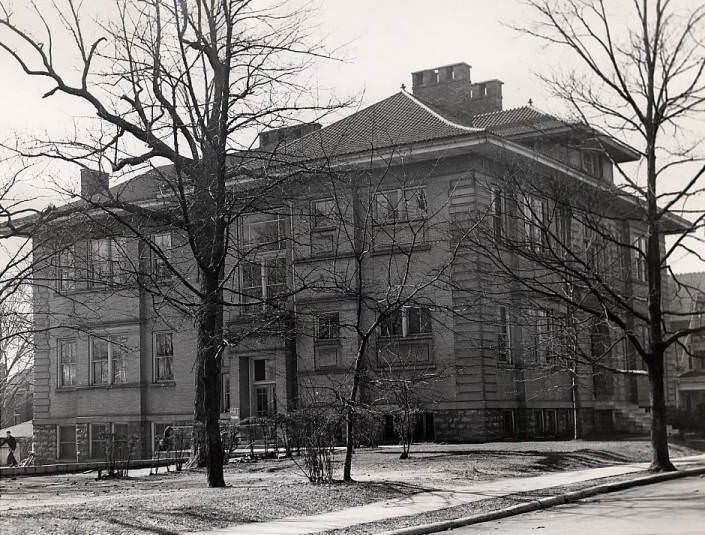
Located on Grove Avenue, which later became Ordway Place, Ross School was erected in 1907. The school was named for Marcus M. Ross who worked as a teacher and principal for Nashville city schools. In 1933, a tornado that swept through East Nashville damaged the school building. The structure closed in 1988, and a new building was constructed on McFerrin Avenue at the site of the old East High School football field
#92 Nashville City Schools, Tarbox School, 1949
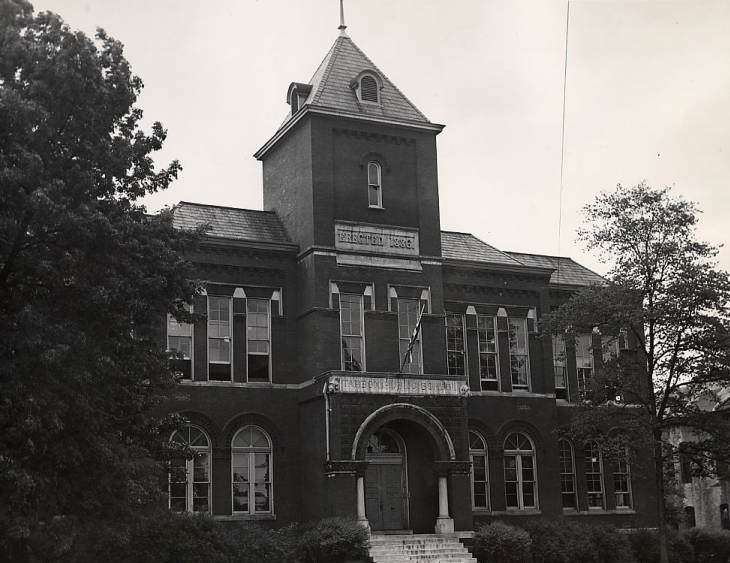
Tarbox School opened in 1880 on 17th Avenue between Hayes Street and West End Avenue. It was named for L.G. Tarbox who served as principal of Hume school. In 1886, a new three story, brick building with a six-story bell tower was constructed and opened on Broad Street. George B. Elliot served as the first principal in the new building. A fence with two gates surrounded the school. Boys entered by the west gate, and girls entered by the east gate. On April 1, 1932, a fire destroyed the tower and front of the school building. All students were evacuated safely. The building was rebuilt with only two stories instead of three. The school closed in 1960
#93 Nashville City Schools, Washington Junior High, 1949
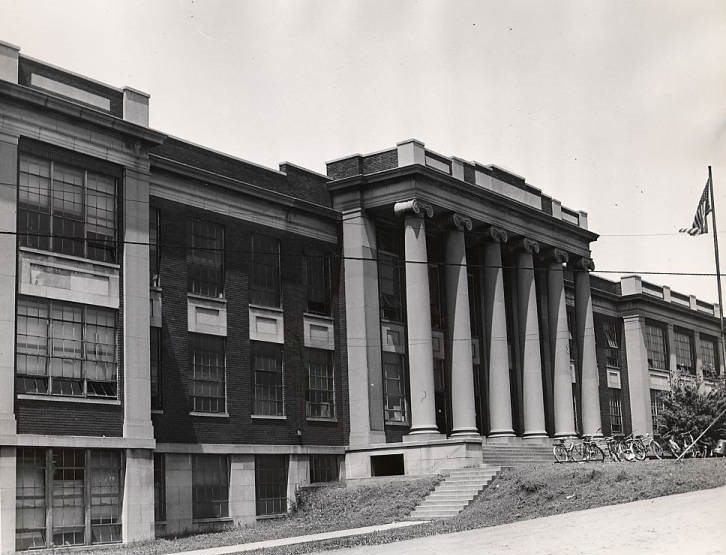
Washington Junior High opened in September of 1928 for students in grades seven through nine. It was named for George E. Washington, a prominent Nashville educator and former principal of Pearl High School. J.A. Galloway was the school's first principal. Additions to the school were made throughout the 1940's and 1960's. Washington housed students from grades six through eleven over the years to help relieve student population in other schools. Washington Junior High School was torn down in the mid 1980's
#94 Nashville City Schools, Wharton School, 1949
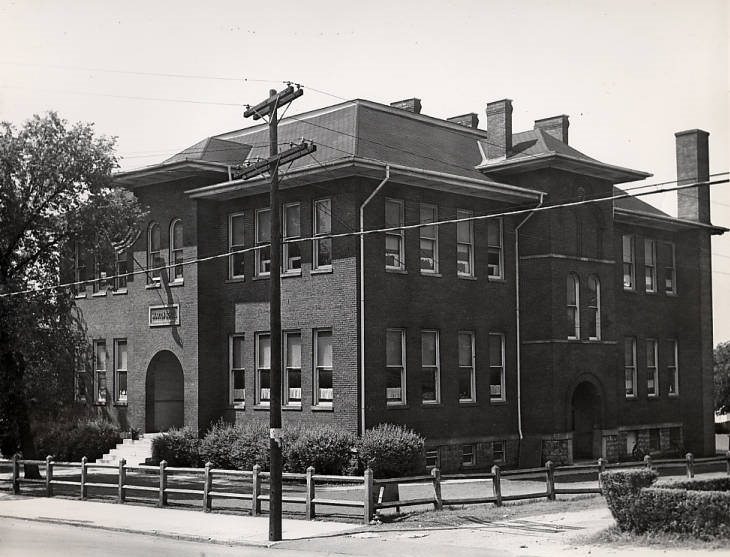
Wharton School was named for Arthur Dickson Wharton who served as principal and professor at various Nashville schools. According to Annual Reports of the Public Schools of Nashville, Tennessee, Wharton school had been occupied for one year at the close of the 1905-1906 school year. At that time, the building was unfinished but was completed in the next couple of years. The original school building housed grades one through four, and W.J. Myers was listed as principal during the school's first year. A new building was built in 1959 on Eighteenth Avenue North
#95 Nashville Symphony Orchestra, 1948
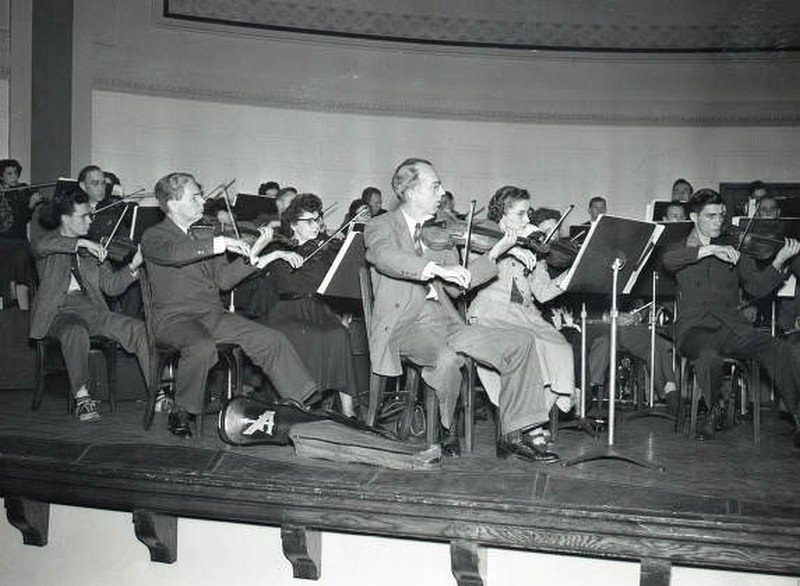
The orchestra was conducted by William Strickland. The Nashville Symphony's beginnings can be traced to 1945, when World War II veteran and Nashville native Walter Sharp returned home intent on establishing a new symphony orchestra for Middle Tennessee. With the assistance of a small number of fellow music lovers, he convinced community leaders of this need and the Nashville Symphony was founded. Sharp retained William Strickland, a young conductor from New York, to serve as the first music director and conductor. The orchestra performed its first concert in the fall of 1946 at War Memorial Auditorium in downtown Nashville. Over the next five seasons, Strickland was responsible for setting the high-performance standards that the orchestra and its conductors have maintained to this day.
#96 Nashville Vols baseball team celebrate a win, 1948
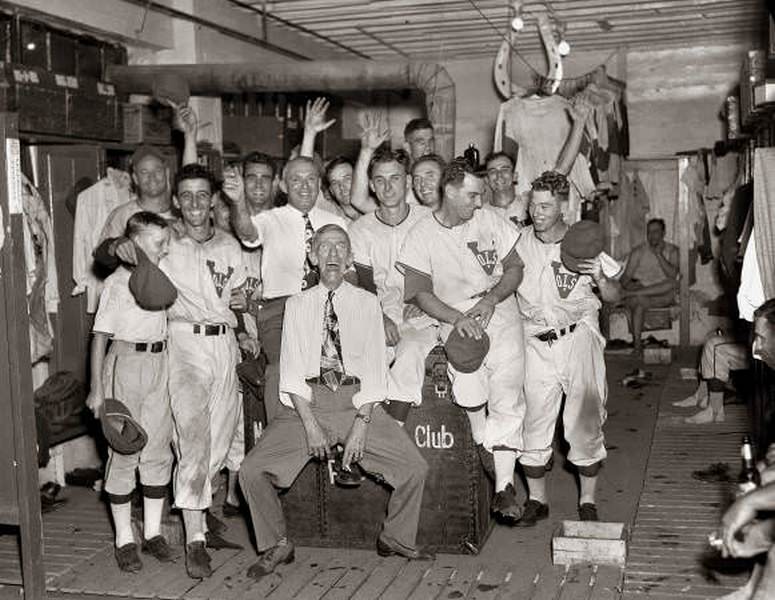
This photograph ran in the 22 September 1948 edition of the Nashville Banner with the caption, "Vols Hope To Rubber Stamp This Scene Soon - Twice now, the Vol club house has been the scene of a mild celebration such as you see here after Nashville's 18-2 victory over Mobile last night which put the Gilbertmen in the playoff finals against Birmingham. A similar demonstration took place after the pennant was clinched. It's a scene the Vols hope to duplicate with extra touches after the series with the Barons. The winner will play in the Dixie Series. In the first row (left to right) are Batboy Skeets Thompson, Carmen Mauro, Manager Larry Gilbert, Road Secretary W. A. Lillard, Pete Mallory (who bear the Bears with a six-hit job), Coach George Hennessey and Buster Boguskie.
#97 Nashville’s Schools teach democratic principles and prepare to defend them, 1941
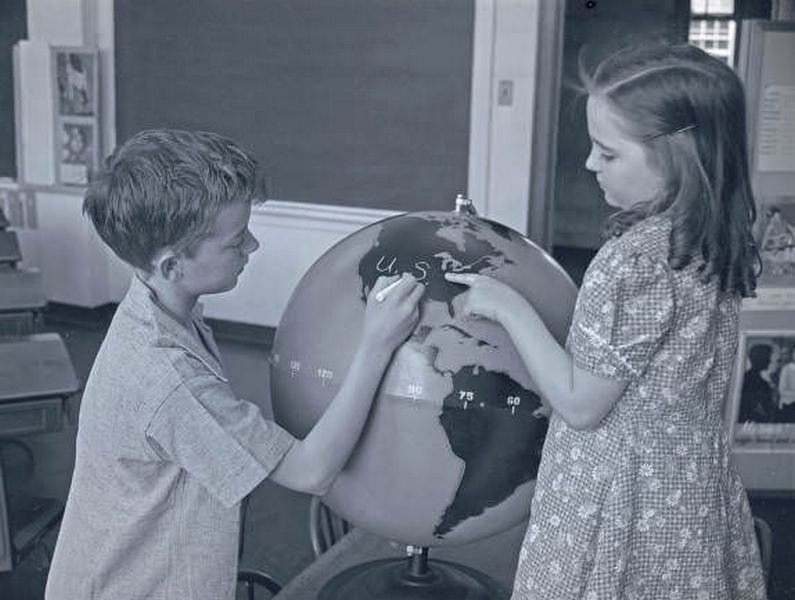
Not only are young people taught the fundamentals of their form of government, but they are taught the necessary principles of preserving it … one of the few sight-saving classes in the State is now being conducted at Eakin School, and Jack Moore, 12, fifth grade, and Billie Jo Earhart, 9, third grade, are shown inspecting their special, unlettered map which is said to aid vision
#98 Nashville’s Schools teach democratic principles and prepare to defend them, 1941
#99 Navy Submarine Chaser launched by Mrs. Francis Craig in Nashville, Tennessee, 1942
#100 Navy Submarine Chaser launched by Mrs. Francis Craig in Nashville, Tennessee, 1942
#101 Navy Submarine Chaser launched by Mrs. Francis Craig in Nashville, Tennessee, 1942
#102 The circulation desk of the Nashville Public Library, 1948
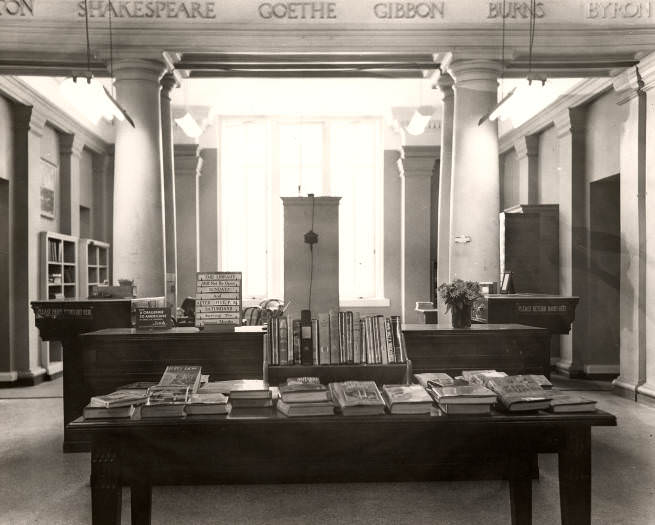
Doric columns are a significant feature of the interior architectural design. The main public library building was constructed with a $100,000 grant from philanthropist Andrew Carnegie, and the cornerstone was laid on April 27, 1903. Officially opened to the public on September 19, 1904, the building was located at 8th Avenue North and Union Street. The Carnegie Library of Nashville was renamed the Nashville Public Library in 1934, being active at this location until 1963, when the new Metropolitan Government began construction on a new main library upon the site.
#103 Photograph of the Nashville Public Library bookmobile, 1941
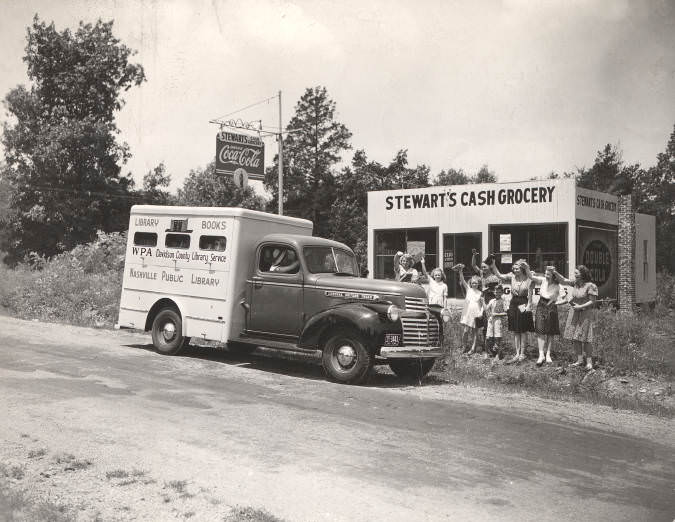
A photograph showing young people greeting the arrival of the Nashville Public Library bookmobile, circa July, 1941, at Stewart's Cash Grocery in Davidson County, Tennessee. Mrs. Frances Parkes and Mrs. Leah Rose, employees of the Nashville Public Library, traveled with the truck on its service route to rural residents in the outlying communities. The bookmobile project was under the direction of Librarian F. K. W. (Francis Keese Wynkoop) Drury and sponsored by the Works Progress Administration, the Nashville Public Library, the County School Library and the local Rotary Club. The bookmobile service in Davidson County, Tennessee originally began in the 1940's, when the State Library Project furnished a bookmobile which made weekly demonstration rounds through the county.
#104 Salvage scrap drive in Nashville and Middle Tennessee region, 1942
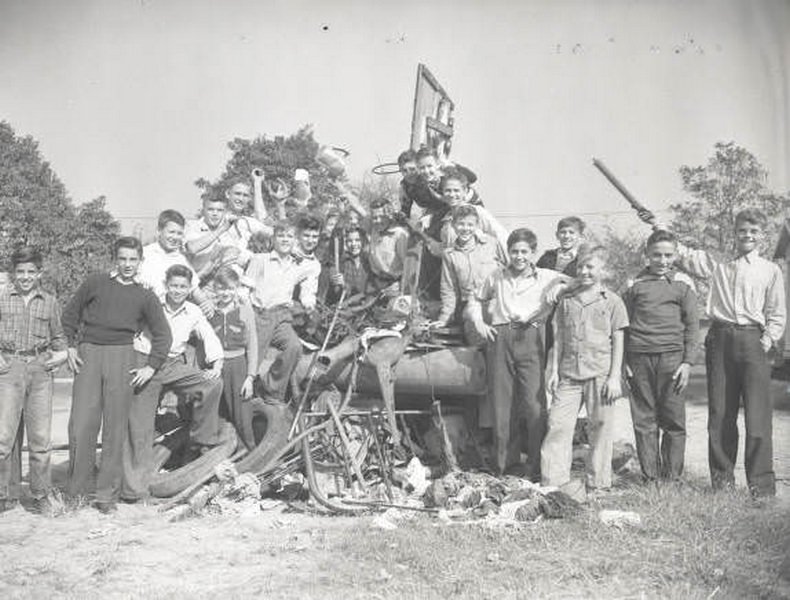
Seen surrounding their school scrap pile are members of the school’s red and blue armies, which are conducting a scrap ‘war’ within the student body. Included in the group are Bobby Ezell and Edward Walls, captains of the blue army; David Bernal and Murray Hood, captains of the red army; Robert Robertson, Billie O’Donnell, Bernell Cargile, Walter Ward, Billie Spann, Edward McNeese, Lewis Hinson, Roy Chrisman, Fred Siegrist, Brown Herd, Carlton Owen, Jimmy Newman, Danny Donoho, Oscar Jones, John Jones, Roy Davis, Fred Jones, Robert Lunn, James Cotbern, John Pugh, and Clyde Siegrist.” During World War II Americans were active with scrap drives to help the war effort. Local communities were salvaging raw materials such as metal, rags, rubber, and paper to be used to supply troops. These special home front war programs were often well-coordinated through committees that engaged widespread urban and rural participation and motivated patriotism and community spirit.
#105 Schoolchildren participating in the May Day events at Eakin Elementary, Nashville, Tennessee, 1941
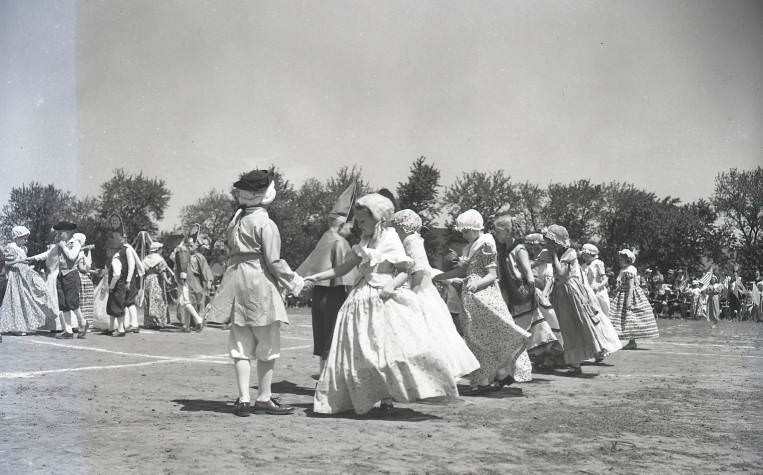
Schoolchildren participating in May Day events at Eakin Elementary School on May 9th, 1941. Eakin Elementary School, located at 2400 Fairfax Avenue in Nashville, Tennessee, was completed as a new two-story structure in 1936. Its student body, grades 1-6 was moved from Cavert School which is adjacent to the Eakin School campus. The new school was named in honor of Mrs. John Hill Eakin, the first woman member of the Nashville City School Board of Education and the founder of the Centennial Club. Initially there were 650 students and 13 teachers.
#106 Schoolchildren participating in the May Day events at Eakin Elementary, Nashville, Tennessee, 1941
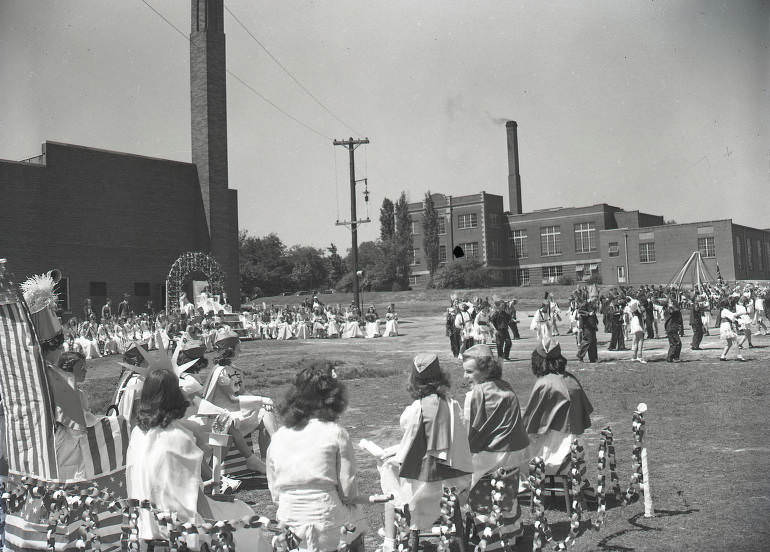
Schoolchildren participating in May Day events at Eakin Elementary School on May 9th, 1941. Eakin Elementary School, located at 2400 Fairfax Avenue in Nashville, Tennessee, was completed as a new two-story structure in 1936. Its student body, grades 1-6 was moved from Cavert School which is adjacent to the Eakin School campus. The new school was named in honor of Mrs. John Hill Eakin, the first woman member of the Nashville City School Board of Education and the founder of the Centennial Club. Initially there were 650 students and 13 teachers.
#107 Schoolchildren participating in the May Day events at Eakin Elementary, Nashville, Tennessee, 1941
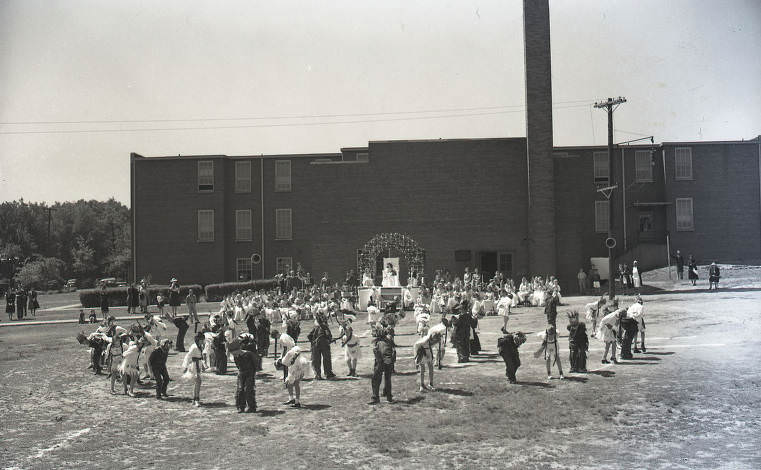
Schoolchildren participating in May Day events at Eakin Elementary School on May 9th, 1941. Eakin Elementary School, located at 2400 Fairfax Avenue in Nashville, Tennessee, was completed as a new two-story structure in 1936. Its student body, grades 1-6 was moved from Cavert School which is adjacent to the Eakin School campus. The new school was named in honor of Mrs. John Hill Eakin, the first woman member of the Nashville City School Board of Education and the founder of the Centennial Club. Initially there were 650 students and 13 teachers.
#108 St. Mary’s Orphanage, Nashville, Tennessee, 1941
#109 St. Mary’s Orphanage, Nashville, Tennessee, 1941
#110 St. Thomas Hospital Home for Nurses, Nashville, 1946
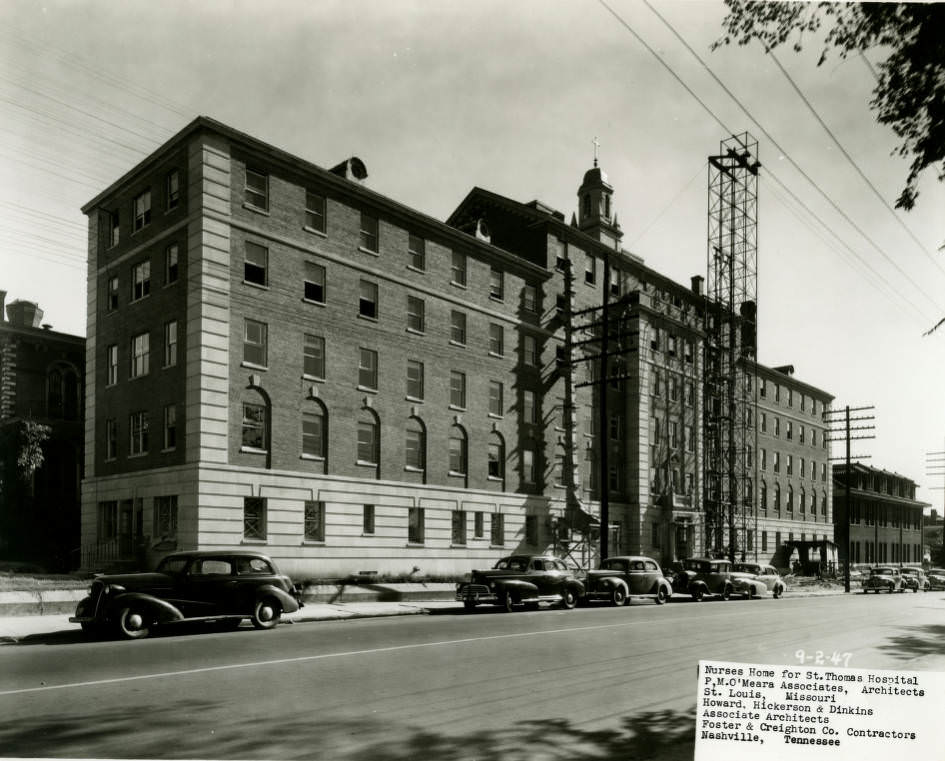
Photographs and some correspondence, spanning circa 1945-49, related to the construction of St. Thomas Hospital Home for Nurses, a Nashville project of the Foster & Creighton Co. Contractors.
The Nurses Home was located at 20th Avenue and Church in Nashville, Tennessee. Forms part of the Foster & Creighton General Contractors Collection.
#111 State Prison, Nashville, Tennessee, 1940s
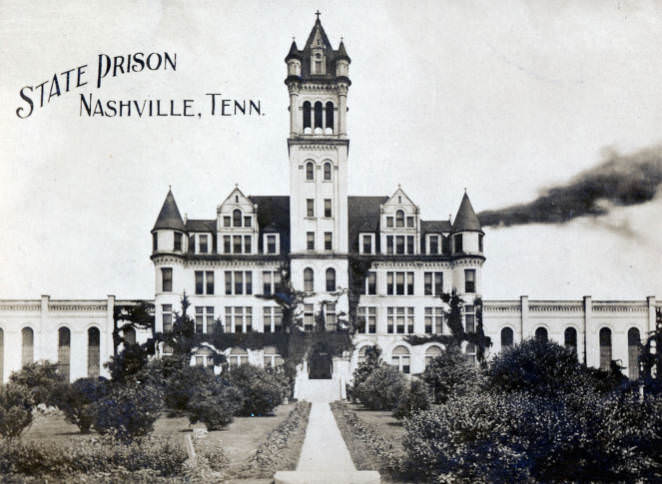
The prison facility, located off of Centennial Boulevard in West Nashville was built in 1897. This structure takes on the appearance of a Gothic castle. At the time of its construction, this building was considered one of the most modern and humane prisons in the United States. It was built almost entirely of materials indigenous to the state. S.M. Patton of Chattanooga served as the architect for the project.
The complex consists of the four-story, turreted Administration Building, the main prison building and the walled compound. The white brick Administration Building is connected by a passageway to the main prison building. Architectural elements include a central tower with turrets and dormers, conical roofs, arched windows and decorative corbelling. In 1992, the 400-cell prison ceased operations, and all remaining inmates were moved to one of the state's other corrections facilities. Since then, the empty building has been used various times as a movie and television set.
#112 Tennessee State Office Building, Nashville, 1949
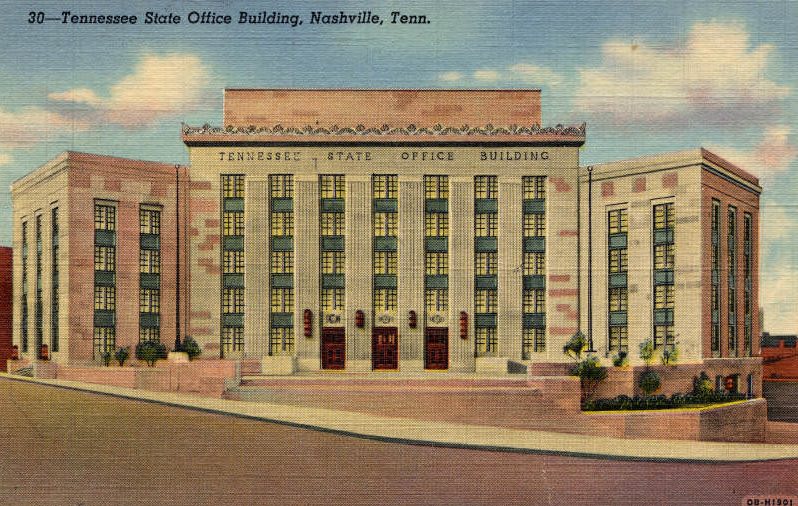
The 108,349 square foot building is an example of the "New Deal" era style of government buildings constructed in the 1930s. This building is known for housing famous Tennessee historical murals by Dean Cornwell. The murals give the pictorial history of Tennessee starting with the first white men who stopped on the bluffs near Memphis. The art was completed in the 1940s. Today the building is called the John Sevier Building after Nashville's first governor.
#113 Tennessee State Penitentiary, Nashville, Tennessee, 1943
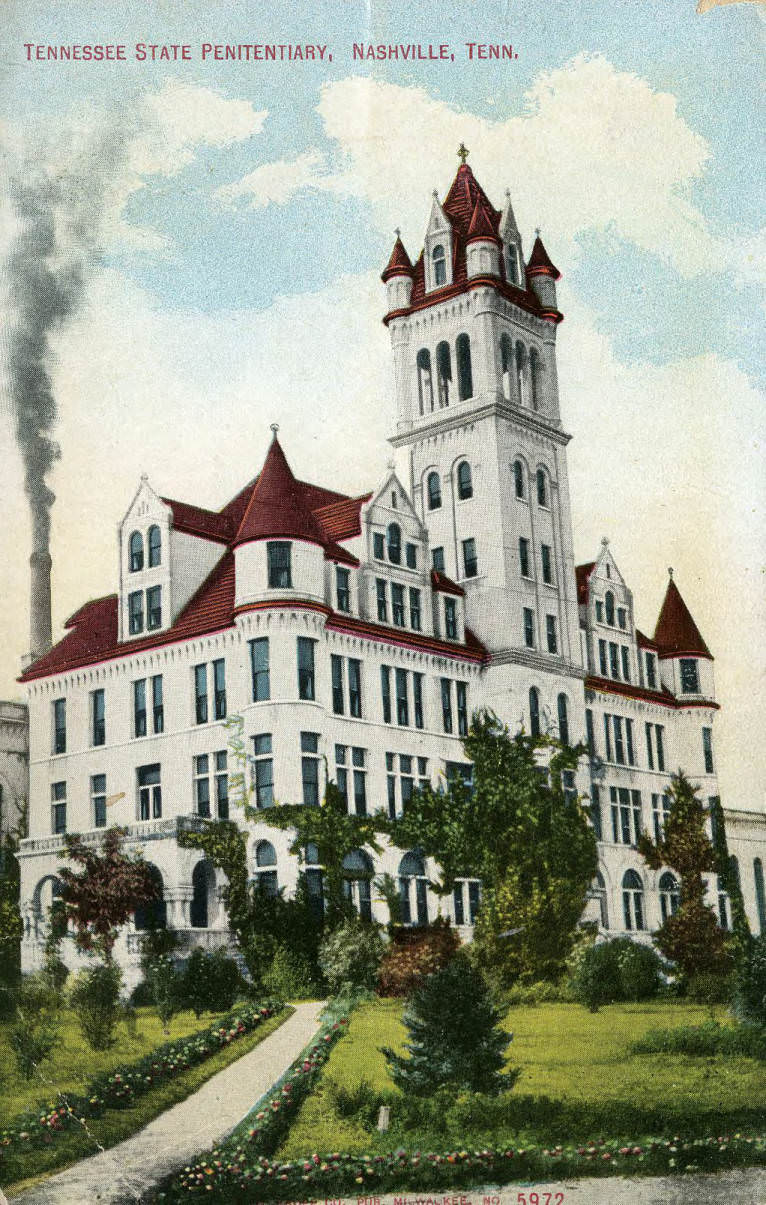
The Tennessee State Penitentiary, located off of Centennial Boulevard in West Nashville, was built in 1897. This structure takes on the appearance of a Gothic castle. At the time of its construction, this building was considered one of the most modern and humane prisons in the United States. It was built almost entirely of materials indigenous to the state. S.M. Patton of Chattanooga served as the architect for the project. The complex consists of the four-story, turreted Administration Building, the main prison building and the walled compound. The white brick Administration Building is connected by a passageway to the main prison building. Architectural elements include a central tower with turrets and dormers, conical roofs, arched windows and decorative corbelling.
#114 Tennessee Supreme Court, Nashville, 1940
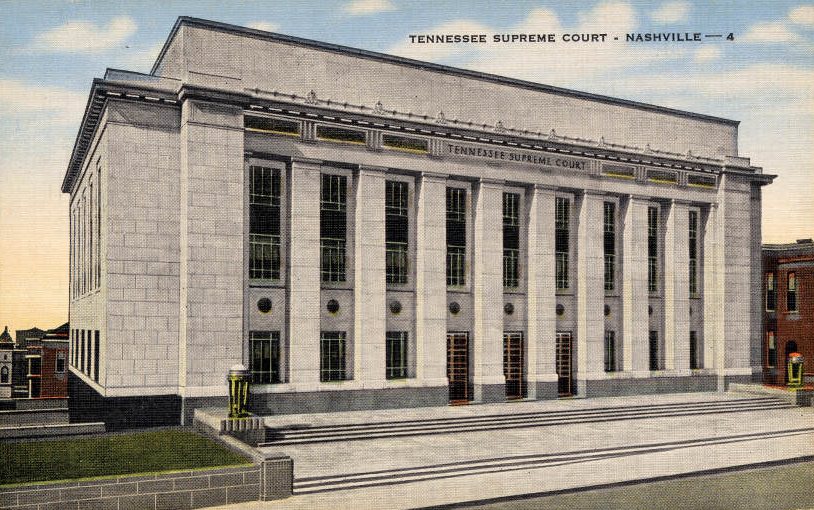
A postcard of the Tennessee Supreme Court Building located at 401 Seventh Avenue North, adjacent to the Capitol and War Memorial Building. This structure exemplifies a Greek Doric design that was very modern for its time. Built of Tennessee marble at a cost of $750,000, this Tennessee Supreme Court Building was dedicated December 4th, 1937.
#115 Tennessee Supreme Court, Nashville, Tennessee, 1940
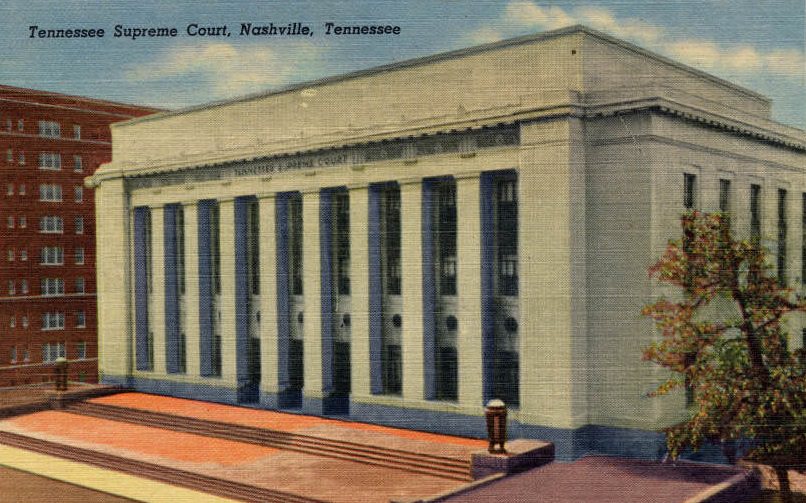
A postcard of the Tennessee Supreme Court Building located at 401 Seventh Avenue North, adjacent to the Capitol and War Memorial Building. This structure exemplifies a Greek Doric design that was very modern for its time. Built of Tennessee marble at a cost of $750,000, this Tennessee Supreme Court Building was dedicated December 4th, 1937.
#116 The Hermitage, home of President Andrew Jackson, near Nashville, 1941
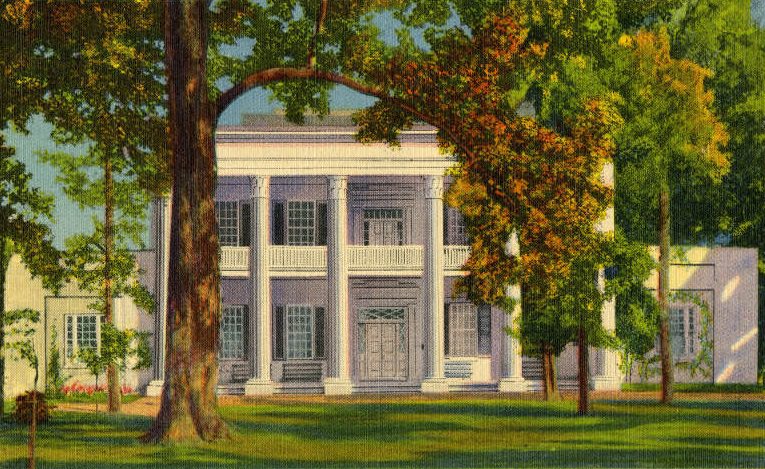
The architecture is colonial, the verandas are wide and long and the rooms inside are large and spacious. The original Hermitage was built of logs in 1804. The present mansion was built in 1819. Architectural details include a classic Greek Revival facade, with six Doric columns and a portico at the entrance. Andrew Jackson and his wife are buried on the grounds. In 1889 the Hermitage opened as a museum, and it continues to operate as one today under the leadership of the Ladies Hermitage Association. In 1966 the Hermitage was added to the National Registry of Historic Places.
#117 The K. Gardner Building, Nashville, Tennessee, 1947
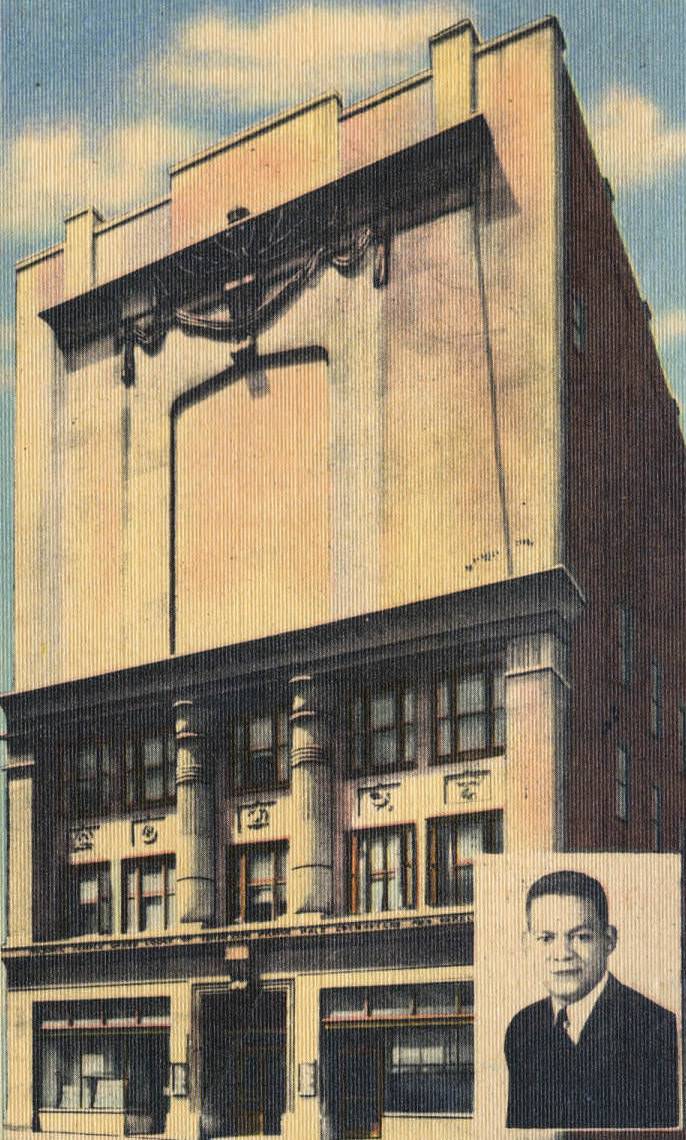
A color postcard of The K. Gardner Building (formerly Masonic Temple) located at 419 - 421 Fourth Avenue North in downtown Nashville, Tennessee, circa 1947. The verso of the postcard states that “located in this building are some of the finest medical clinics, x-ray, specialists, dentists, attorneys, photographers, beauticians, spacious dining room 4th floor, club rooms and dance hall on the 5th floor and balcony.” An inset picture of K. Gardner is on the postcard, with an exterior view of the building.
#118 The Stage Coach of General Andrew Jackson, 1941
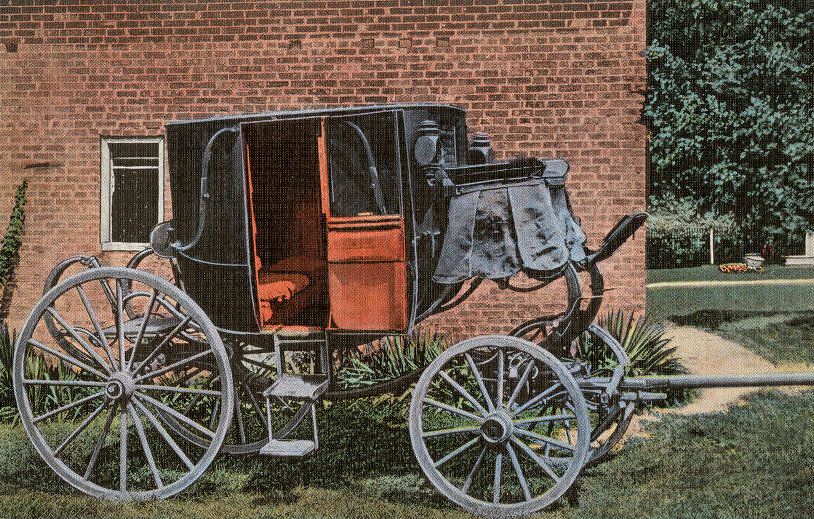
A postcard of the Stage Coach of General Andrew Jackson, Seventh President of the United States. The vehicle is pictured next to the old Smoke House at The Hermitage, home of President Jackson, located 12 miles east of downtown Nashville. The Jackson family carriage was a horse-drawn vehicle that was purchased while Jackson was president. The trip from the Hermitage into Nashville would have taken approximately an hour and a half.
#119 Two pilots about to leave on a mission, 1944
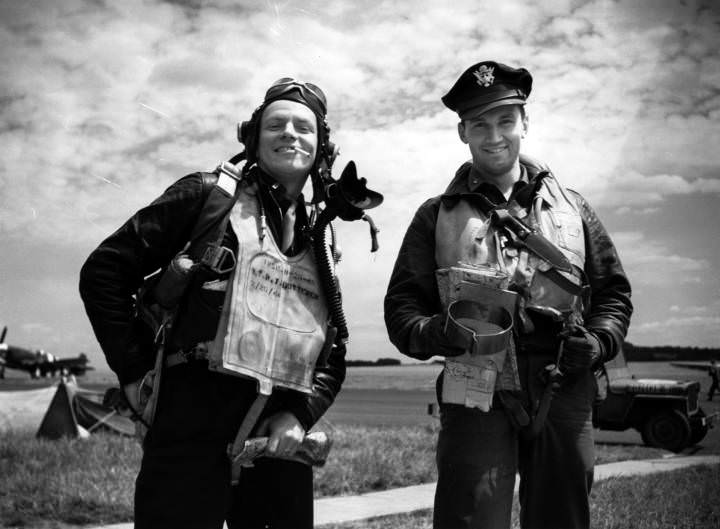
This photograph was later used in a tape for national broadcast that set out to show the everyday life of men serving in the war. Dotterer stayed in the service, and went on to fight in the Korean War. Louden was known for always carrying maps with him. He returned home to Pennsylvania after World War II.
#120 Union Station, Nashville, 1940
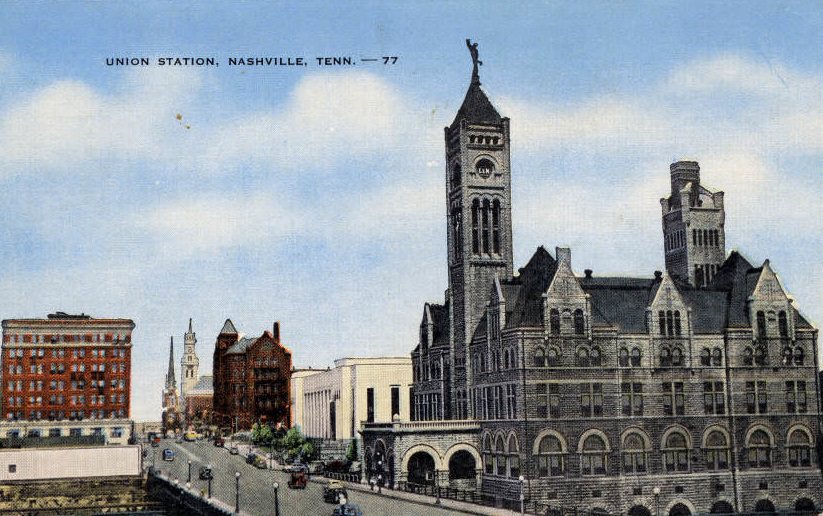
The former railroad terminal opened in 1900 to serve the passenger operations of the eight railroads then providing passenger service to Nashville, Tennessee. The station is located on Broadway at Tenth Avenue. The station is an example of late-Victorian Gothic Revival architecture. The tower was originally topped by a bronze statue of the Roman god Mercury, but this ornamentation was toppled in a storm in 1951. Station usage reached its peak during World War II when it was the shipping-out point for tens of thousands of U.S. troops and the site of a USO canteen. Usage declined steadily after the war. By the late 1970s service was discontinued and the station was abandoned entirely. In the 1980s the main structure reopened as a historic hotel. Finding a modern use for the train shed where passengers had waited to board proved to be a more difficult challenge. When plans of creating a farmers’ market with the shelter failed to come to fruition, the structure was demolished after its design had been carefully recorded. In 1969 Union Station was added to the National Register of Historic Places.
#121 Vauxhall Annex of the Vauxhall Apartments, Nashville, Tennessee, 1940
#122 Victor Cooley and unidentified sailor, 1944
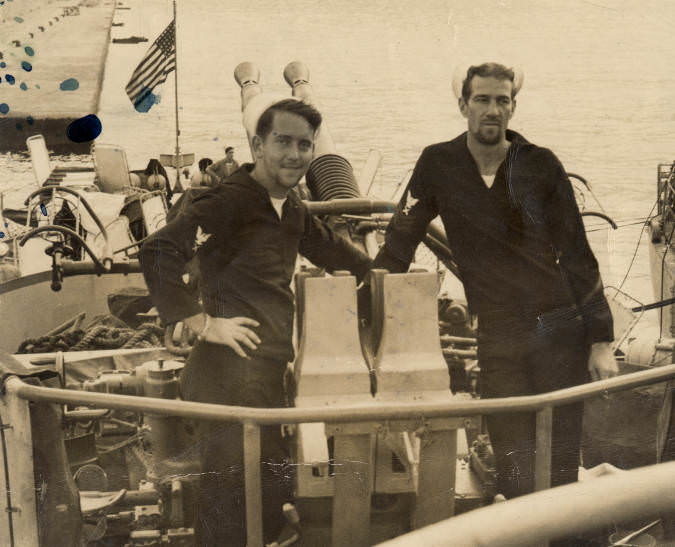
A photograph of Coast Guard sailor Victor Cooley (left) and an unidentified sailor aboard the destroyer escort, USS Mosley (DE-321), one of several Navy vessels manned by Coast Guard crews during World War II. The Mosley served on patrol in the Mediterranean, primarily in the vicinity of Tunisia and French Morocco. The two men pose casually by a deck gun with an American flag waving in the background.
#123 Wightman Chapel of the Belle H. Bennett Memorial, Scarritt College for Christian Workers, Nashville, 1940s
#124 Davidson County Public Building and Court House, Nashville, 1947
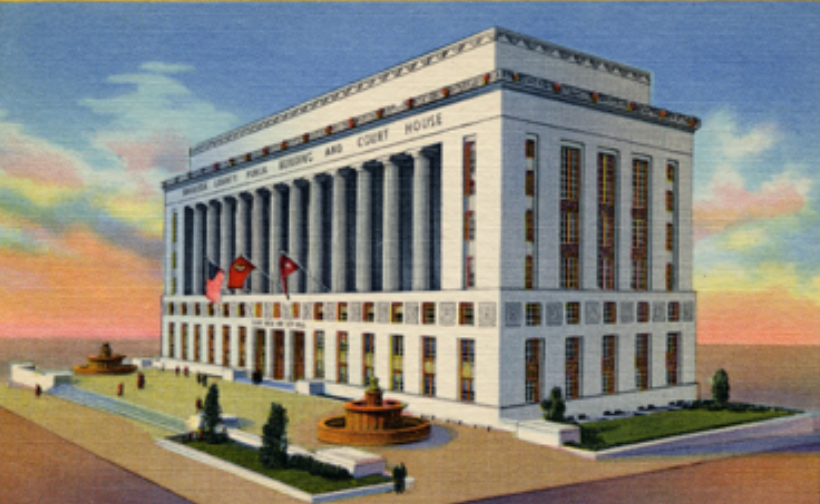
Front of a color postcard depicting the eight-story high Davidson County Public Building and Court House, completed in 1937 at a cost of $2,000,000. Located on the site of the Old County Court House, it housed the county administrative offices and county courts as well as the city administrative offices.
#125 Ferro Enamel Company Plant, Nashville, Tennessee, 1949
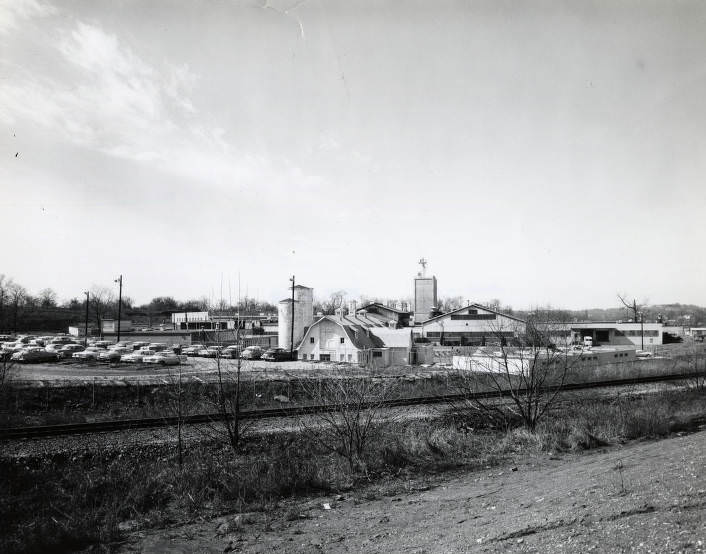
By 1948, the Ferro Enamel Corporation, a Cleveland, Ohio producer of vitreous porcelain enamels and allied products had opened its new clay processing plant in Nashville. There was an increased postwar demand for home building materials in the years after WWII. The consulting engineers on the project were the Foster & Creighton General Contractors. The Foster & Creighton construction contracting firm was founded in 1885 by Wilbur F. Foster and Robert T. Creighton, who had both served as City Engineer of Nashville.
#126 Ferro Enamel Company Plant, Nashville, Tennessee, 1949
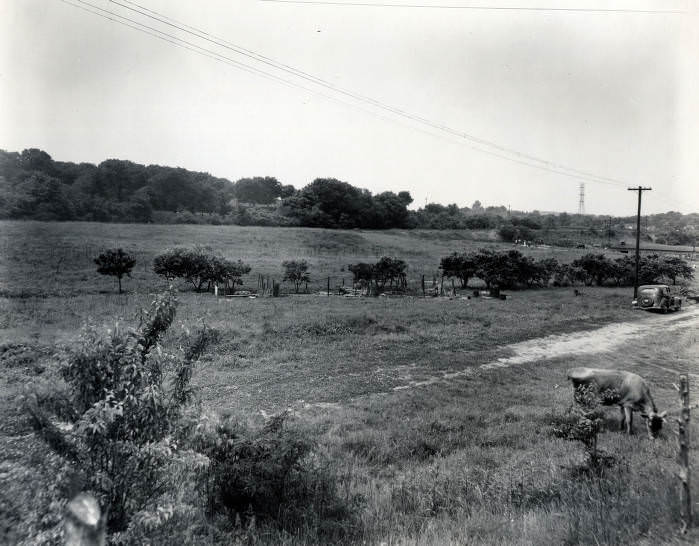
By 1948, the Ferro Enamel Corporation, a Cleveland, Ohio producer of vitreous porcelain enamels and allied products had opened its new clay processing plant in Nashville. There was an increased postwar demand for home building materials in the years after WWII. The consulting engineers on the project were the Foster & Creighton General Contractors. The Foster & Creighton construction contracting firm was founded in 1885 by Wilbur F. Foster and Robert T. Creighton, who had both served as City Engineer of Nashville.
#127 Ferro Enamel Company Plant, Nashville, Tennessee, 1949
#128 Ferro Enamel Company Plant, Nashville, 1949
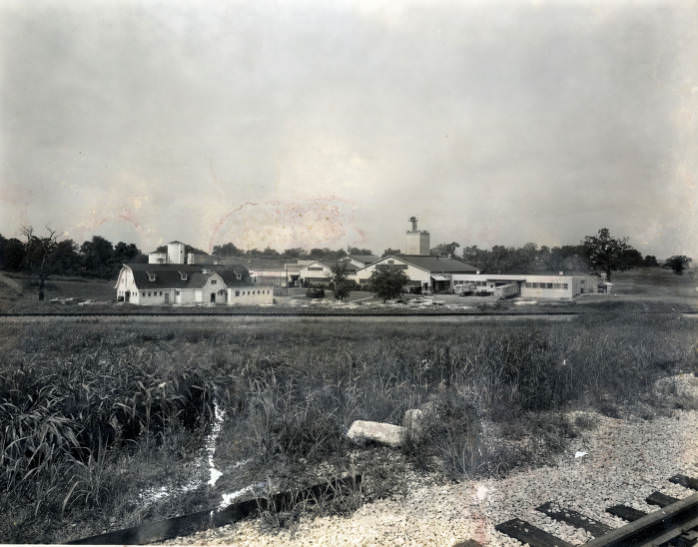
The construction site of the Ferro Enamel Plant, an enamel frit processing facility established in Nashville, Tennessee. By 1948, the Ferro Enamel Corporation, a Cleveland, Ohio producer of vitreous porcelain enamels and allied products had opened its new clay processing plant in Nashville. There was an increased postwar demand for home building materials in the years after WWII. The consulting engineers on the project were the Foster & Creighton General Contractors.
#129 Ferro Enamel Company Plant, Nashville, 1948
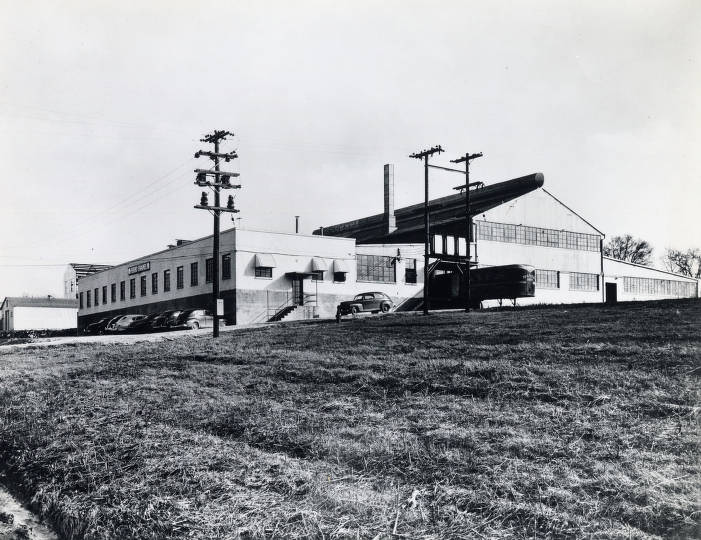
By 1948, the Ferro Enamel Corporation, a Cleveland, Ohio producer of vitreous porcelain enamels and allied products had opened its new clay processing plant in Nashville. There was an increased postwar demand for home building materials in the years after WWII. The consulting engineers on the project were the Foster & Creighton General Contractors.
#130 Gerst House, Second Avenue, Nashville, Tennessee, 1940s
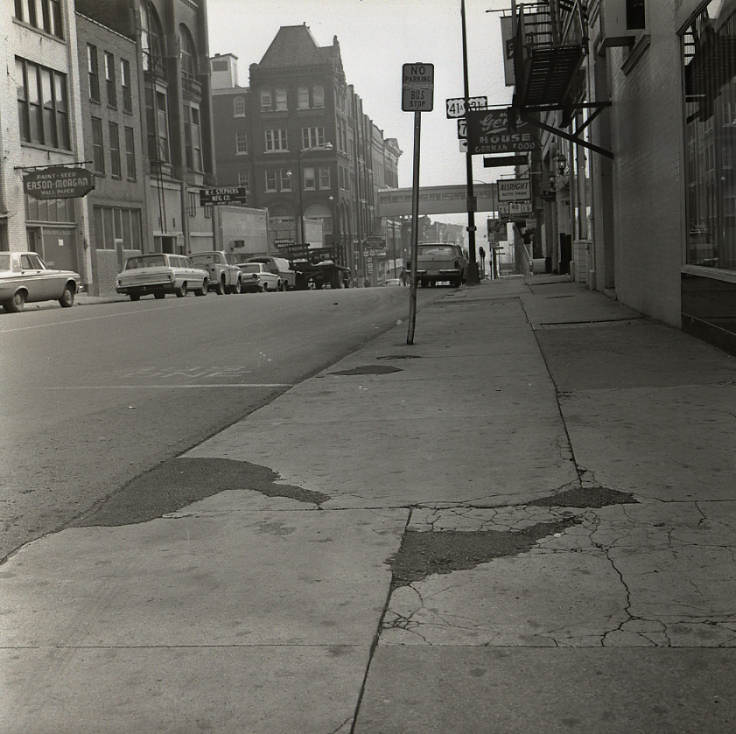
A photograph of the Gerst House restaurant, located at 315 2nd Avenue North, near the Courthouse and Public Square in downtown Nashville. This building and others were demolished during the urban renewal. The sign advertises “German food” at the popular restaurant. Pictured across the street are the Eason-Morgan paint and seed store and the W. E. Stephens Manufacturing Co. Inc., a shirt manufacturer.
#131 Nashville City Market House, 1941
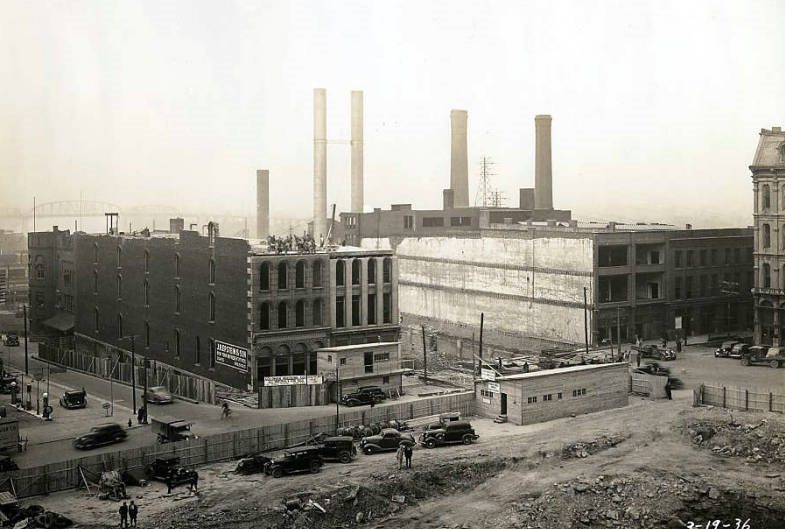
Plans for the new building were submitted by architect Henry C. Hibbs. Upon approval of Hibbs's design, the engineering firm Foster and Creighton was awarded the construction contract in the fall of 1935. (1) Demolition of existing buildings began the process of preparing the site for a new building. (2) The framework of the market house dome appears to be nearly complete in this October 1936 photograph. To the right of the dome, the construction of the new Davidson County Courthouse can be seen in this view. (3) With the building nearing completion, workers concentrate on the dome that sits atop the center of the structure. (4) An interior view looking north into the building, dated December of 1936, shows the concrete framework and exposed brick outer walls. (5) Just 3 months later, a northerly view shows the newly completed interior. (6) A similar view of the south end of the building shows the front, center entrance. (7) Market trucks and delivery vans are doubled-parked in the street in front of the market house, while several gentlemen linger near the entrance to the Market House Café located at the west end of the building.
#132 Ferro Enamel Company Plant, Nashville, Tennessee, 1946
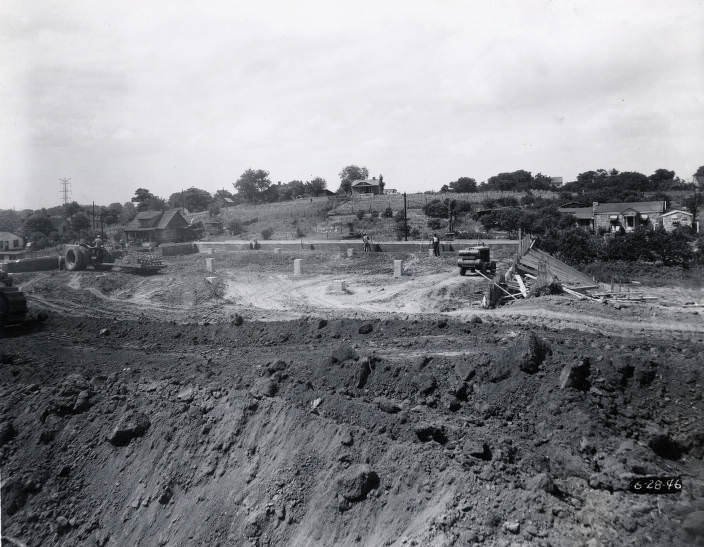
By 1948, the Ferro Enamel Corporation, a Cleveland, Ohio producer of vitreous porcelain enamels and allied products had opened its new clay processing plant in Nashville. There was an increased postwar demand for home building materials in the years after WWII. The consulting engineers on the project were the Foster & Creighton General Contractors. The Foster & Creighton construction contracting firm was founded in 1885 by Wilbur F. Foster and Robert T. Creighton, who had both served as City Engineer of Nashville.


